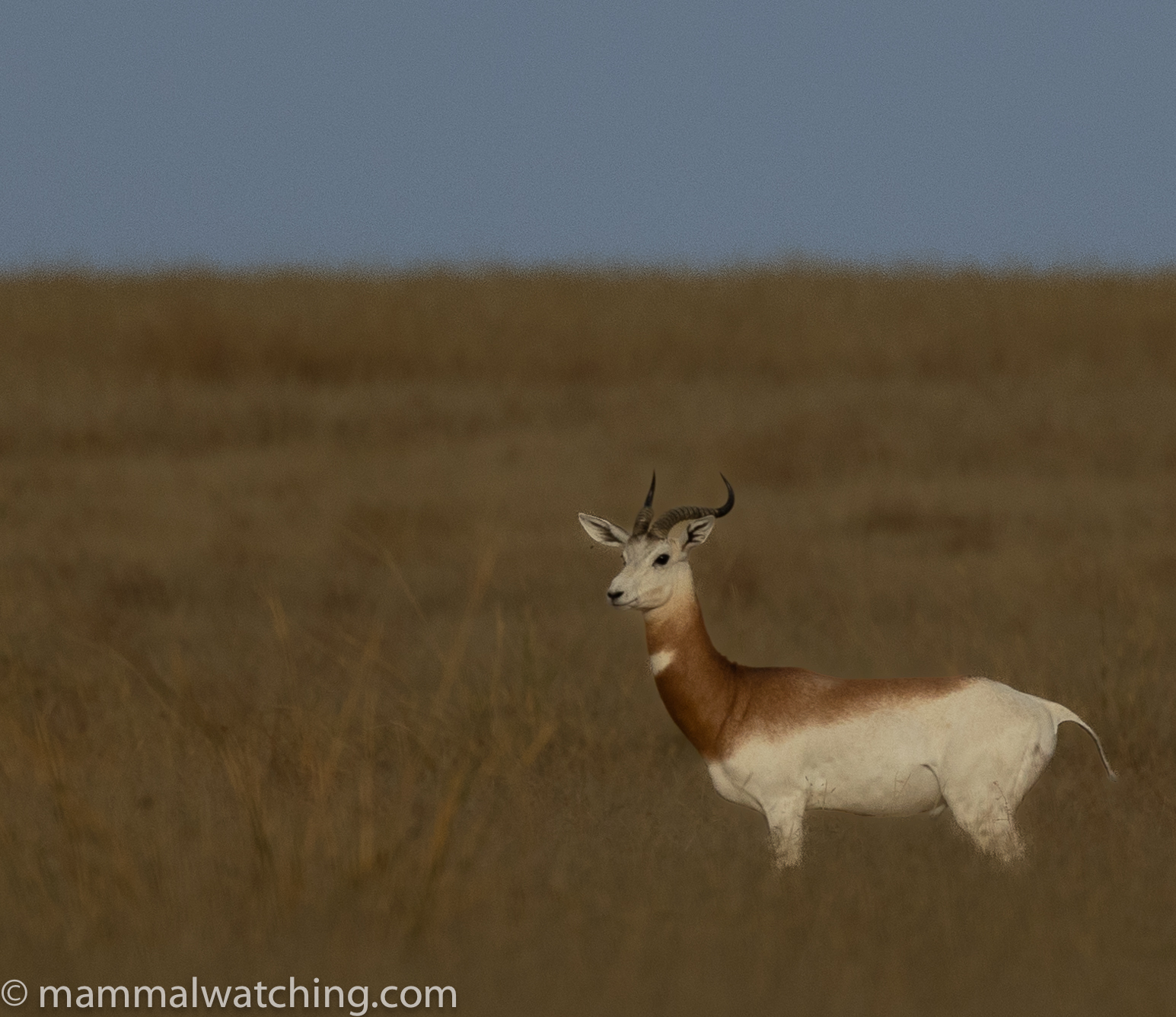
Chad: Ennedi, Ouadi-Rimé & Zakouma, 2023
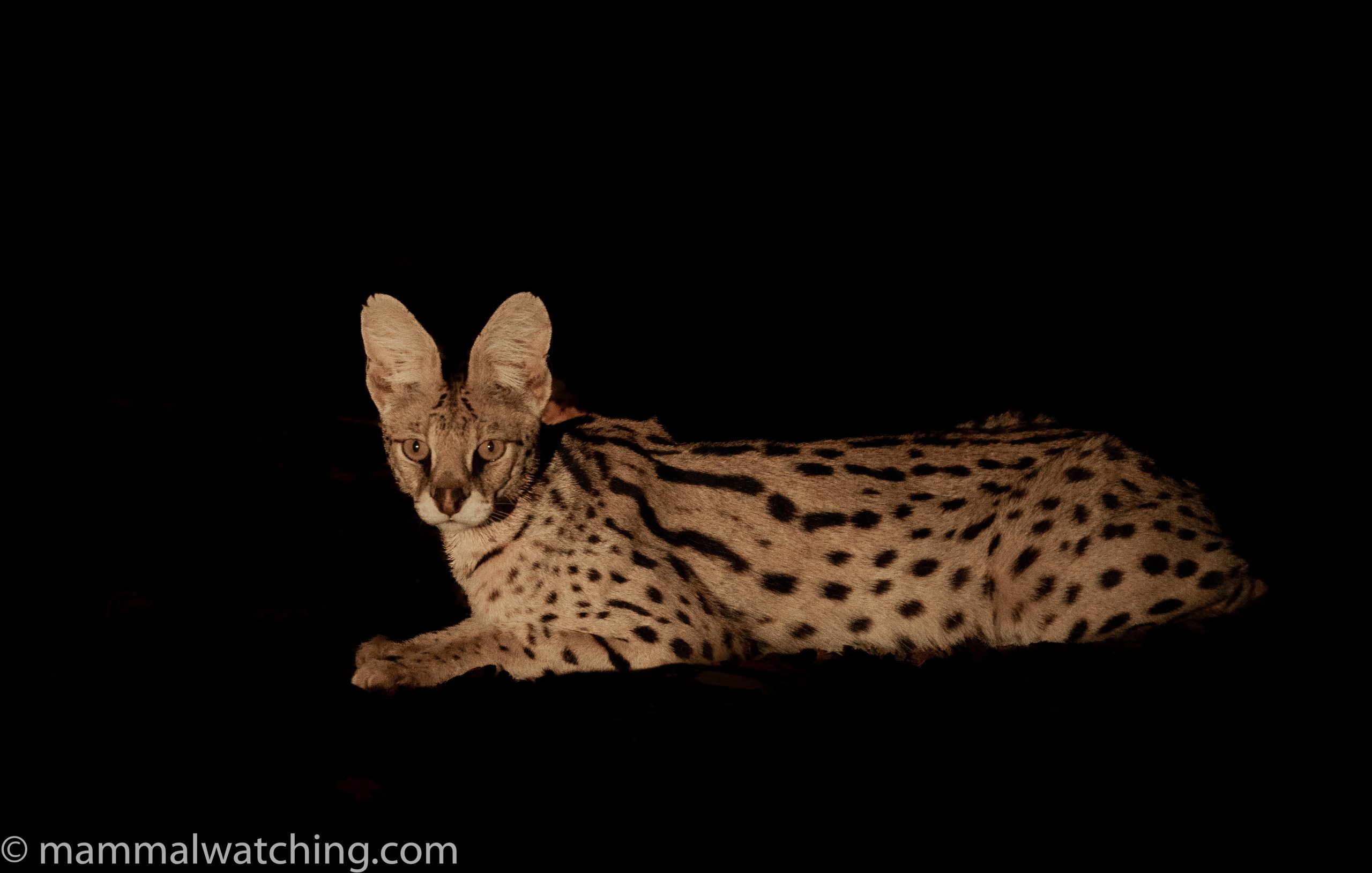
Serval, Leptailurus serval. Zakouma National Park
Until a few years ago Chad was far off of my mammalwatching radar. But then I saw some pictures from Zakouma National Park of very large herds of Buffalo and Elephant, surrounded by industrial quantities of water birds, and my interest was piqued.
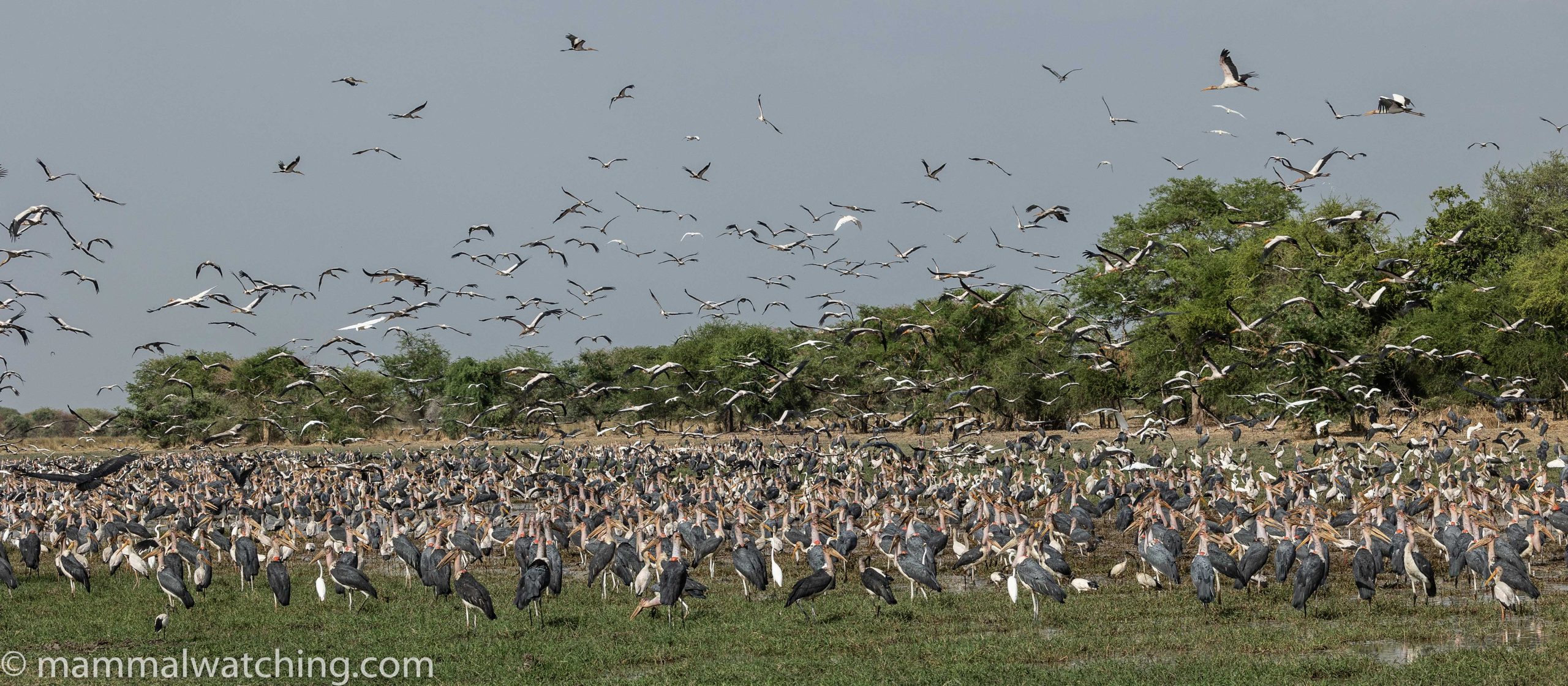
Marabou Storks mainly. Zakouma National Park
Over the next few years the destination climbed very rapidly up the ‘Where to Mammalwatch’ chart. I could resist no longer. I emailed Tom Clode at Pictus Safaris about organising a group trip to take in the spectacle of Zakouma National Park’s wildlife in the south of the country as well as the superb Ouadi-Rimé Ouadi-Achim Faunal Reserve on the edge of the Sahara and the mind-boggling scenery of the Ennedi Massif.
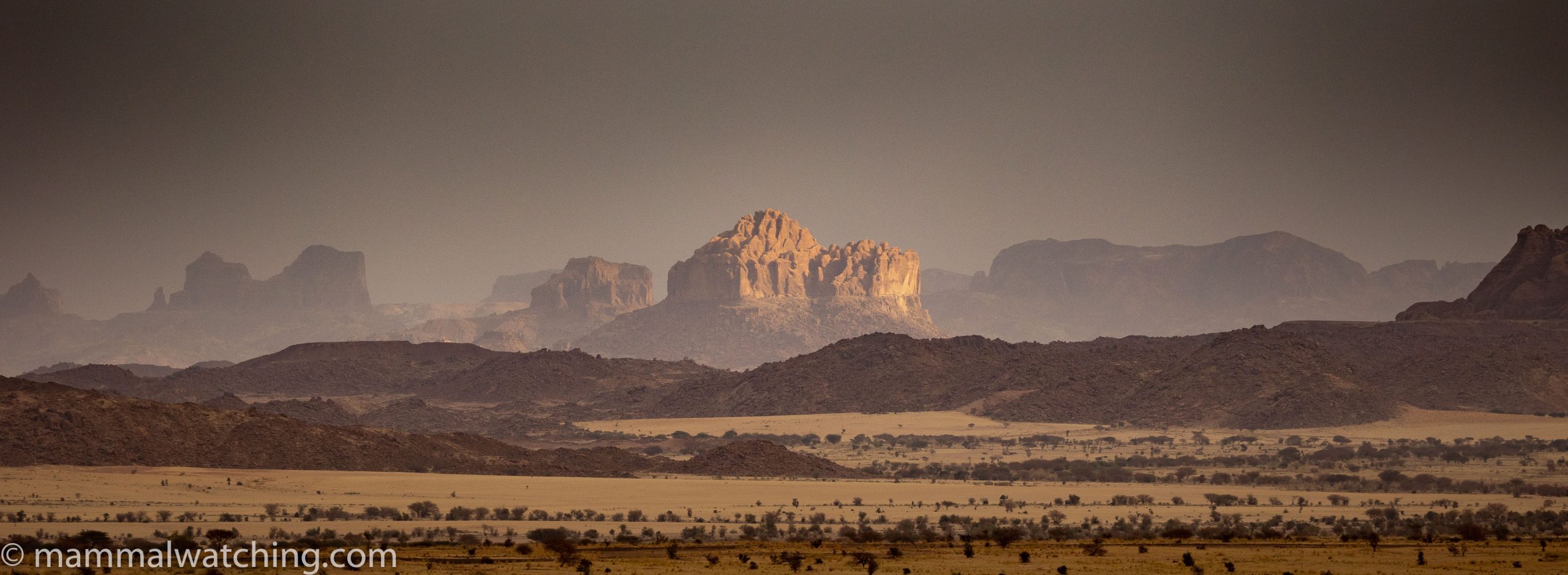
The Ennedi Massif
Organising such a trip is no easy task. Chad can be a challenging place to travel through: logistics are tough, roads non-existent and security can be a concern. But Tom was not afraid of the challenge and came up with a three-week itinerary that seemed hard to fault. And so in March 2023, six of us – Nicky Dunnington-Jefferson, Brendan and Dan Nugent, Jo Setchell, Ian Thompson and I – met up with Tom in N’Djamena, Chad’s (or Tchad’s) capital, for a three-week expedition.
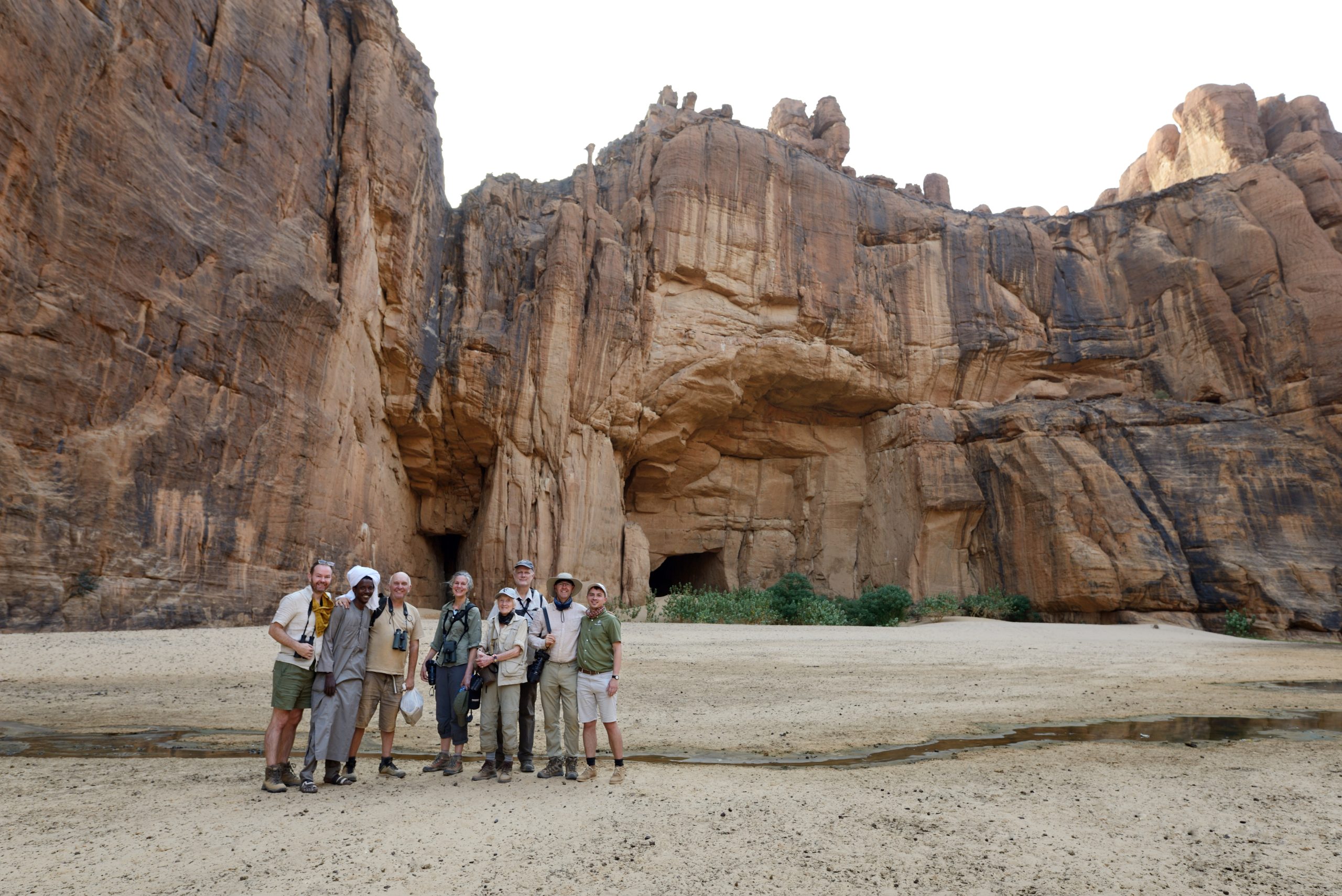
Our group plus Moussa from African Parks in Ennedi. Photo Dan Nugent
Where and When to Go?
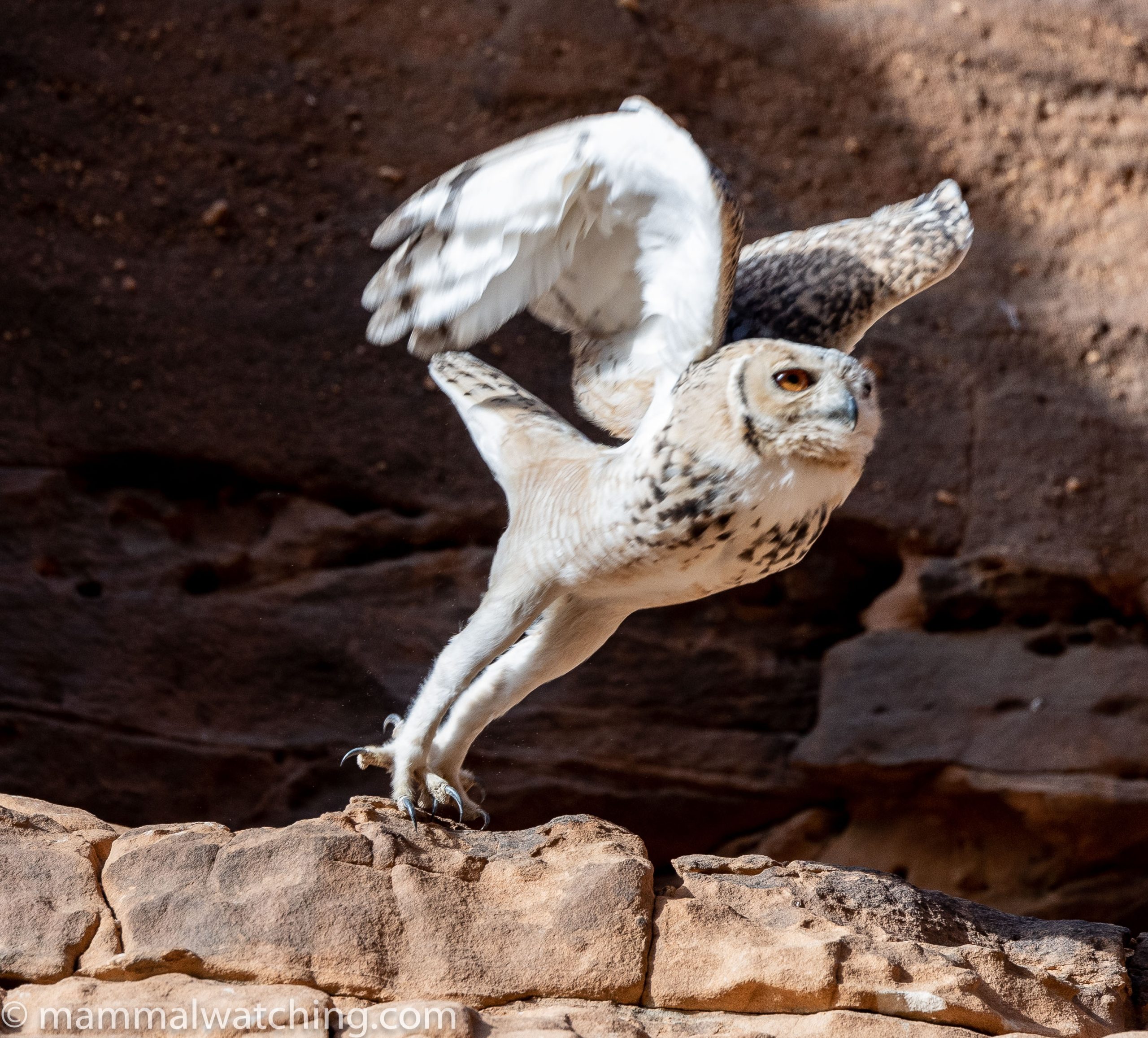
A Pharaoh Eagle Owl takes flight in Ennedi
We visited three areas. First was the Ennedi Massif, in the Sahara, a sparsely populated desert with stunning rock formations. The scenery is about the best I have ever seen, although this was the least interesting of our three destinations from a mammalwatching perspective. A few Aoudad cling on in the region but these are very unlikely to be seen unless you are looking for them from the air while flying over mountain tops.
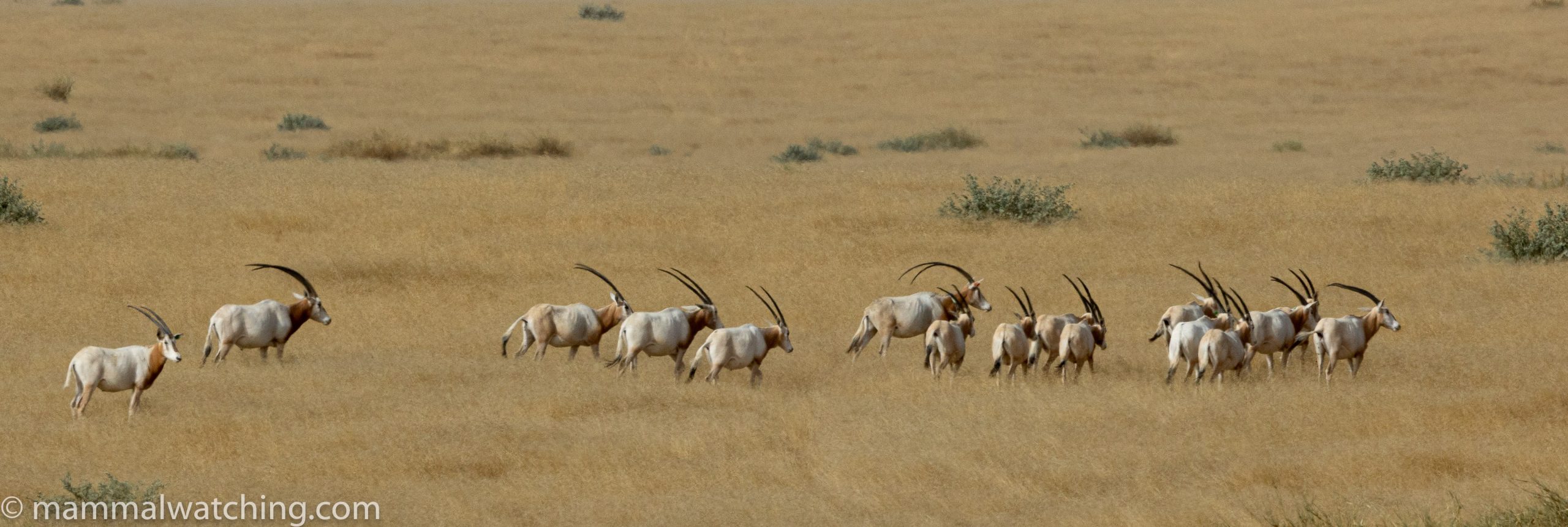
Scimitar-horned Oryx (Oryx dammah), in Ouadi Rimé
The Ouadi-Rimé Ouadi-Achim Wildlife Reserve, the size of Scotland, is one of the largest reserves in the world. Managed by Sahara Conservation, the reserve is still home to about 50 of the estimated 200 wild Dama Gazelles left in the world (with the others scattered across Chad, Niger and perhaps some still in the extreme east of Mali). While Scimitar-horned Oryx, which once lived in large numbers here, were successfully reintroduced in 2016 and are living wild again, with at least a second generation of wild-born animals roaming the reserve. Though the IUCN still lists them as Extinct in the Wild, the success of the project means their status is likely soon to be upgraded. Addax, which were known to have occurred in the northern parts of the reserve have also been reintroduced and are also living and reproducing in the wild though most are still found near Oryx Base Camp, about 30km south of the where wild animals were recorded. The parts of the park that we saw were mainly Saharan grassland.
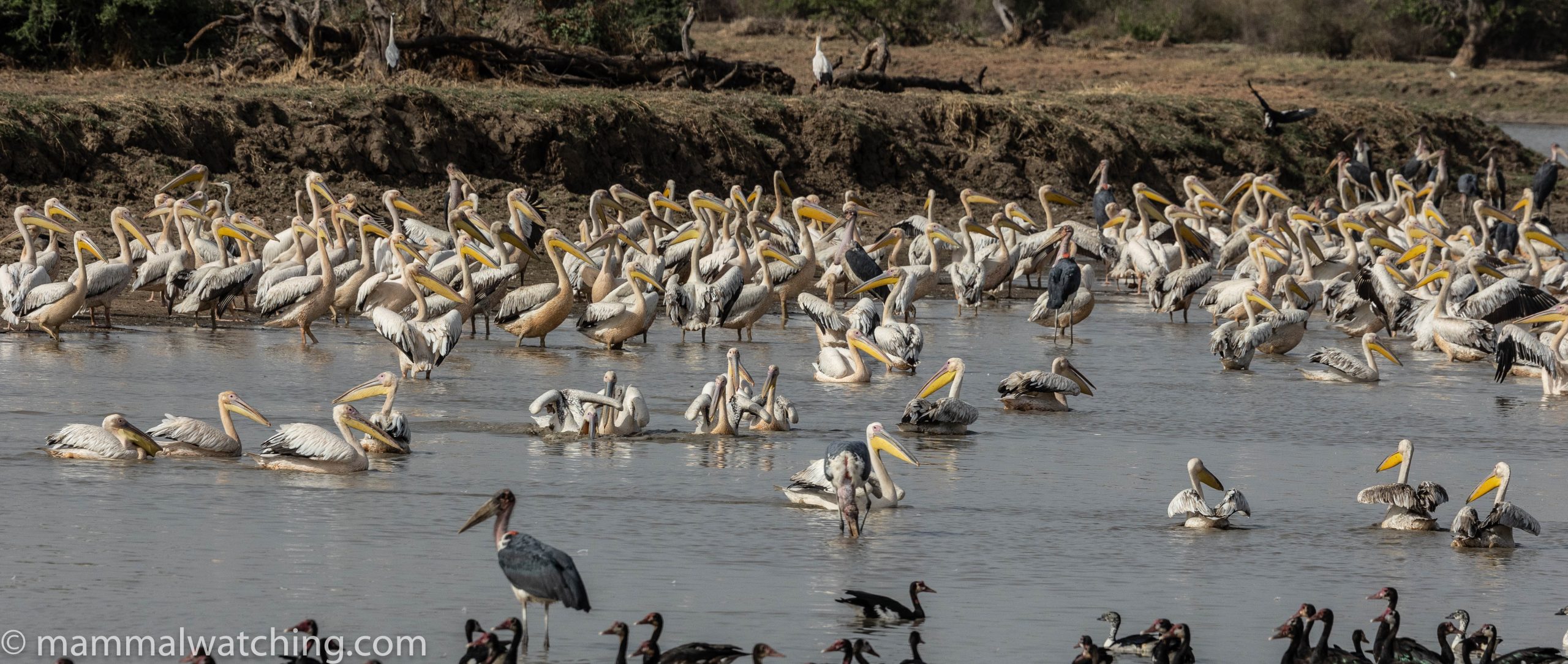
Mainly Pelicans, Zakouma
Zakouma National Park, in the south of Chad, is the country’s premier ecotourism destination. Since 2010, Zakouma has been managed by African Parks, a NGO, who are widely regarded as having done an excellent job, with poaching “virtually eliminated” since 2016. Populations of mammals and birds rebounded quickly and one of Zakouma’s biggest draws is the chance to see huge congregations of wildlife especially at the end of the dry season.
Most tourists visit Chad during the winter and early spring before the rains begin, which is usually towards the end of May. Visiting Zakouma in April and May ought to mean the best mammalwatching but it also means daytime temperatures will be in the 40s. True, it’s a dry heat, but it is still hot. Night time temperatures were more pleasant, and by 4am I was reaching for a sheet to cover myself. Only on our very last night was it unpleasantly warm at night.
Ennedi and Ouadi-Rimé can get quite chilly during winter nights we were told, though I am unsure whether that would be better or worse for mammalwatching. On balance I think it might have been better to have visited a month or two earlier. We may have missed out on some of the spectacular flocks of birds in Zakouma, but we may also have had more success in the desert. It was pretty windy during many of our nights in Ouadi-Rimé in particular, which may have put a dampener on some of the nocturnal mammalwatching. And we neither saw – nor caught – any small mammals at all in Zakouma around Tinga Camp, possibly because they were aestivating until the rains came.
Other Practicalities
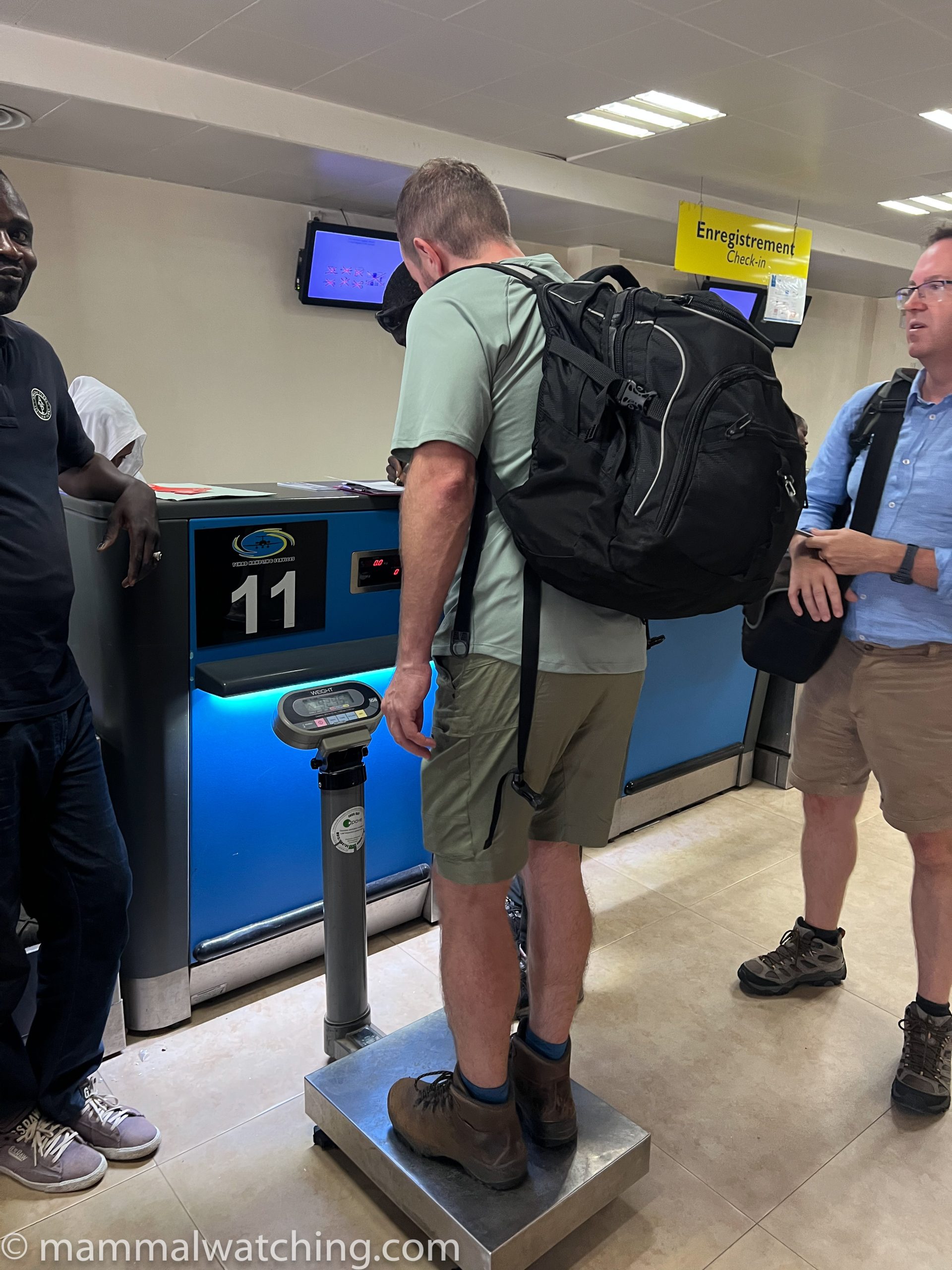
The weigh-in
Getting a visa for Chad seemed complicated. The country has relatively few embassies and after the stress of my 11th hour visa for my trip to Equatorial Guinea in January I was apprehensive. But Chad’s embassy in the US was very efficient and I was given a visa in a few days. Even though we had understood there were rules on where you could apply for visas, based on your country of residence, I am not sure these are applied. For instance, the Australians on our trip were told to apply through the Chadian embassy in China. Instead they sent their passports to a visa service in Washington DC who were able to get visas issued there in a matter of days.
Packing for the trip was a challenge. We’d initially been told we could bring 20kg of luggage in total if we wanted to be sure our charter flight didn’t run out of fuel. This was later relaxed to 30kg, but even that was a struggle for me when my batteries and camera gear alone weighed 15kg. We knew we would have access to electricity during our last week in Zakouma, but otherwise power was not guaranteed. So we had to pack enough camera and flashlight batteries to cover the first two weeks. That, it turns out, is a lot of batteries. In the end we were able to charge our gear in Ouadi-Rime, plus on many the long drives there was a chance to charge gear using vehicles’ cigarette lighter sockets.
Most of us brought sleeping bags. It was too hot to use them. I used a cotton liner most nights, but only after 4am. And in any case bedding was provided.
Although my US cell phone plan meant I should have been able to access data in Chad it didn’t work. Tom bought me a local SIM which worked very well when we had reception (which was in most of the larger towns we passed through). Tinga Camp has rather expensive Wi-Fi that wasn’t working for half our stay. Sahara Conservation also had Wi-Fi which they generously allowed us to use.
I’d imagined the three weeks would be largely beer-free but Tom, our hero, made sure this was not the case and was able to source beer (even during Ramadan) in many of the towns we drove through. Boom.
Itinerary
This really was three trips in one. Each destination is worth a week in its own right and each was very different.
We met in N’Djamena. The Radisson Blu hotel was comfortable and I could spot Hippos from my balcony, a few of which cling on in the Chari River behind the hotel. They were, as Tom predicted, the only Hippos of the trip.
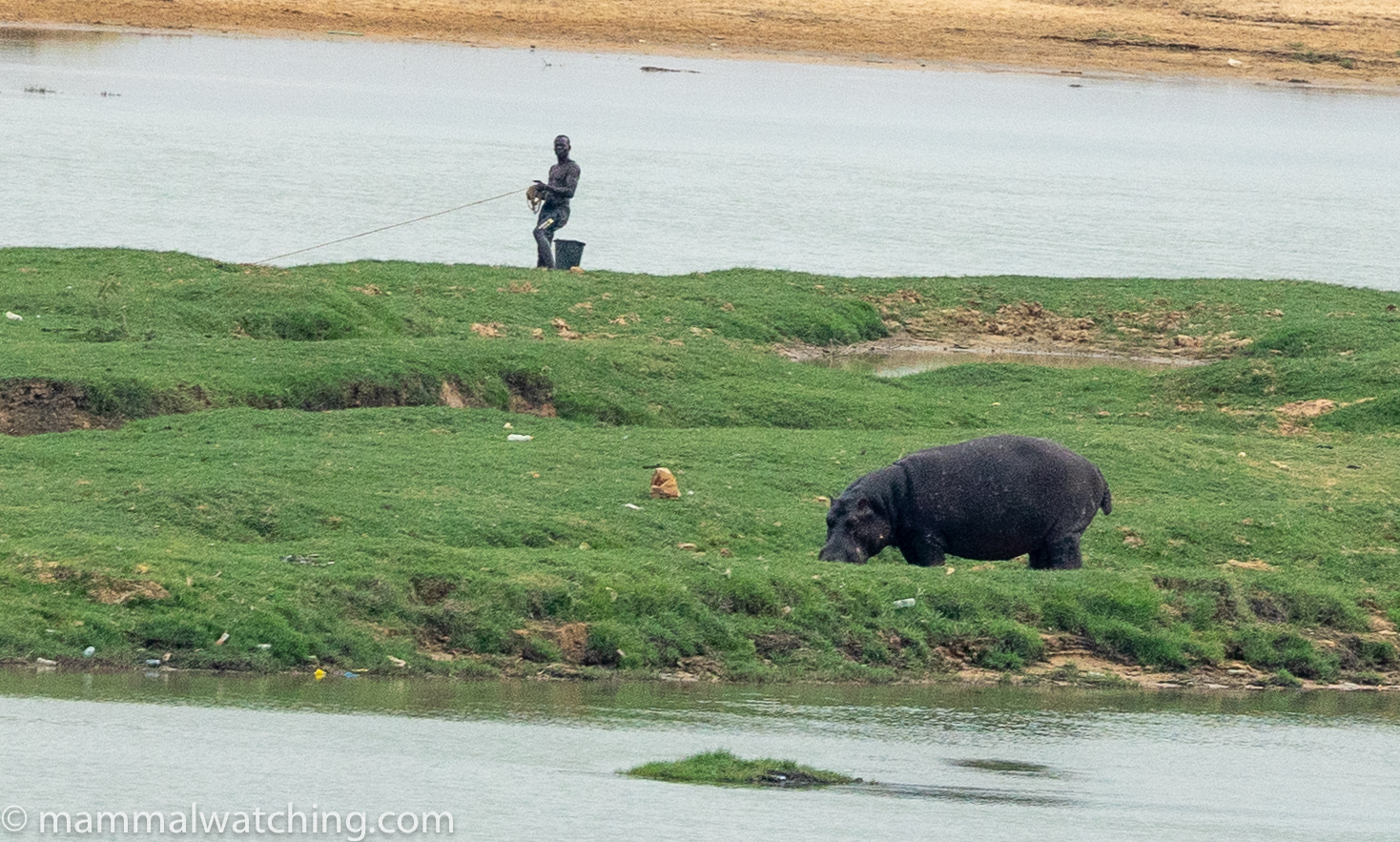
Hippopotamus (Hippopotamus amphibius), from my balcony of the Radisson Blu
In Chad it is a long drive from everywhere to anywhere. The higher end trips fly from place to place but obviously that gets expensive so Tom set us up with one charter flight, from N’Djamena to the Ennedi Massif. We were able to share the cost of the flight with another group – organised by Pictus for Royle Safaris – who were following our itinerary in reverse order. They would use our plan to fly back from Ennedi to N’Djamena at the end of their tour.
In Ennedi we planned to camp for five or six nights in the semi-permanent Derde Camp, after which we would drive to the Sahara Conservation’s Oryx Base Camp (a research camp), the HQ of the Ouadi-Rimé Ouadi-Achim Wildlife Reserve. After a few nights there we’d make the long drive south to Tinga Camp in the heart of Zakouma National Park for a week, and then drive back to N’Djamena.
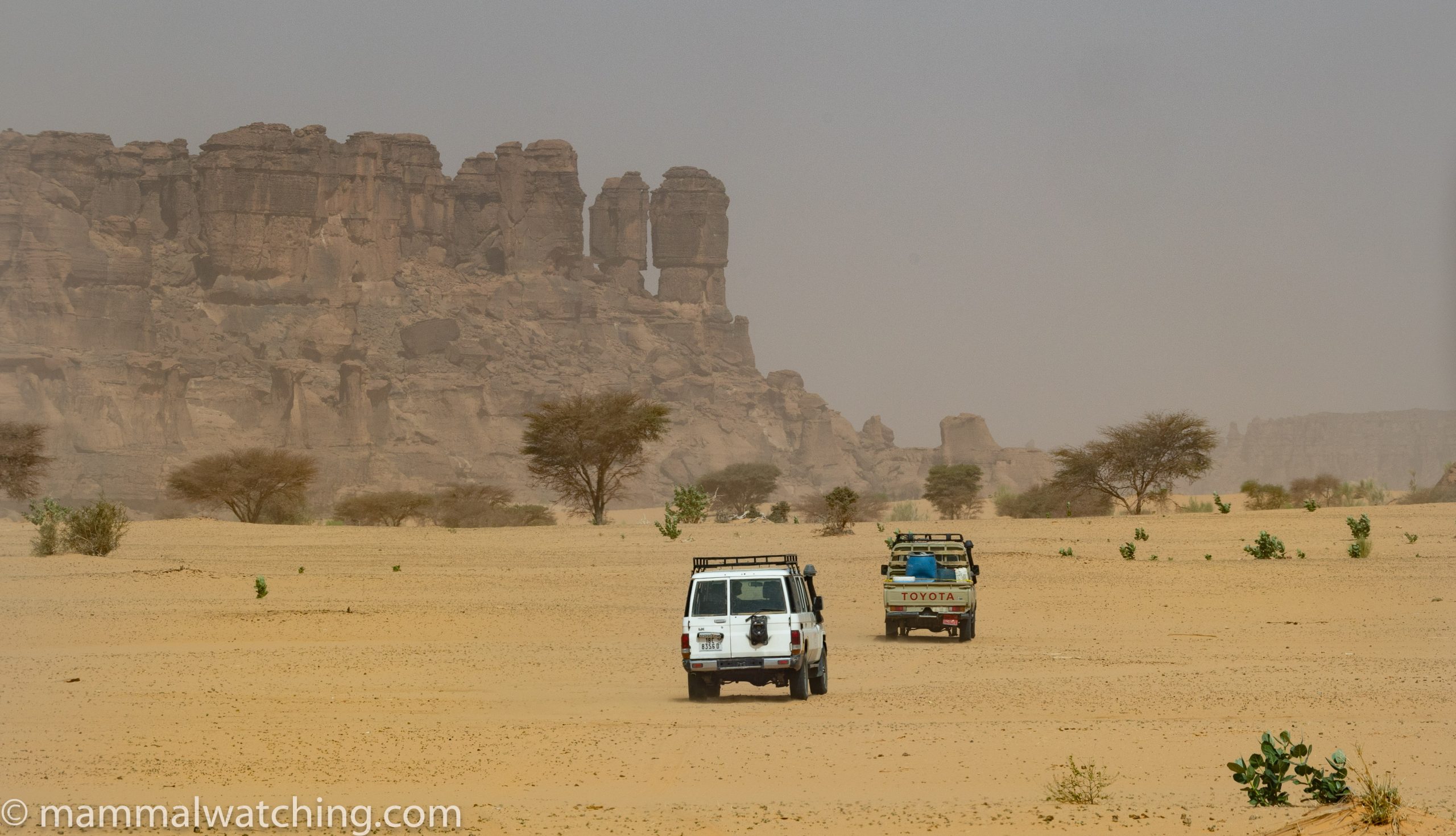
Blazing a trail across the Ennedi Massif
But the itinerary needed to be flexible as driving times can vary wildly from year to year, even from month to month. A 20-hour drive in February can be a 10-hour drive in March. Or vice versa. And so we built time into our trip to allow for this.
We were camping everywhere other than at Tinga Camp in Zakouma, which, despite the name, is a set of small chalets. Tom described the camping set up as “basic camping”. It was more like basic glamping. This surprised us all, including Tom.
Key Mammals
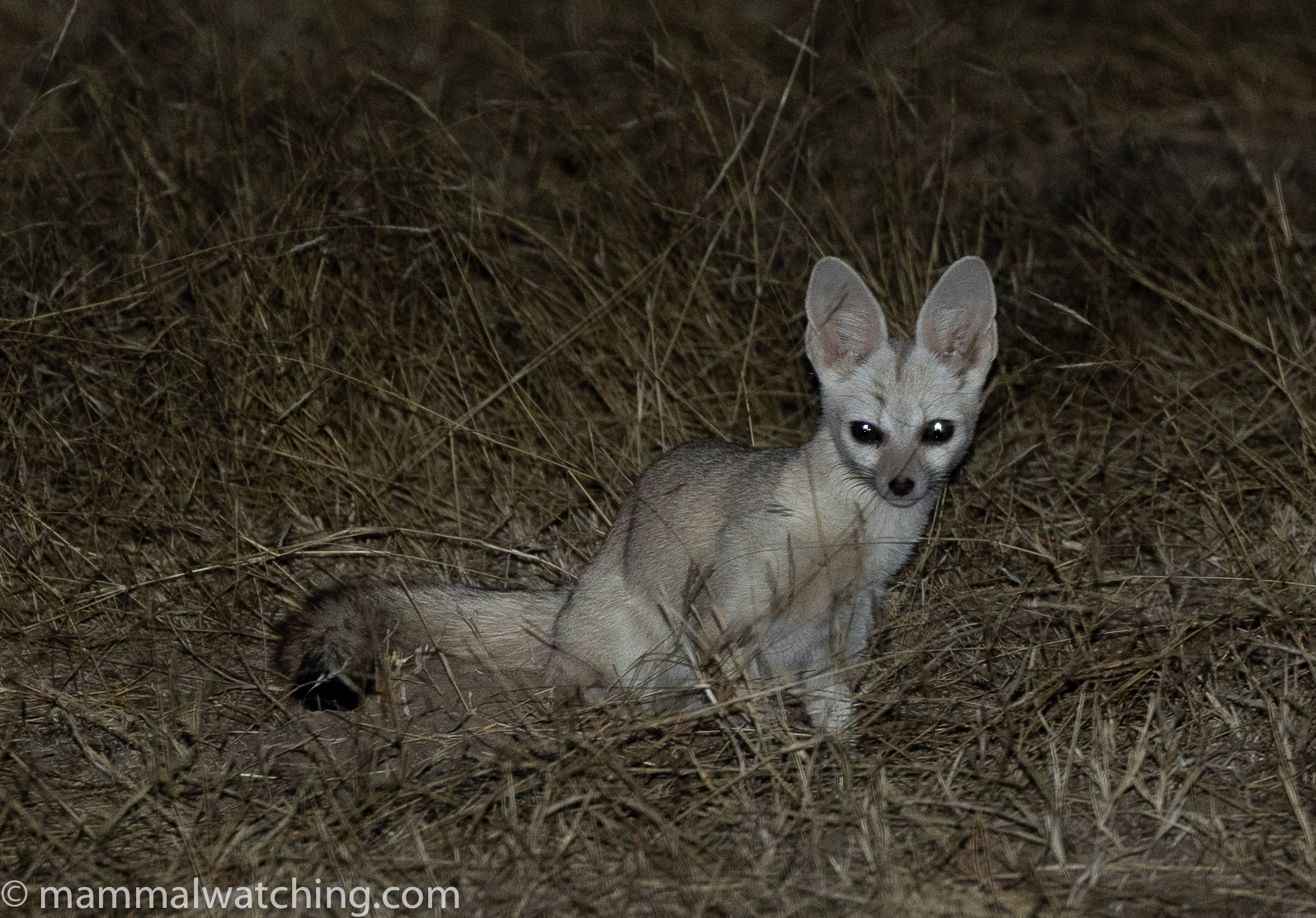
Pale Fox (Vulpes pallida), Ouadi-Rimé
None of us were taking this trip to see a ton of new mammals. Anyone who has spent time in East Africa will likely have seen many of Chad’s mammals. The real draw here, for me at least, was the scenery, the adventure and the very large numbers of animals we might see in Zakouma. But of course there were some key mammals I wanted to see: Pale Fox, Dama and Red-fronted Gazelles, Libyan Striped Polecat and Red-flanked Duiker were all on my hit list. I also wanted to see the reintroduced Scimitar-horned Oryx and Addax in the Sahara – which I knew ought to be easy – and then decide for myself whether they felt ‘wild enough’ to be tickable. Other than that I expected a few new rodents and bats making an appearance and was hoping to get better views of species like Striped Hyena that I’d seen only once.
The Ennedi Massif
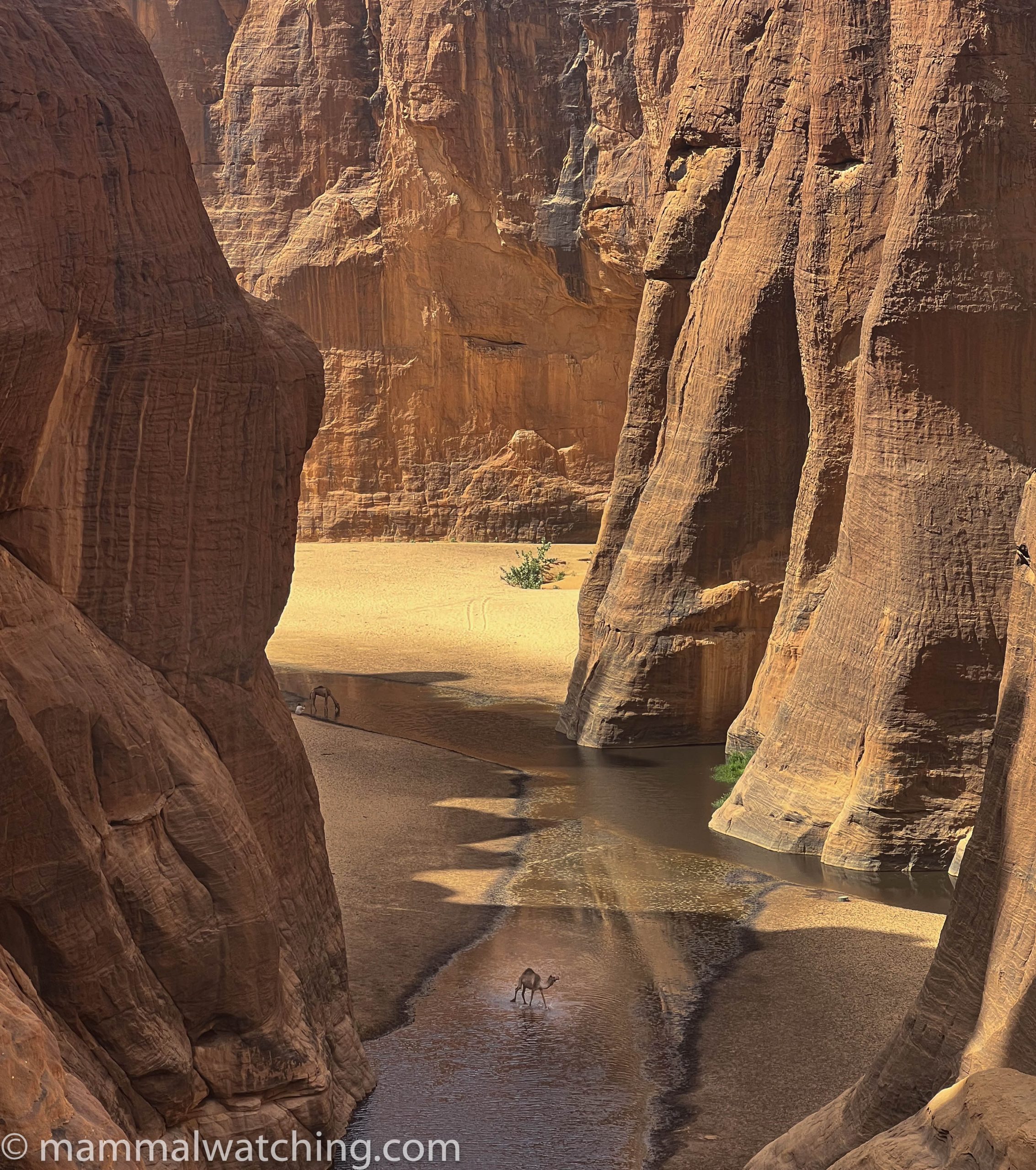
Guelta d’Archei
It took about three hours, via a refuelling stop at Abéché airport, to reach the airstrip at Fada. The highlight of Abéché – Chad’s 4th largest city – was the Black Rat that Tom saw running behind the toilet block.
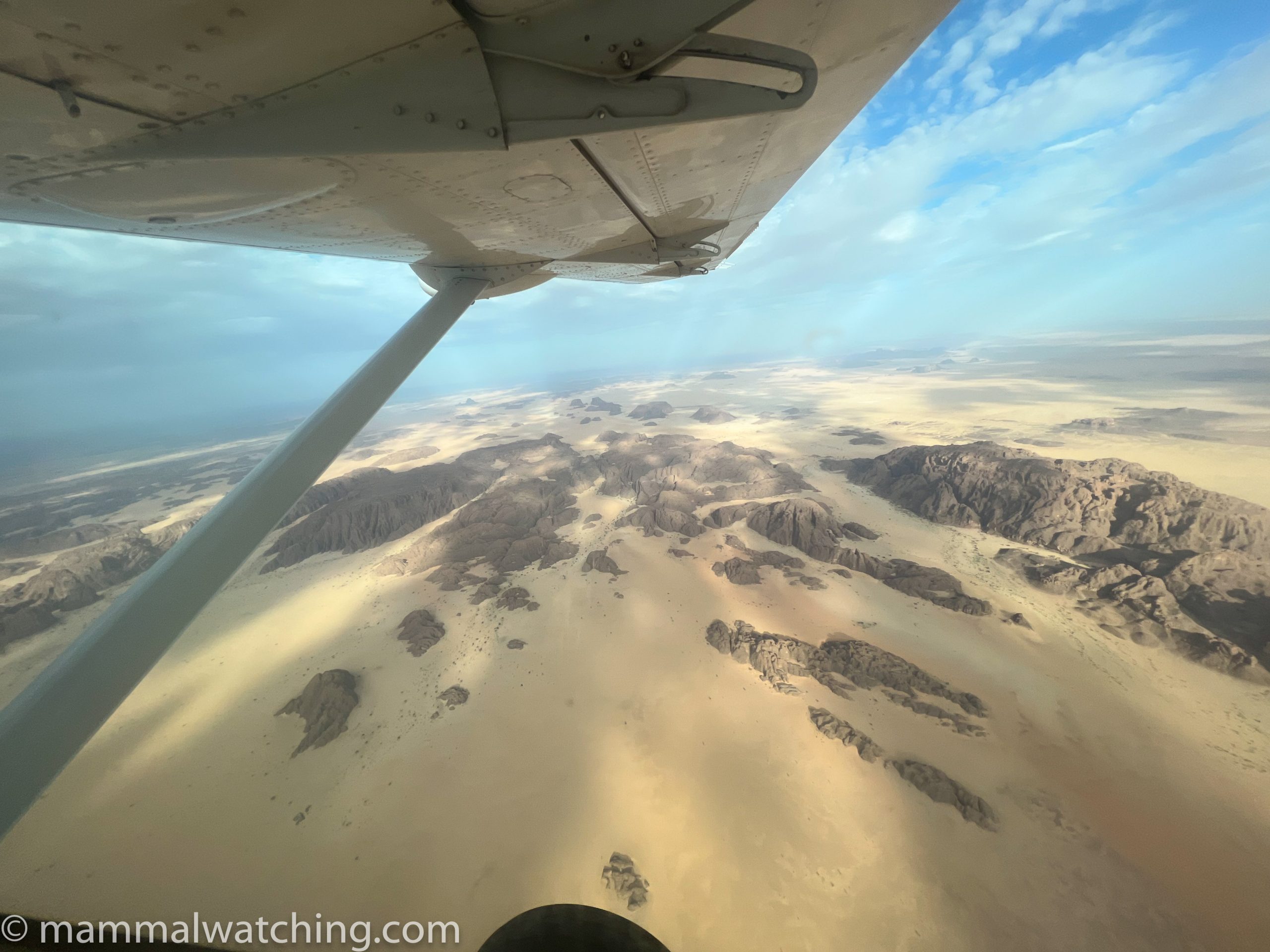
Between Abéché and Fada. Aoudad habitat
The flight was dramatic. Fada airport was not.
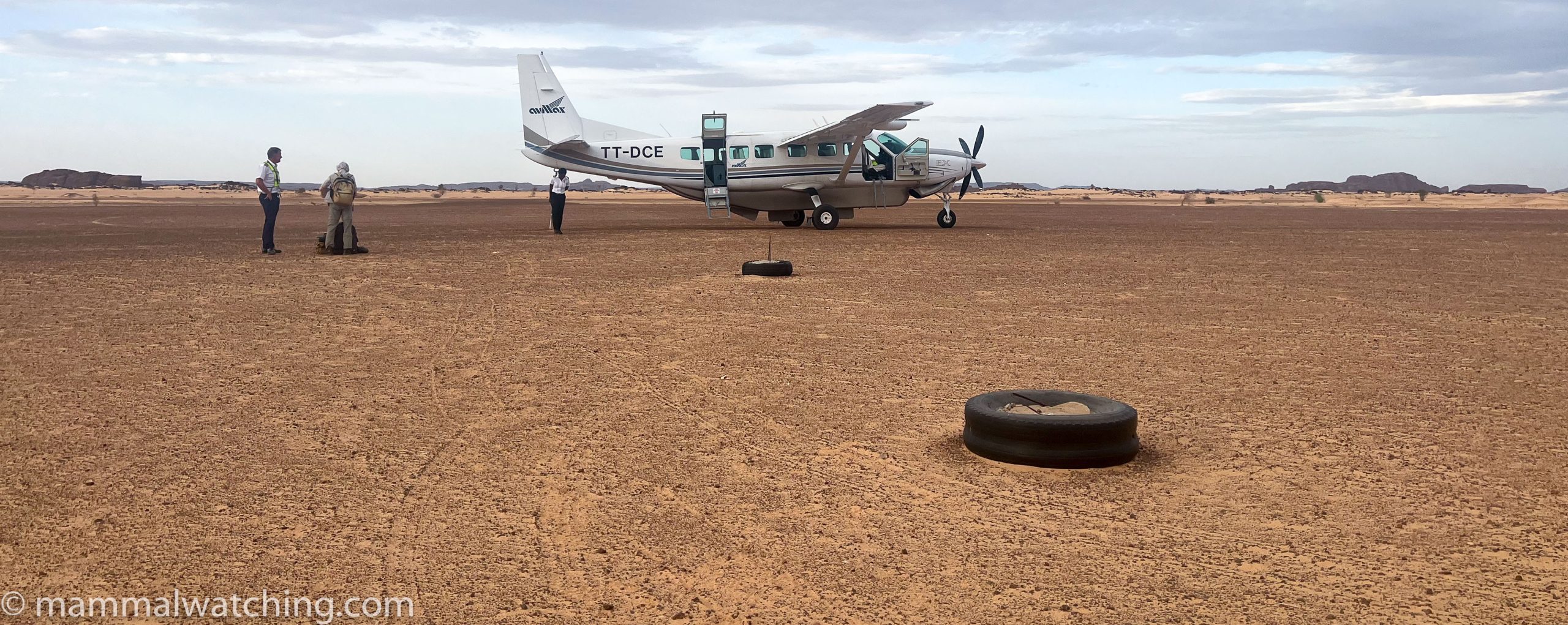
At Fada we had a couple of minutes to say ”Hello’ to a Martin Royle and his dusty, sun-burned and wind-blown group before they boarded our plane to fly back to N’Djamena. And we met Adolpho, head of head of Eyte Voyages, and his team who would be looking after us for the next three weeks. We piled into the waiting Land Cruisers and drove for a couple of hours to reach Adolpho’s Derde Camp.
Derde Camp moves from year to year as Adolpho searches for the perfect spot but is usually in the same area. It was a stunning setting, and we each had our own safari-style tent, plus a communal sit down pit toilet and two showers. The food, we soon discovered was suprisingly good, as it was throughout our trip thanks to the chef who travelled with us. Some of the highights were fresh crèpes for breakfast most mornings and delicious soups every night.
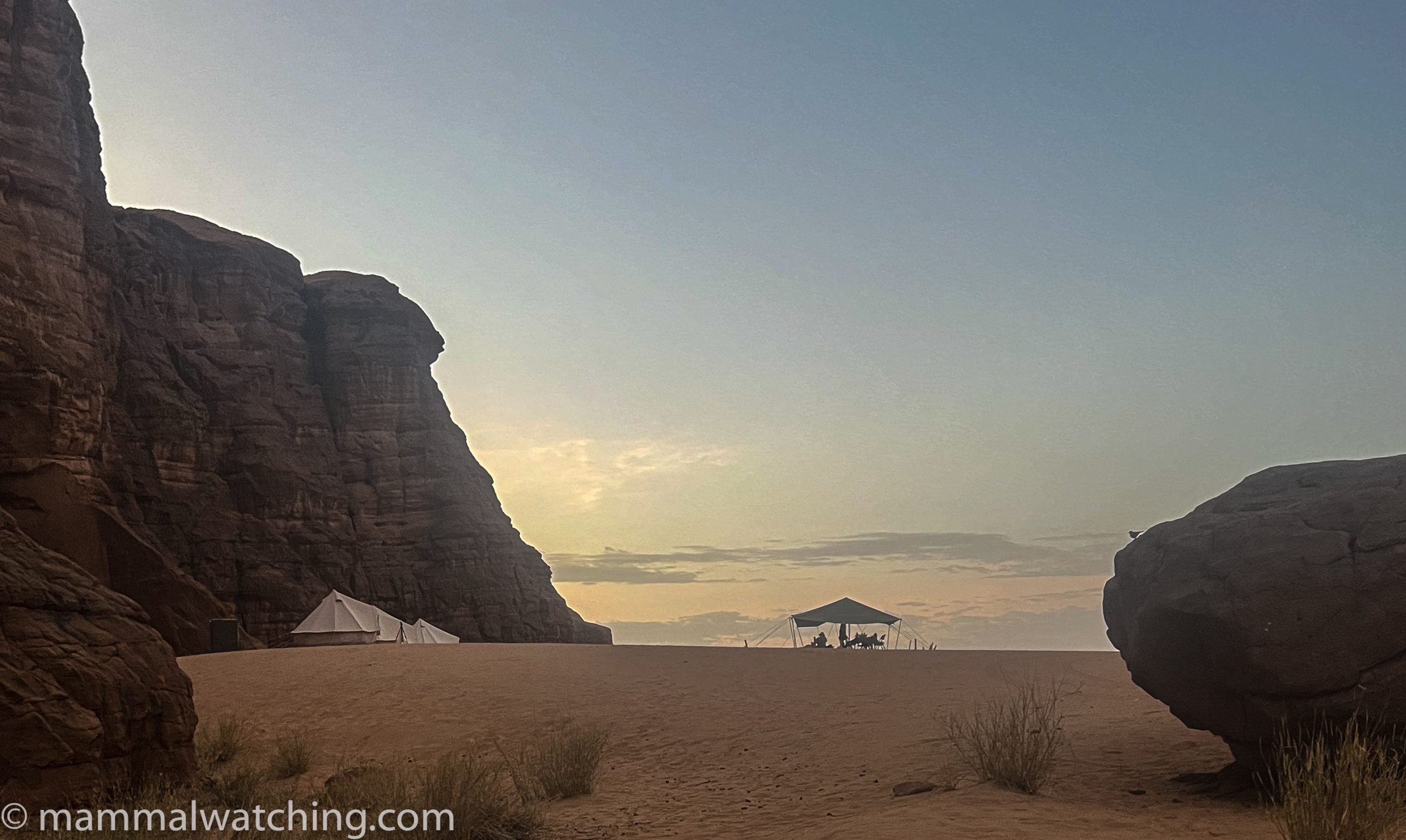
Derde Camp
I had contacted Chris and Mathilde Stuart about my trip in the hope they could introduce me to someone in African Parks (AP), the NGO who run Zakouma National Park. I wanted to ask for permission to trap small mammals when I was there, thinking this might be of interest to AP given that very little survey work had been done in Zakouma or even Chad. It was obviously of interest to me!
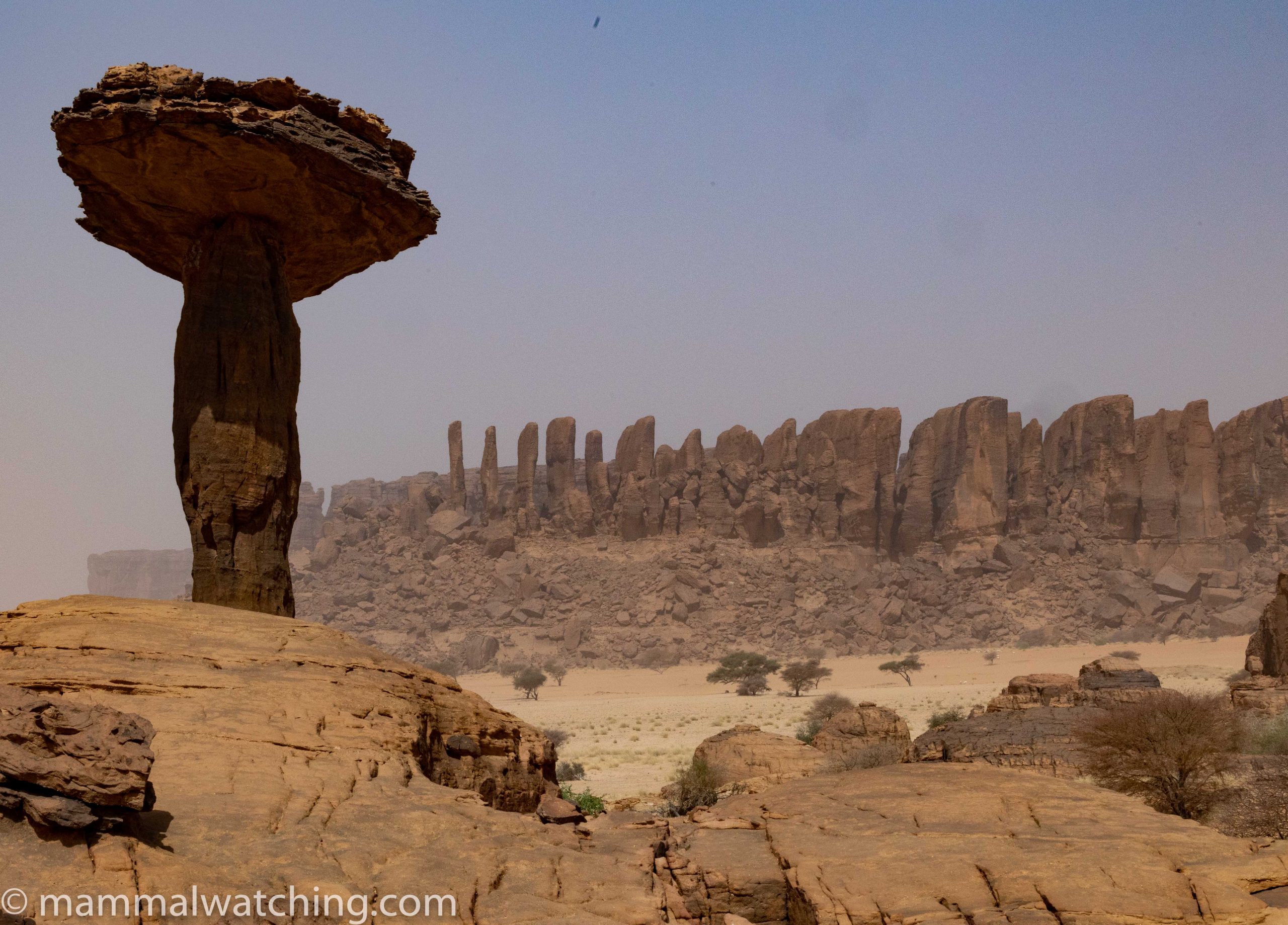
Not sure if this has a name. But for me it’s The Big Mushroom.
AP’s Zakouma team were very helpful in making that happen. They also introduced me to Robin Lines who works for AP in the Ennedi region. Robin too was super helpful: his team were running ad hoc fauna assessments across the region so he arranged for one of the biologists – Moussa Sougui – to join us at Derde for our stay. I think AP hoped Moussa might learn a little about small mammal trapping from me. He may have … but we definitely learned a great deal from Moussa about the flora and fauna of the region. He is a fabulous guy to spend time in the field with and great company too.
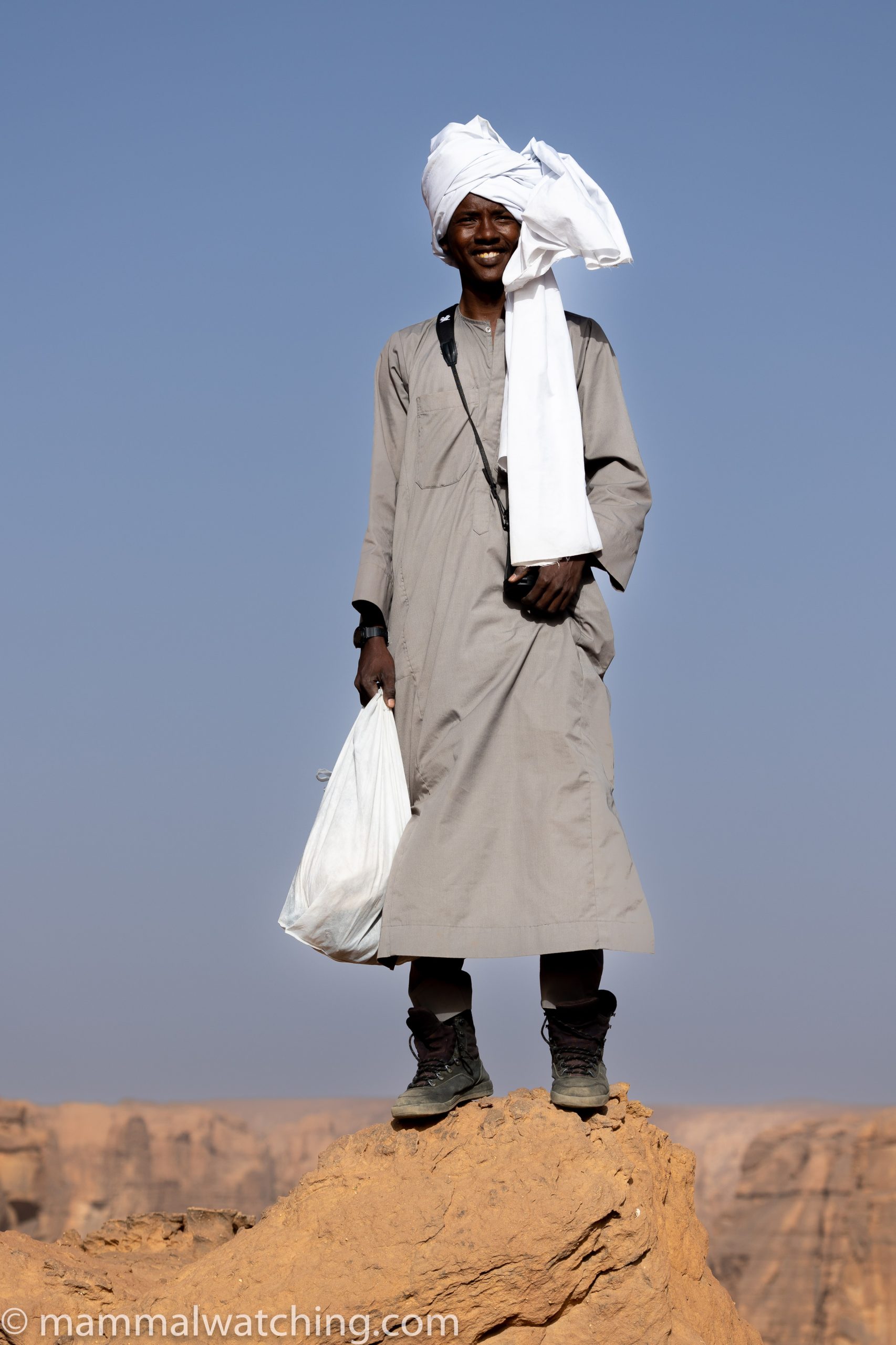
Moussa, always smiling
We spent our five days at Derde Camp taking scenic day trips to visit rock art and natural formations; it is impossible to take a day trip that isn’t scenic in this part of Chad. And we headed out for a couple of hours each night to spotlight for mammals. Ramadan started just after we arrived and we had worried it might complicate travel at night. But everything worked well thanks to Tom’s negotiations. We just needed to ensure that the hungry and thirsty team were back in camp at sunset so they could break their fast promptly.
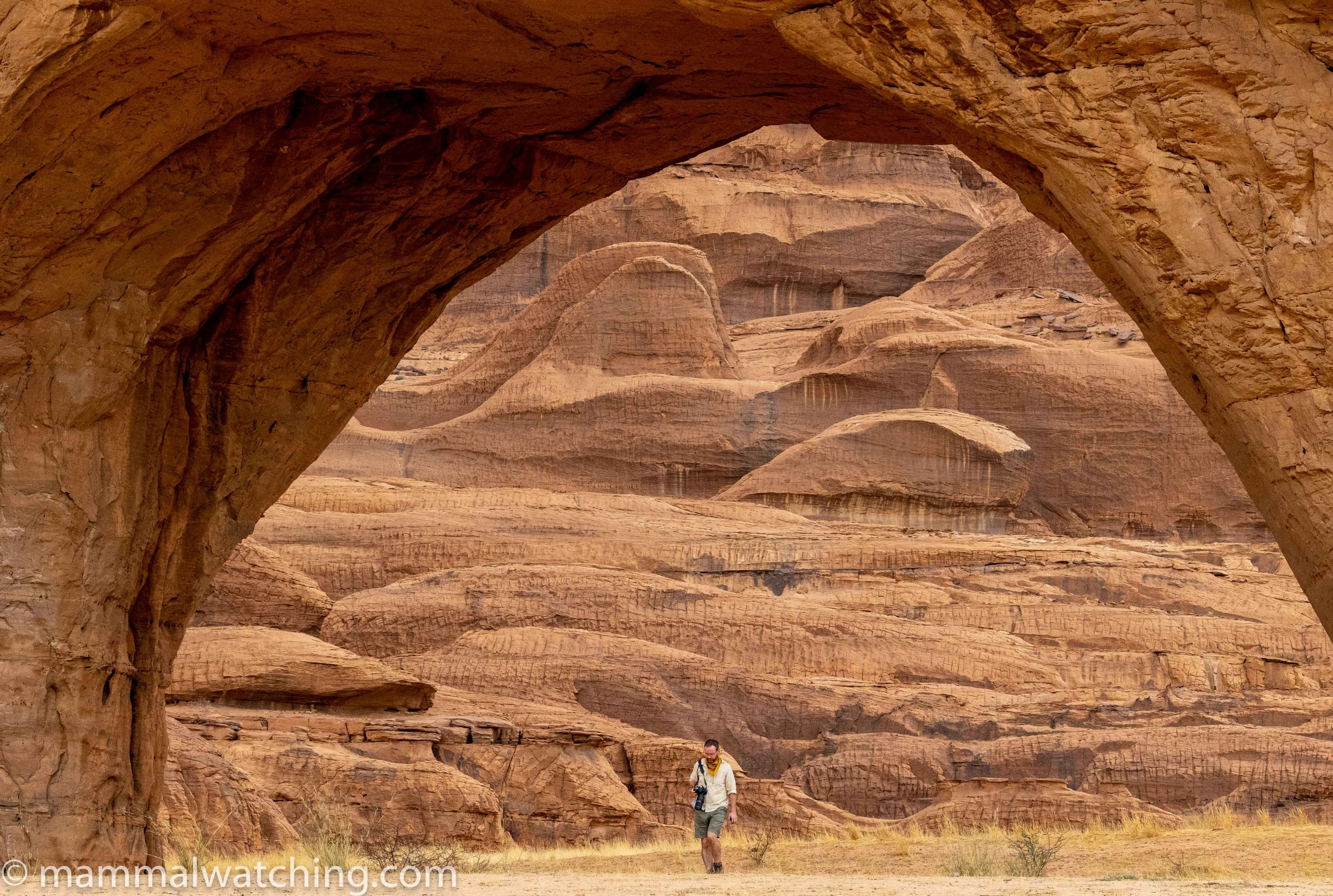
Dan Nugent
The area is, as you might imagine from the photos, riddled with caves. But though we investigated many the only bats we saw were in two ‘known’ bat caves, very close to Guelta D’Archei a famous site close to Derde Camp. Moussa and I set about about 40 small mammal traps every day near camp. Although the diversity of species was reasonable, the number of captures was surprisingly low. Indeed we saw very few small mammals running around after dark, save for a handful of jerboas. And yet when Martin Royle’s group had visited a few days earlier they had seen lots of stuff running around after dark. Perhaps the activity then had been triggered by a bit of rain.
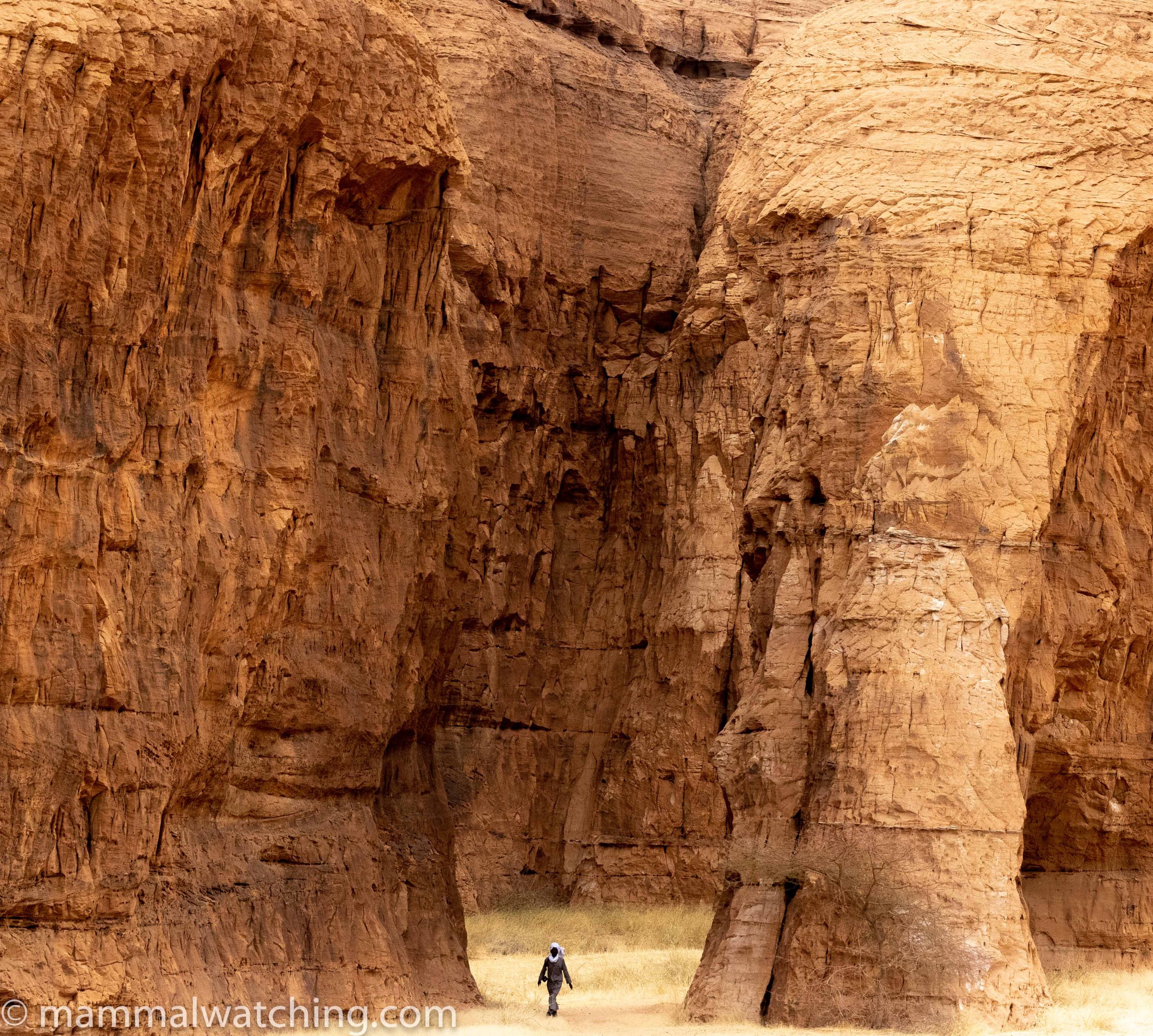
Small Mammal Trapping
I had authorization from African Parks to trap small mammals in Ennedi and was accompanied by Moussa, one of their biologists. They stressed the importance of taking proper safeguards to keep the animals well and also being sensitive of relationships with the local communities. You can imagine that while AP are working to reduce hunting in the region by the locals it would not be a good look for them to see a foreigner catching animals.
I have listed below the species I think Moussa and I caught but identification is tentative. I used a couple of books to help: The Mammals of Europe, North Africa and the Middle East by Aulagnier et al. And Jonathan Kingdon’s Mammals of Africa, Vol 3. The former is good for gerbil identification but doesn’t cover Chad. According to Kingdon’s book the following species occur in or near to Chad: Gerbillus amoenus/nanus, G. gerbillus, G. henleyi, G. nigeriae, G. pyramidum and G. tarabuli. So I focussed my forensic gerbil identification on these contenders. G. pyramidum seems to be larger than any of the species we caught but I think we caught the other species. See below.
Ennedi’s Mammals
During five days we recorded the following species.
Rock Hyrax (Procavia capensis)
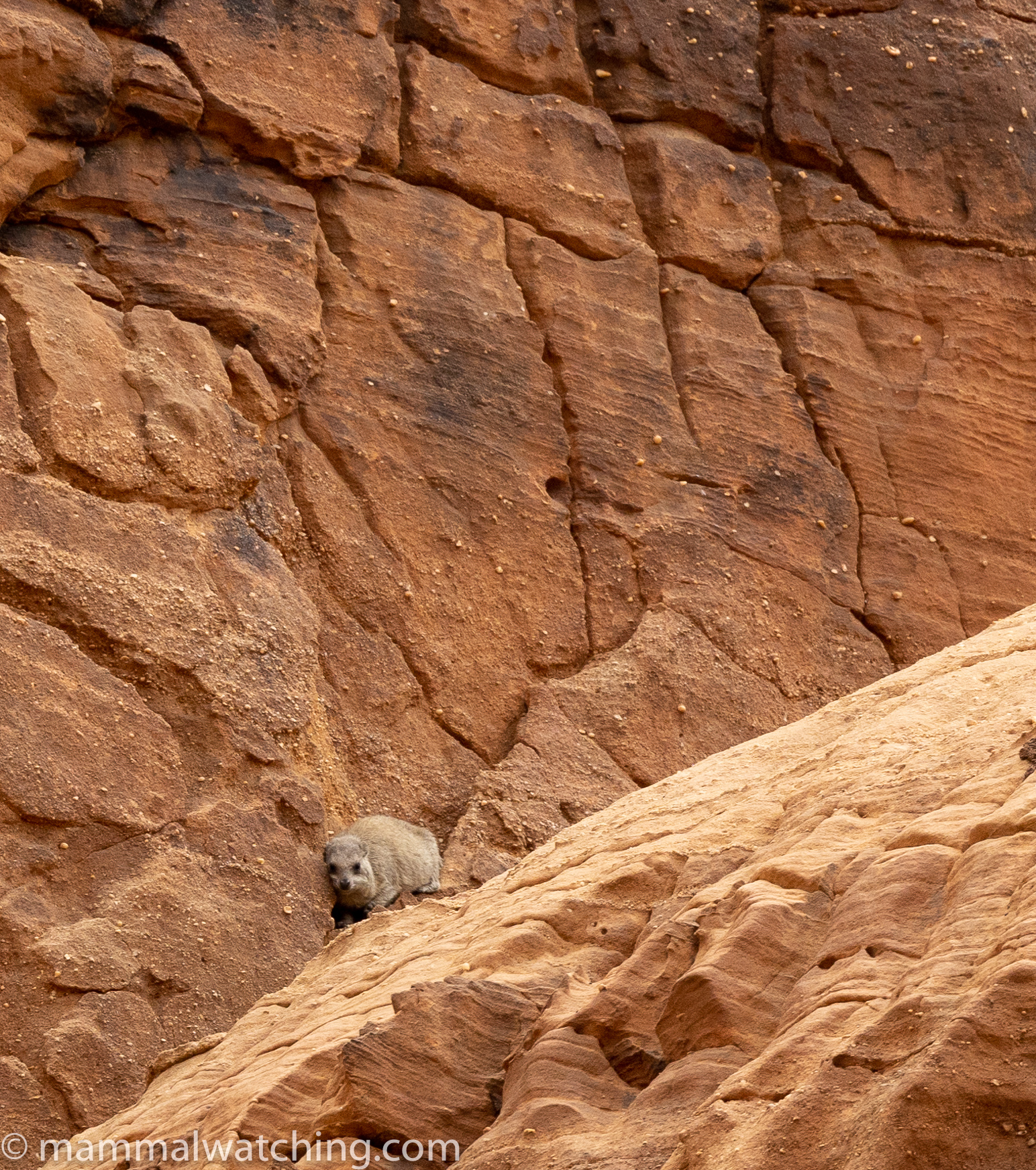
At least two hyraxes in separate locations and I am pretty confident we would have seen more if we were searching for them.
Cape Hare (Lepus capensis)
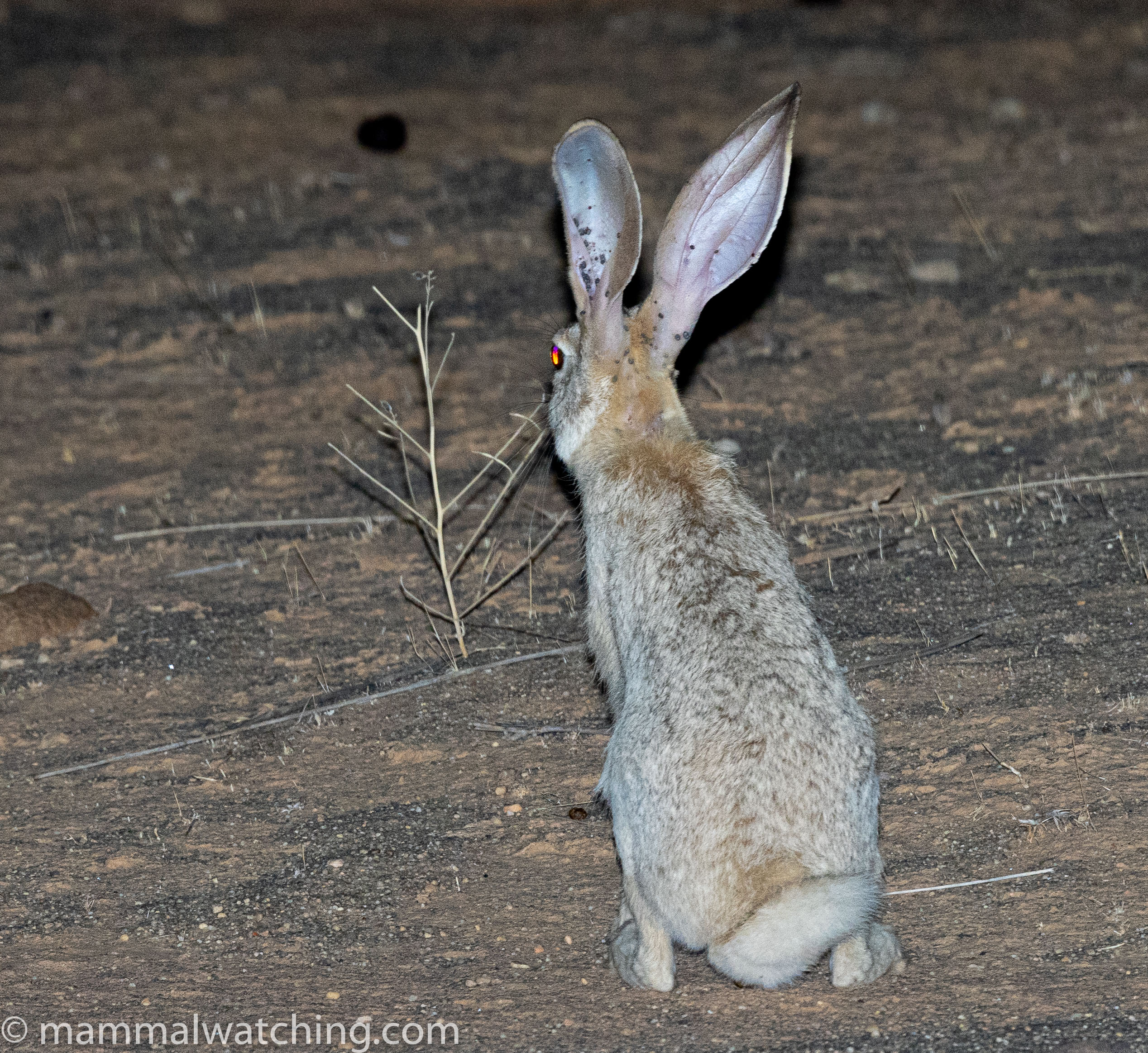
There are both Cape and Savanna Hares (Lepus victoriae) in Chad. We assumed all the hares we saw around Ennedi, and we saw them every night, were Cape Hares as there was almost no ground cover,though the nuchal patch on this animal at least seems a better fit for the description of Savanna Hare. I learned long ago to stop agonising over African hares. (Cue ‘no point in splitting hares’ joke). If anyone has a more informed opinion please let me know.
Striped Ground Squirrel (Euxerus erythropus)
A handful dashed in front of the vehicle in some of the better vegetated areas, but we had much better views of the species in Ouadi-Rimé.
Lesser Egyptian Jerboa (Jaculus jaculus)
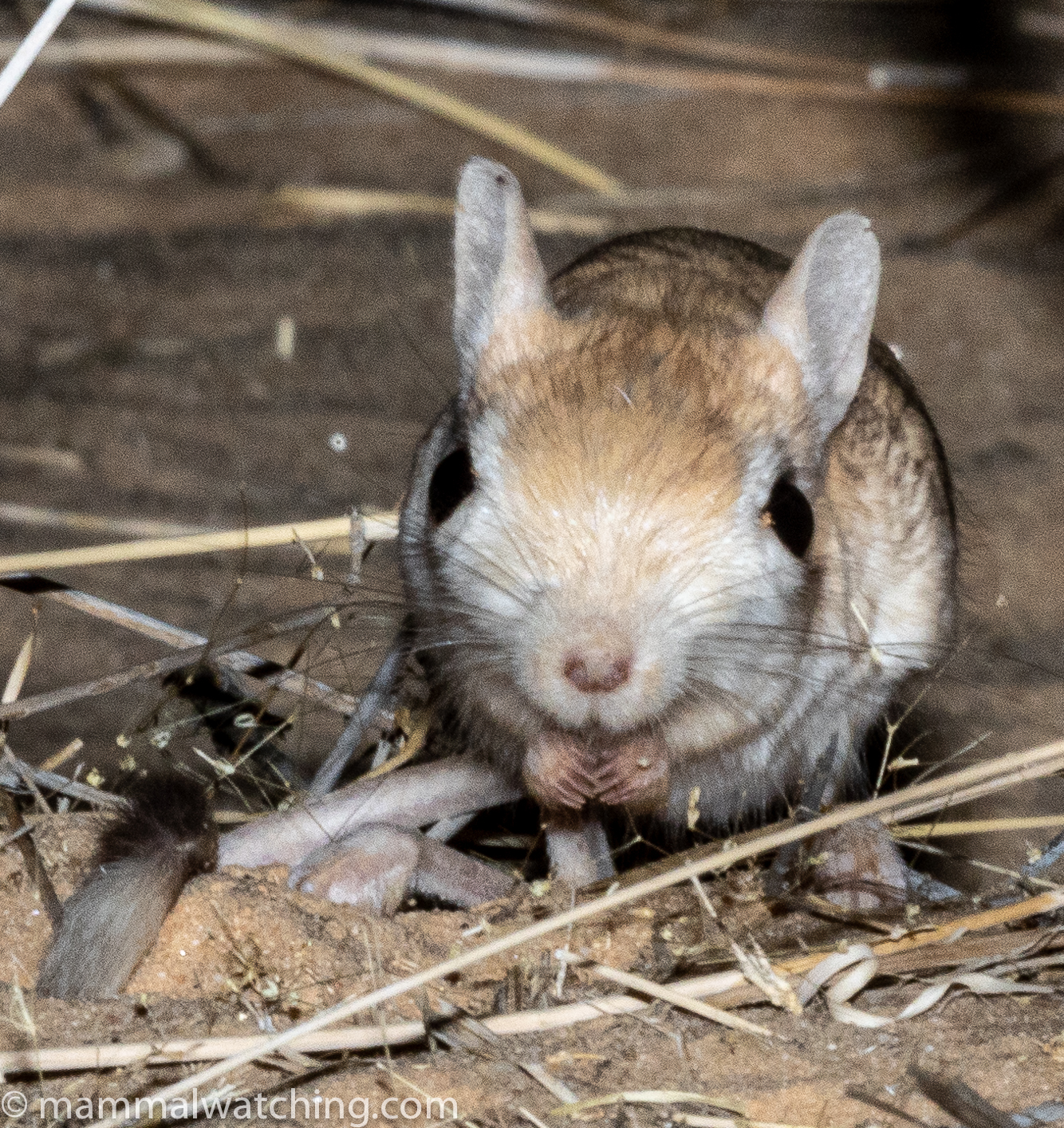
Although jerboas ought to have been a common sight after dark we only saw three or four. And only this one posed obligingly for pictures. Both Lesser Egyptian and Hamada Jerboas (Jaculus hirtipes) occur in Chad. They are difficult to distinguish and were once thought to be the same species. But on the basis of the sandy (not stony) habitat, and orange (rather than greyish brown) fur, this one looks good for a Lesser Egyptian Jerboa.
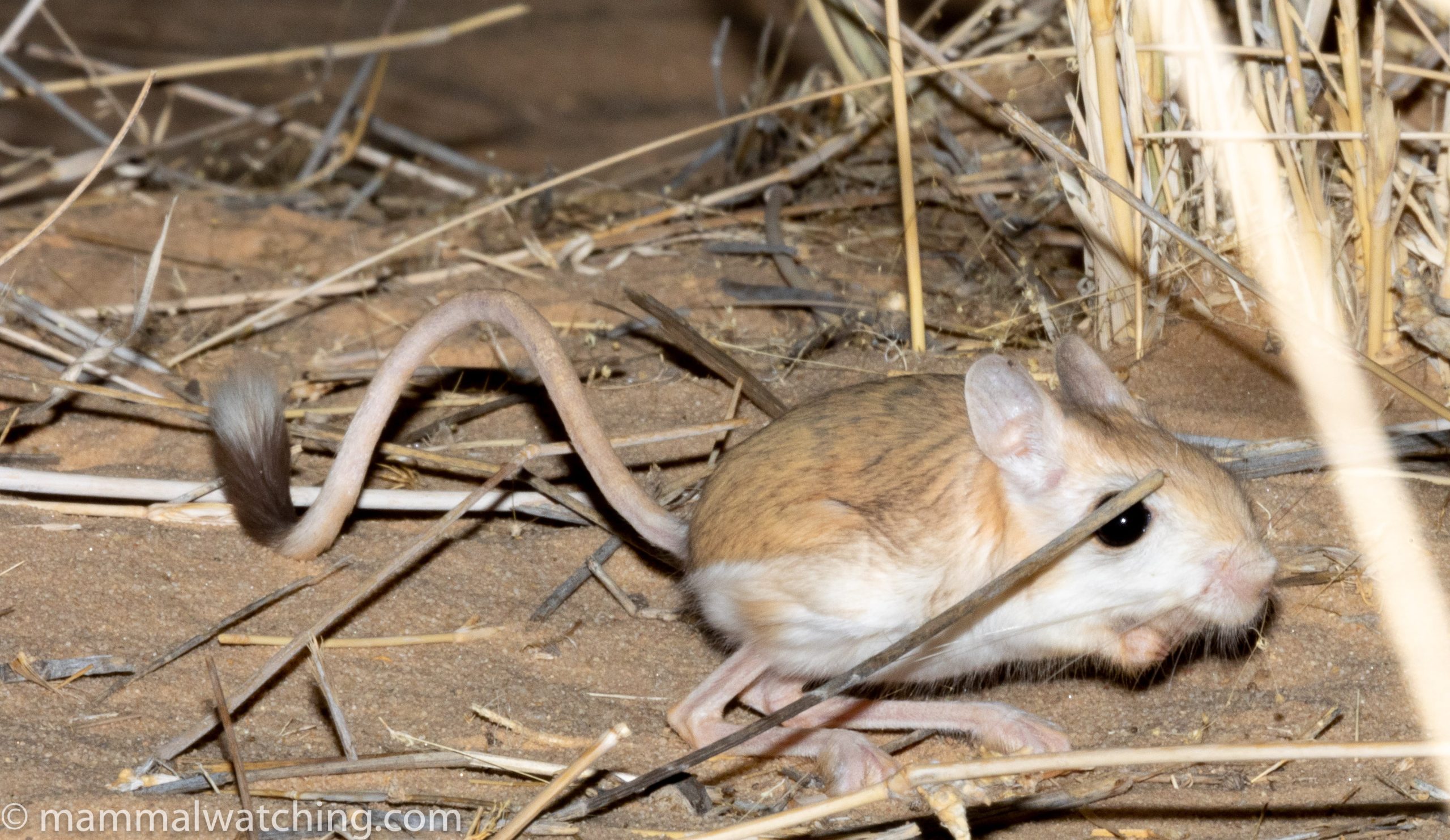
Lesser Egyptian Gerbil (Gerbillus gerbillus)
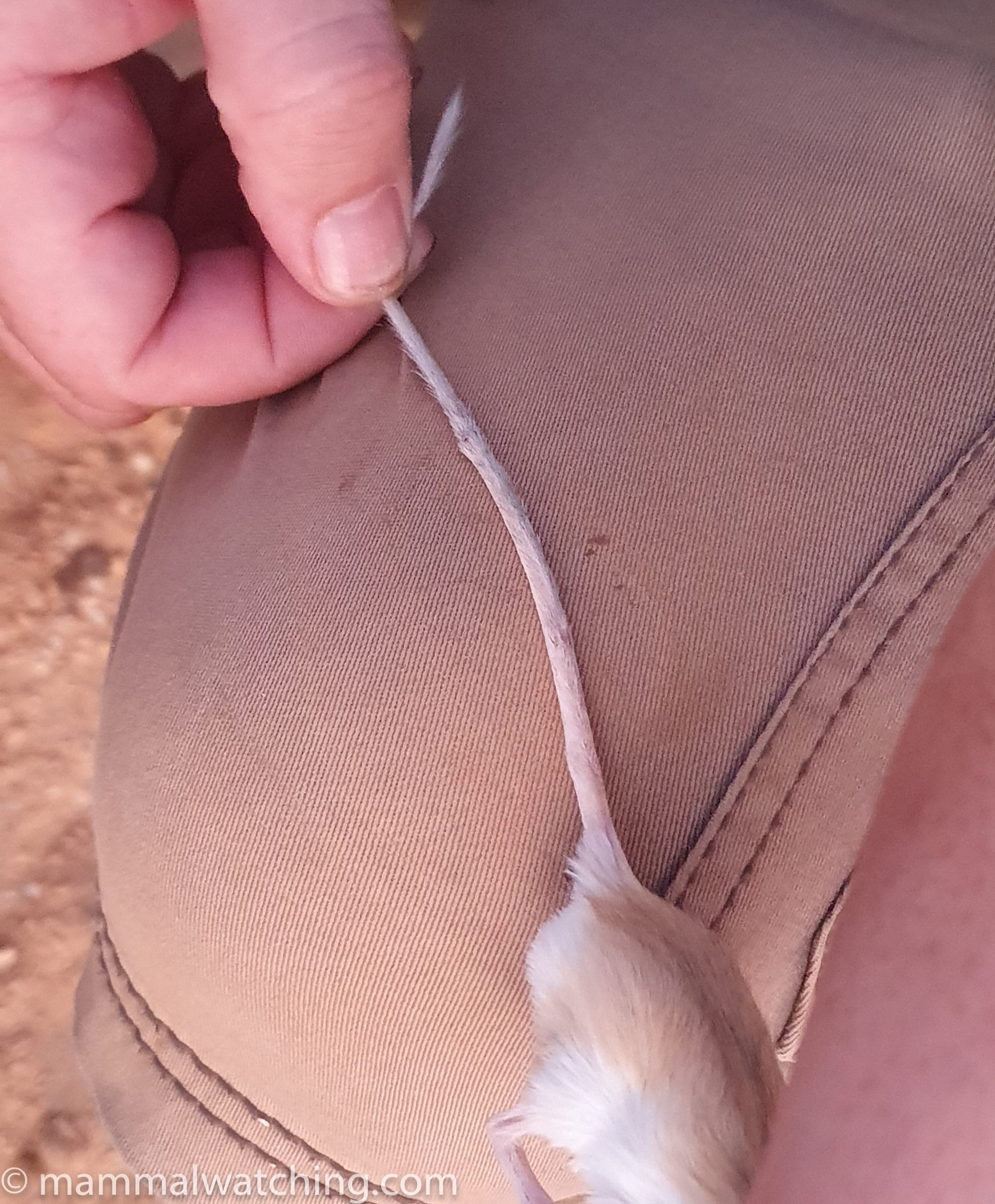
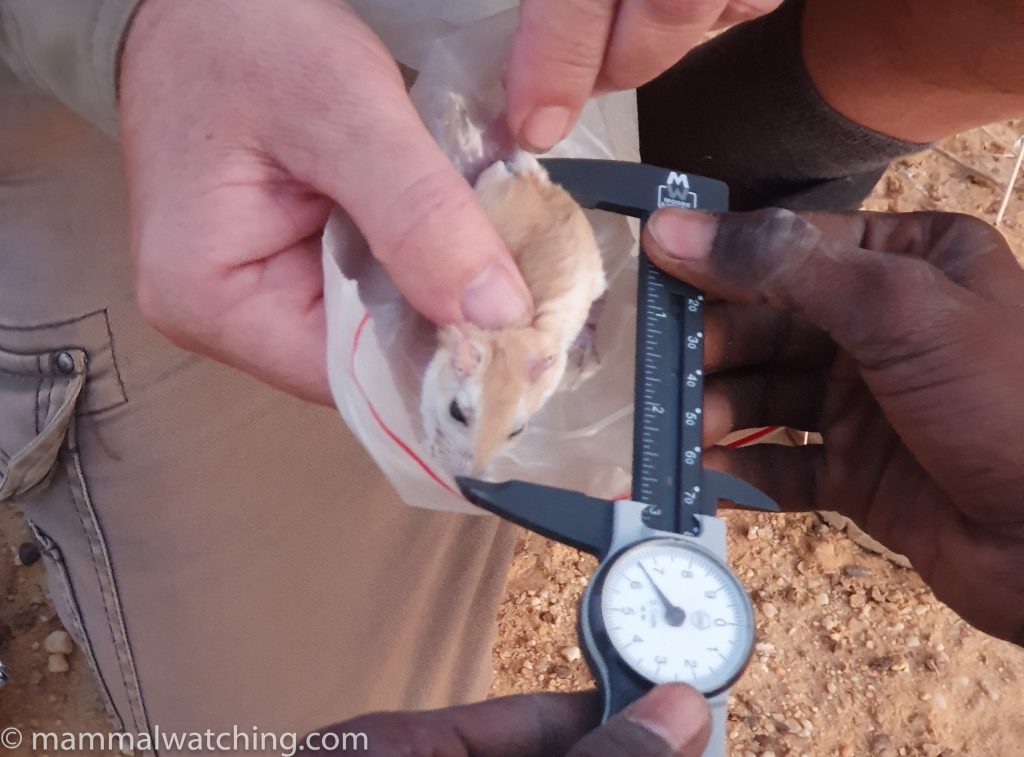
Identifying gerbils, even in the hand, proved tricky. I have not found any great references to help with the ID and little is known about the gerbils in Chad. But I’ve tried my best but would love information from experts.
We caught two gerbils that I believe were Lesser Egyptian on the basis of colour, the pattern of white patches around the eyes and ears, the white spot above the base of the tail and size: this one had a head-body length of 77mm, a tail length of 124mm and a hind foot length of 25mm.
Pygmy Gerbil (Gerbillus henleyi)
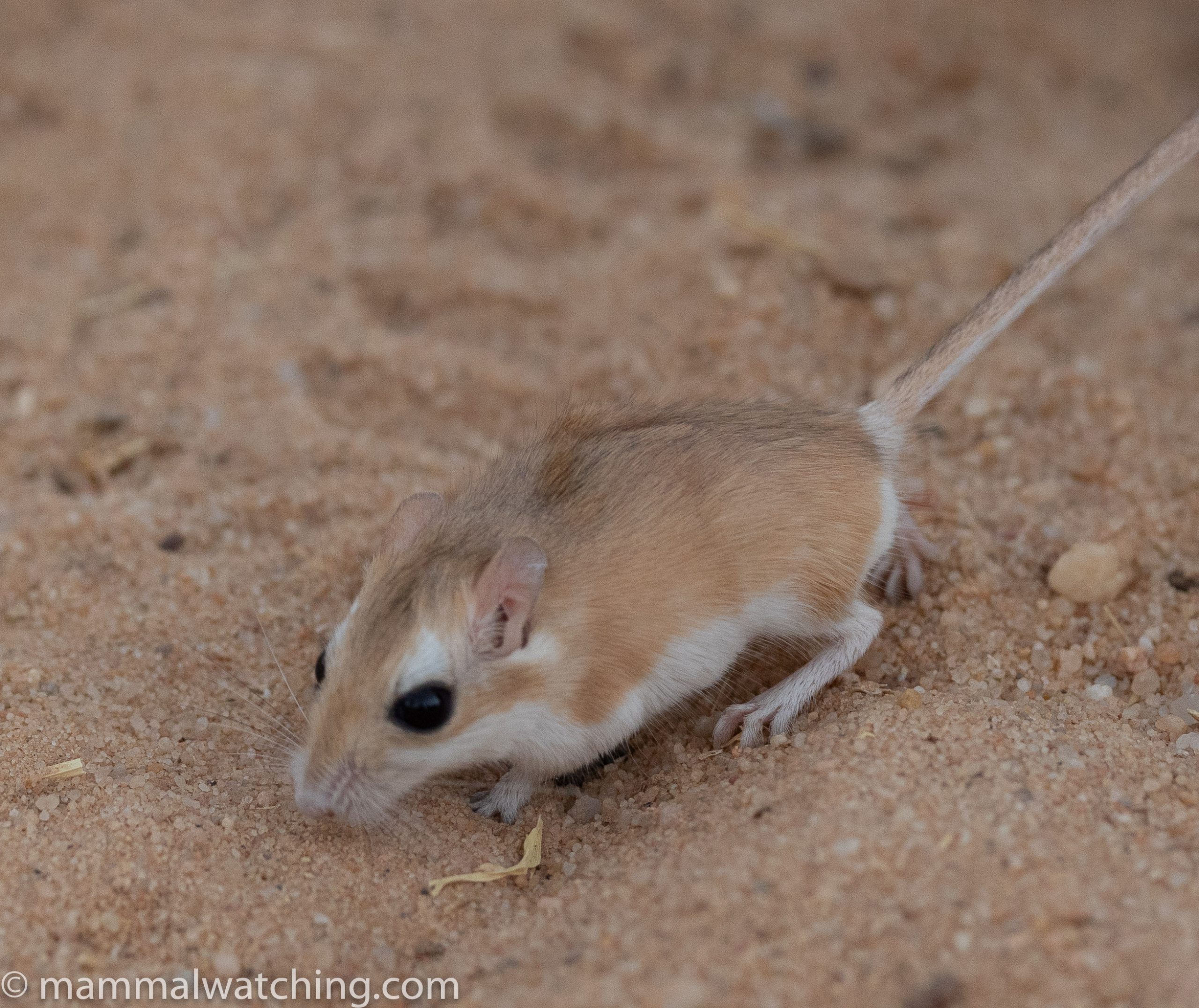
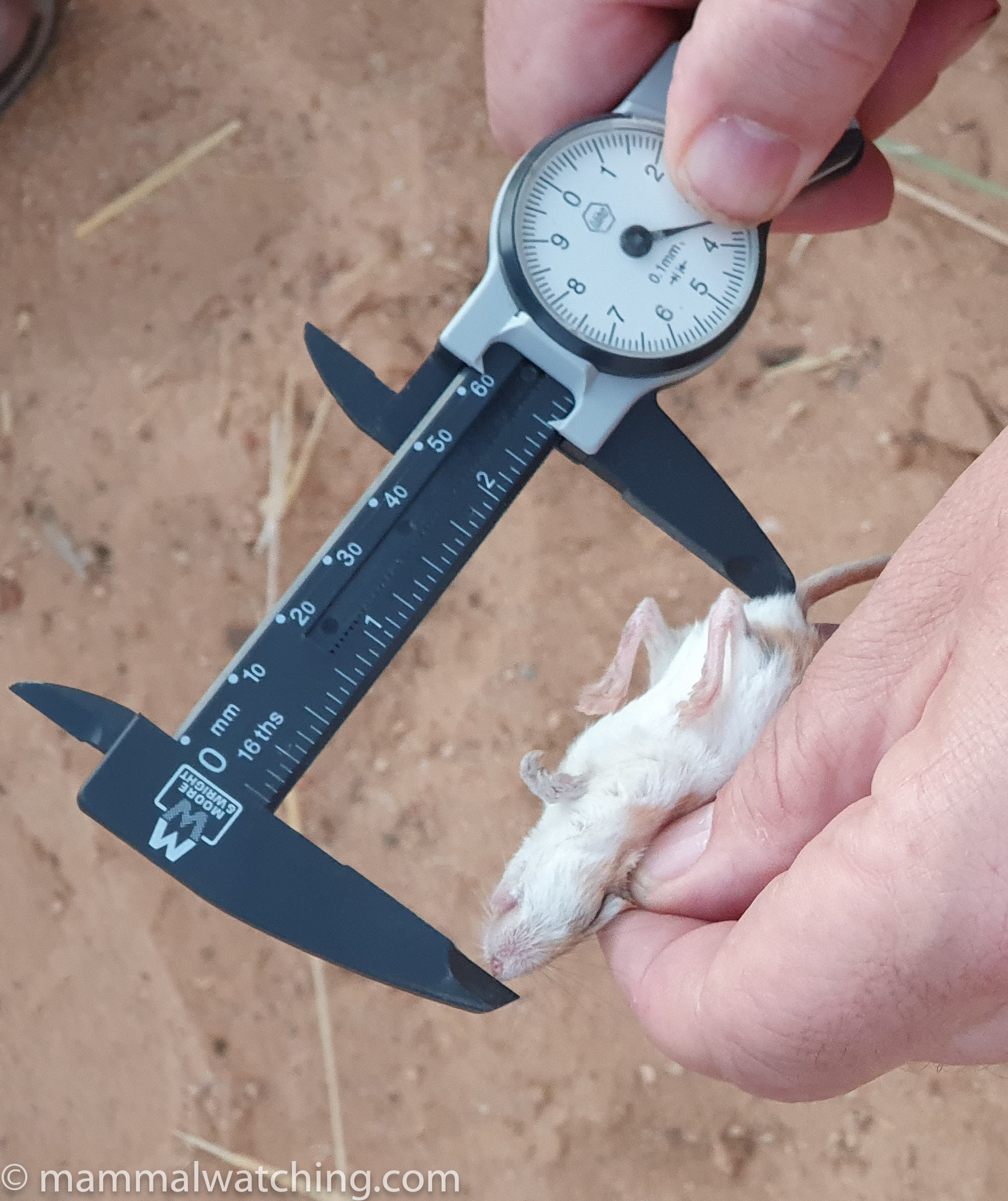
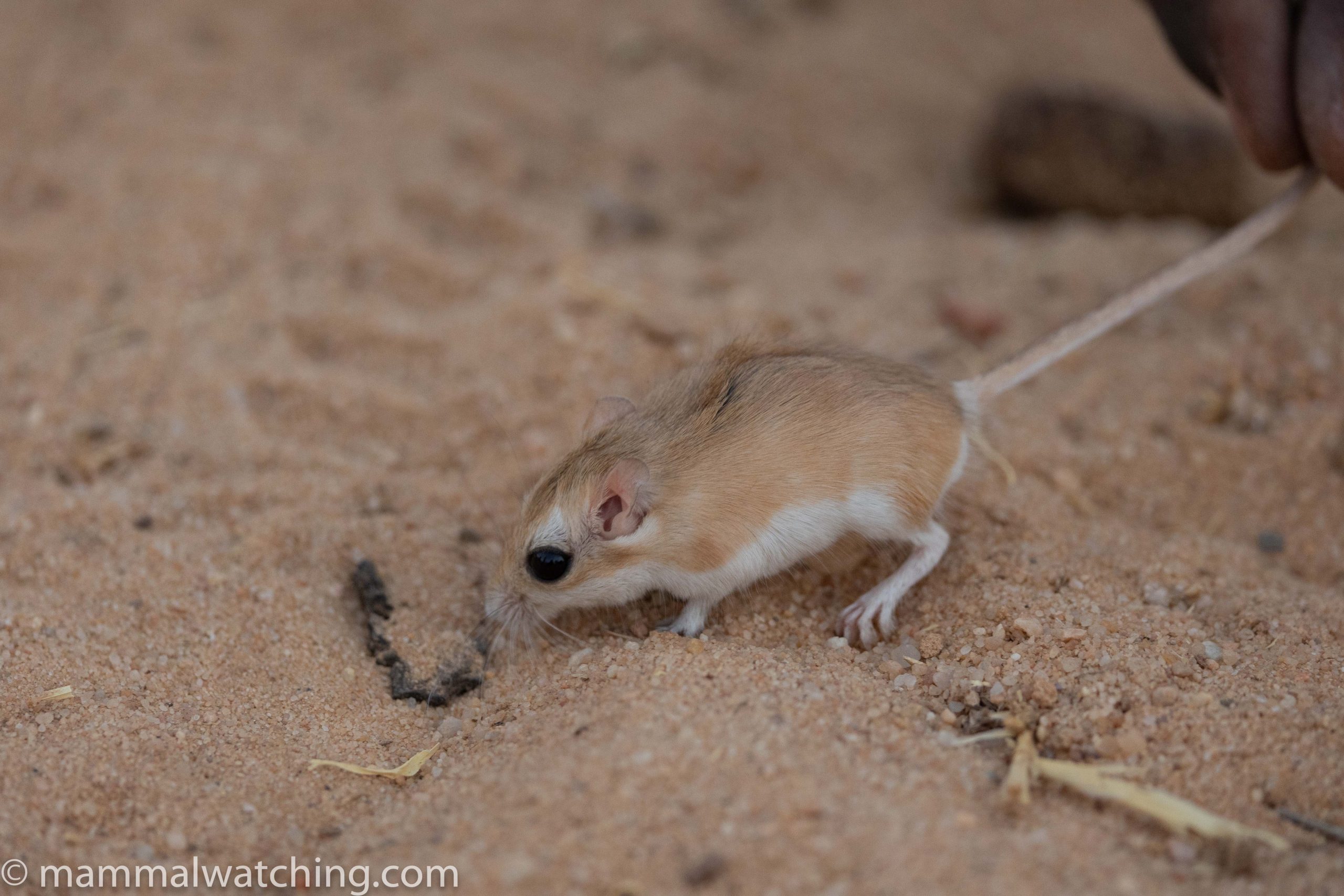
We caught a single Pygmy Gerbil. They are easier to identify because they are smaller than all the other options. This one had a head body length of 63mm, a 100mm tail and an 18mm hind foot.
Nigerian Gerbil (Gerbillus nigeriae)
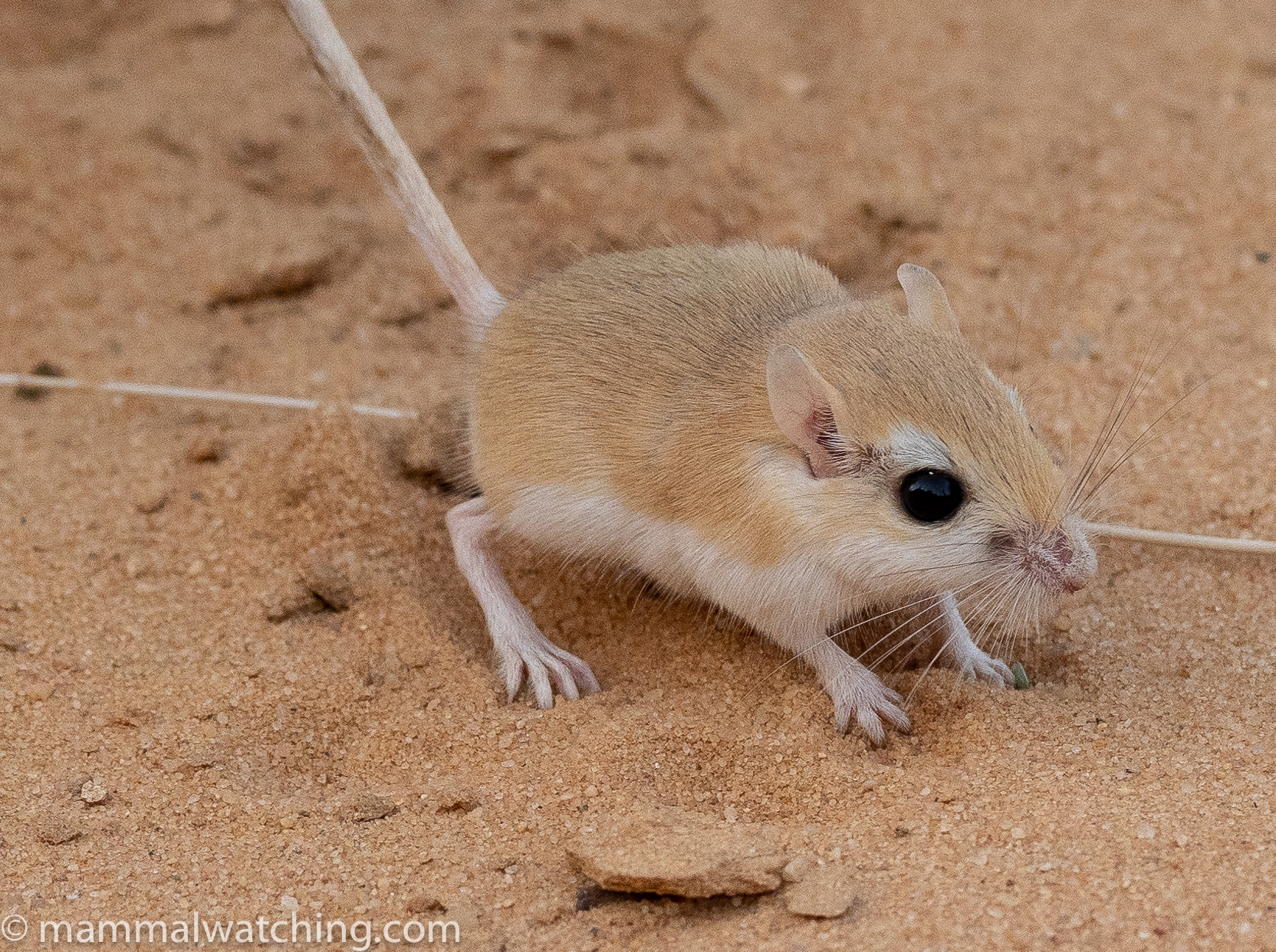
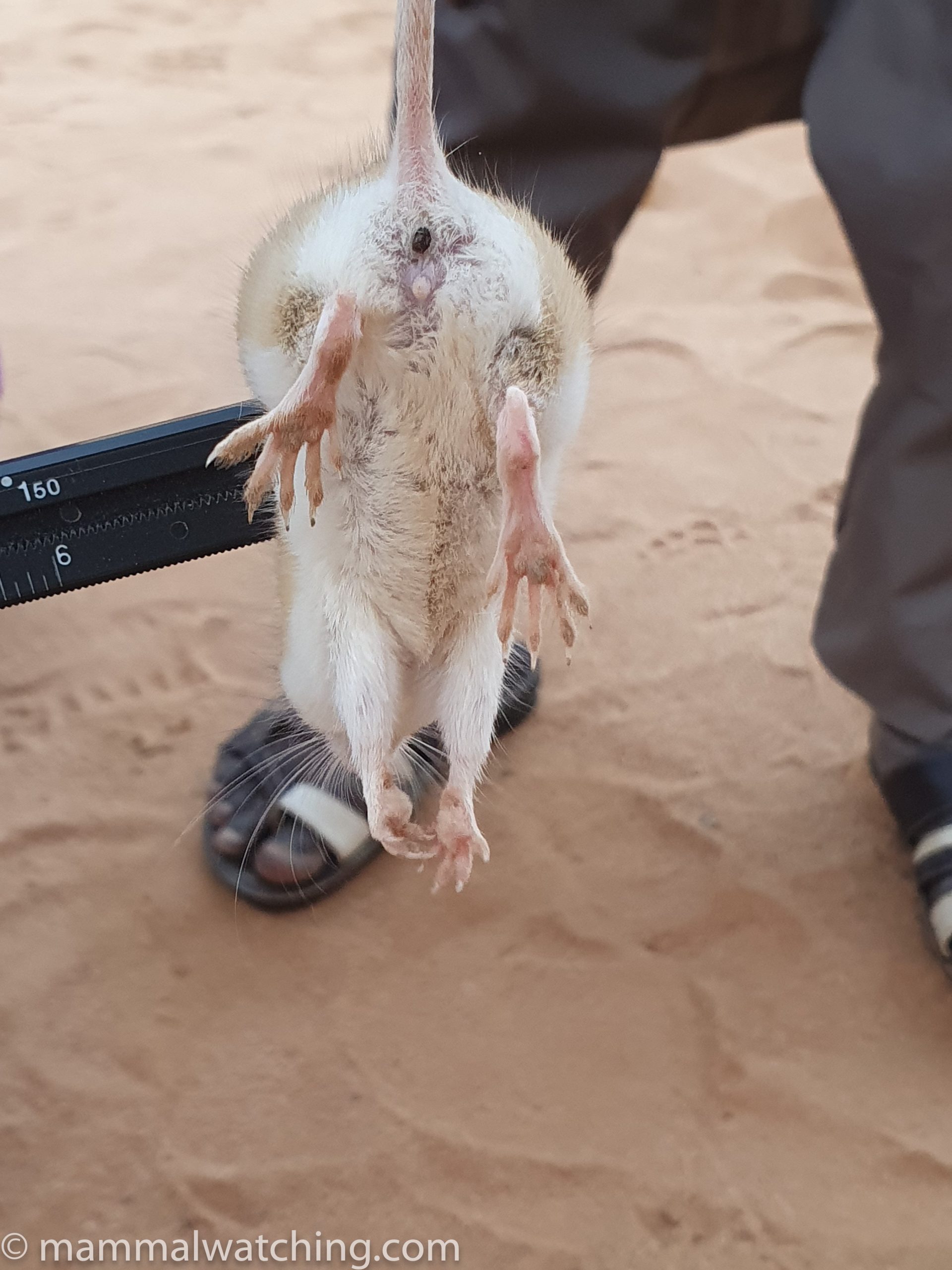
We caught two medium sized gerbils. The head body was around 70mm, the tail 135mm and the hind feet, the soles of which were only moderately hairy, were 26.5mm. They looked a bit different to Lesser Egyptian Gerbils and appeared to have a faint orange wash over the middle of their bellies. I have tentatively recorded them as Nigerian Gerbils but I am less certain about this ID than the others. And I am not all that certain on the others!
Tarabul’s Gerbil (Gerbillus tarabuli)
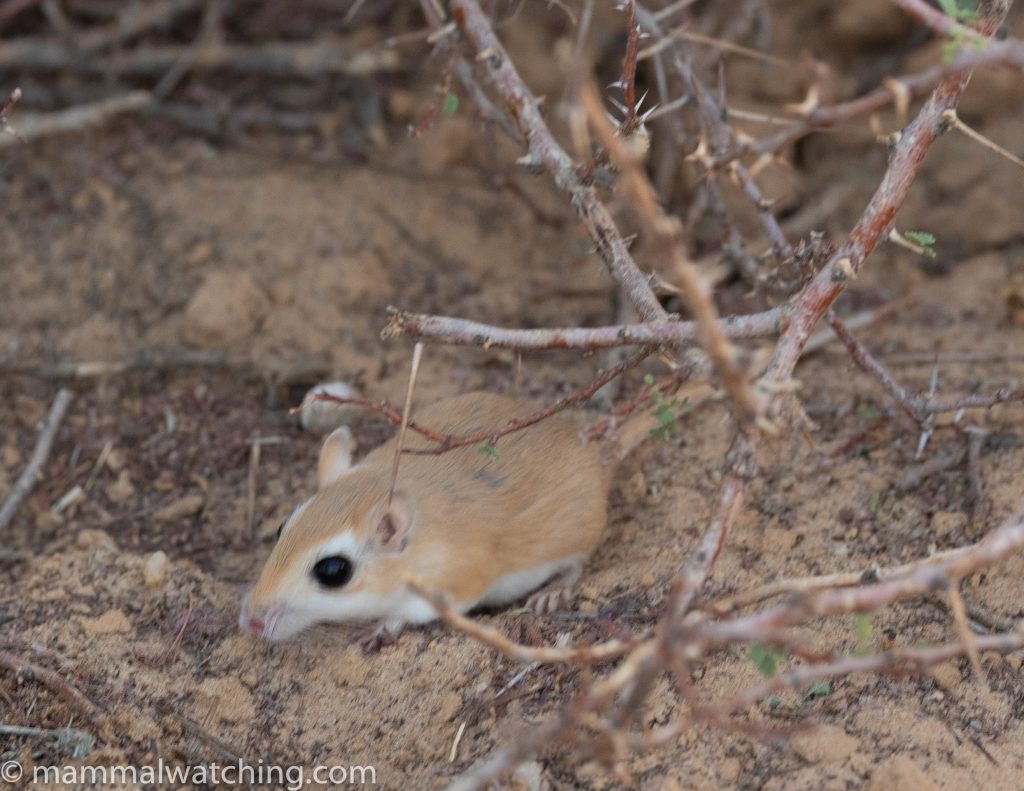
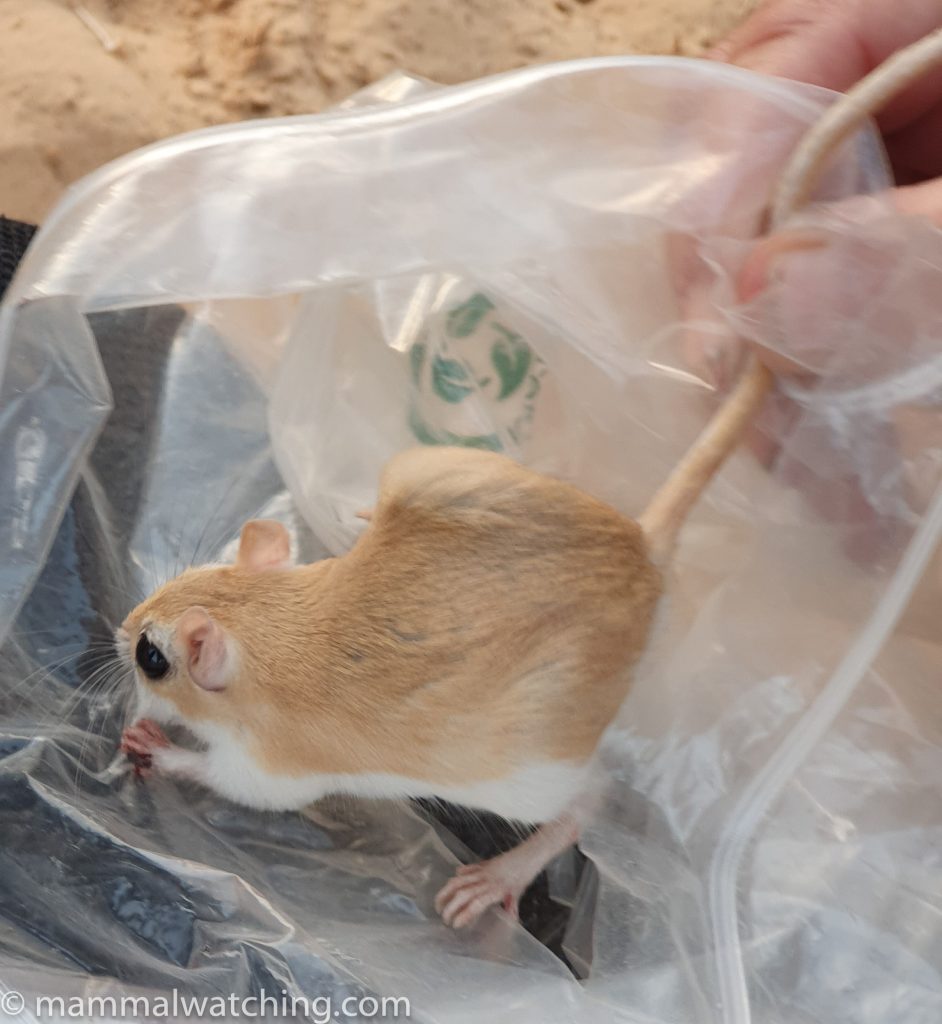
We caught a larger gerbil which I think is a Tarabul Gerbil. The head body was 90mm and the bicoloured tail, which was sandy on top and white underneath, was 150mm. The tail had a grey tuft and the hind feet, which had hairy soles, were 28mm.
Olive Baboon (Papio anubis)
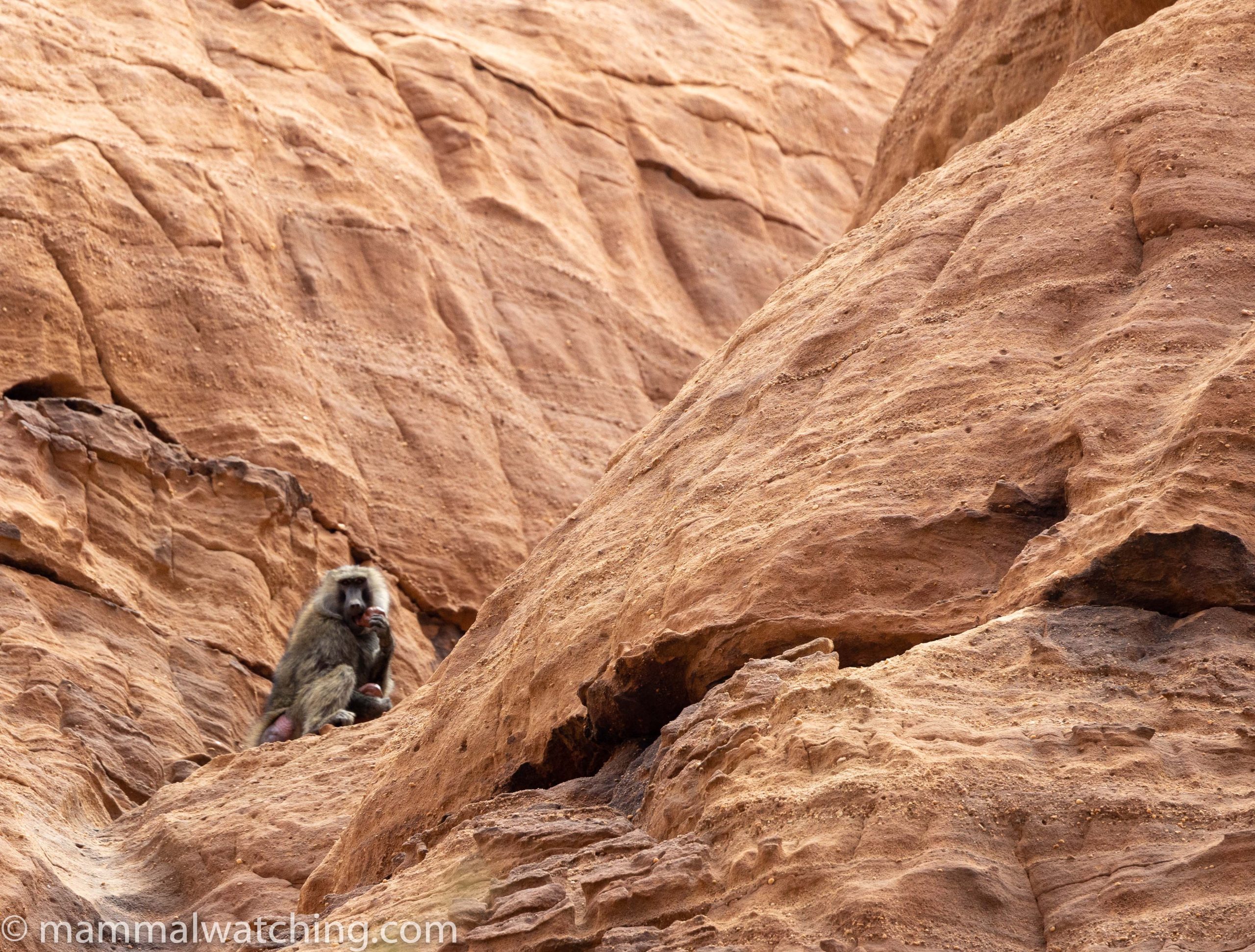
Once or twice near camp.
Common Patas Monkey (Erythrocebus patas)
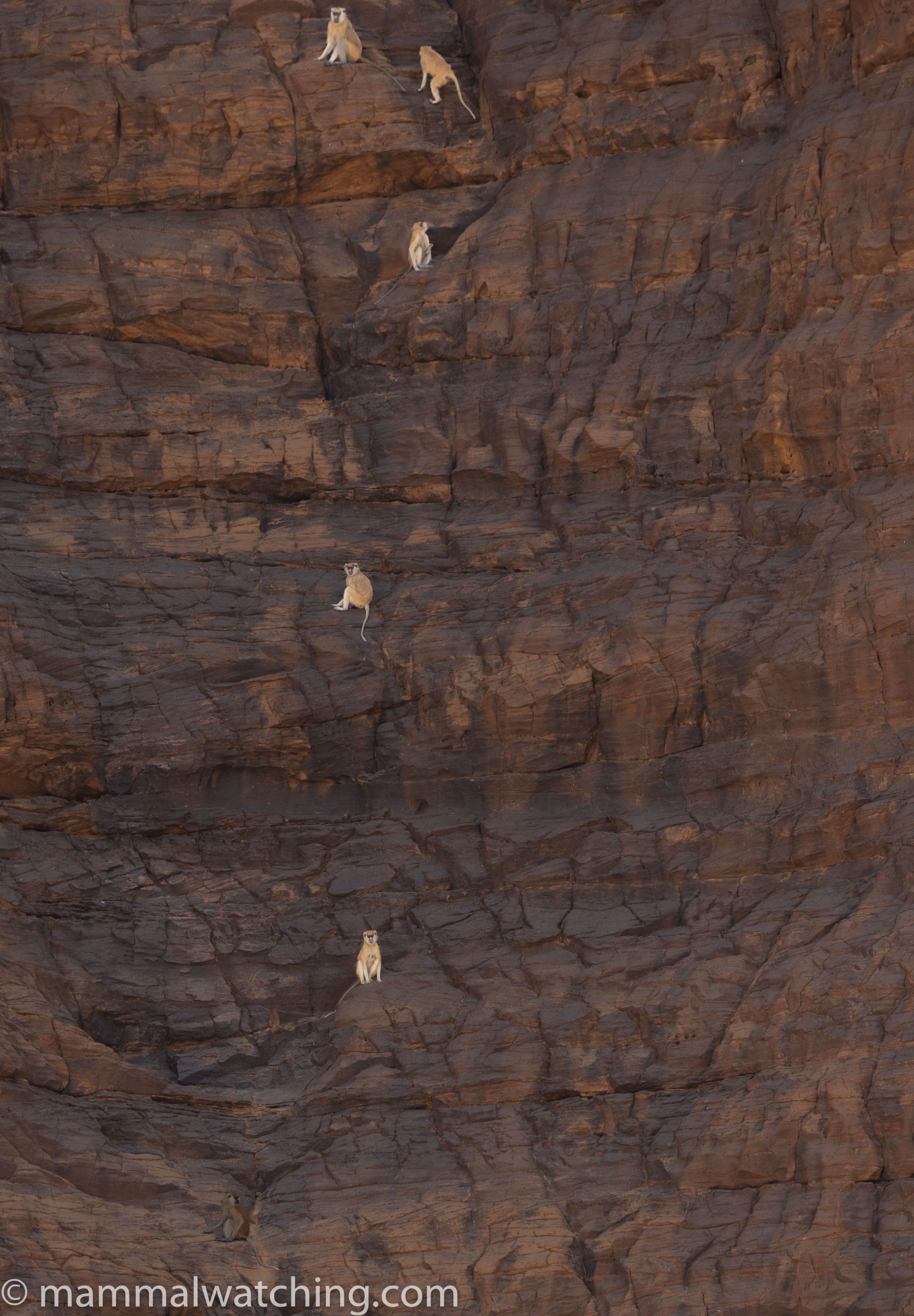
Three or four troops including this group on the cliffs next to camp.
Desert Hedgehog (Paraechinus aethiopicus)
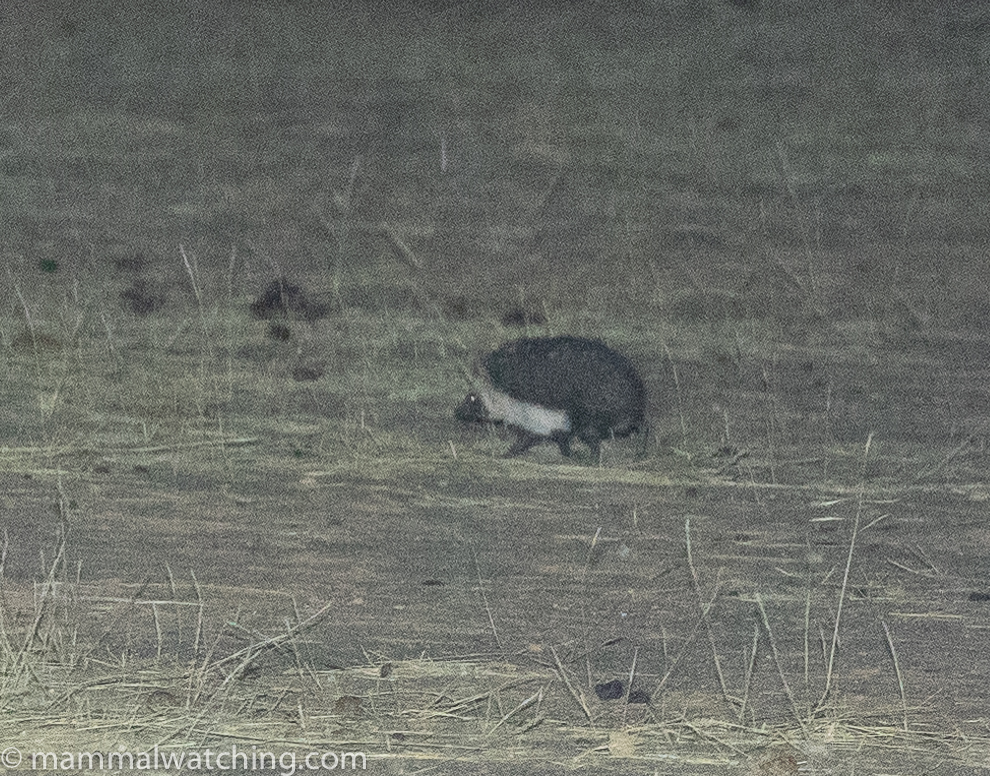
One a few kilometres from camp at about 9pm. They can move fast so photos were a challenge. But the black colour appears to confirm the species at aethiopicus. Tom’s first African hedgehog.
Egyptian Mouse-tailed Bat (Rhinopoma cystops)
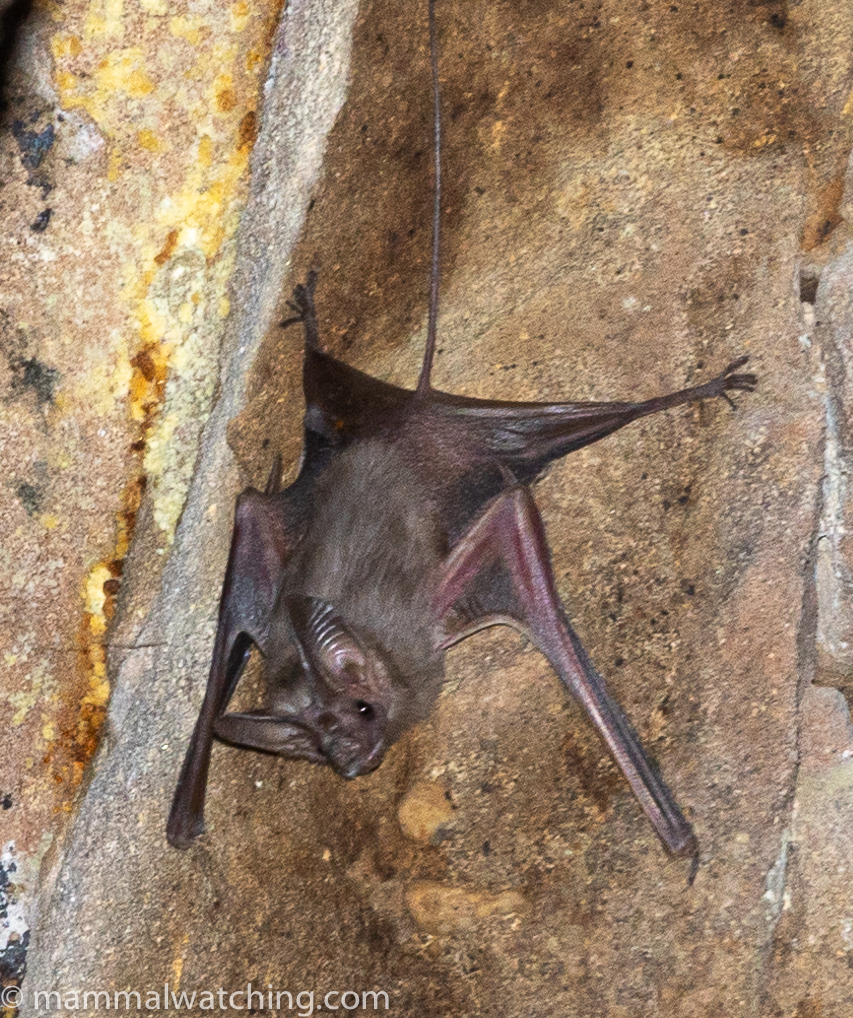
We looked in a lot of caves in Ennedi but didn’t see any bats other than in two known bat caves in the middle of the Guelta d’Archei. There are two species of mouse-tailed bat known from Chad. Egyptian and Lesser (R. microphyllum) Mouse-tailed. And on the basis of the desert habitat I recorded this one as Egyptian.
Arabian Horseshoe Bat (Rhinolophus clivosus)
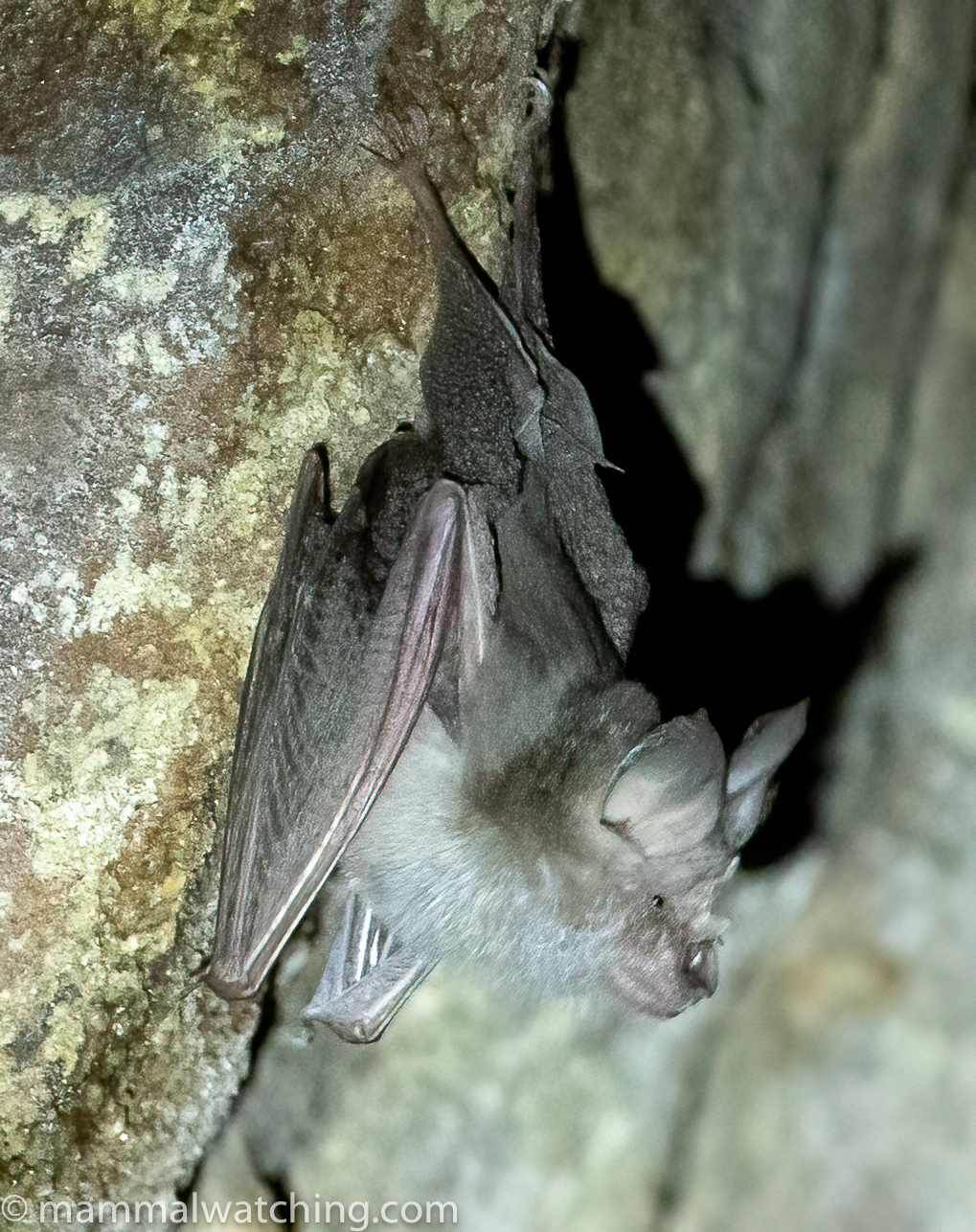
There were a few of these in the same cave as the mouse-tailed bats. These caves also contained many dead and dying songbirds; a mystery waiting to be solved.
Striped Hyena (Hyaena hyaena)
Arguably the best mammal from Ennedi. We saw one around 9pm a few kilometres from camp, and saw it again 20 minutes later on the way home. We probably had the same animal the following night though didn’t get close enough to be sure the large animal with eyeshine was a hyena.
Pale Fox (Vulpes pallida)
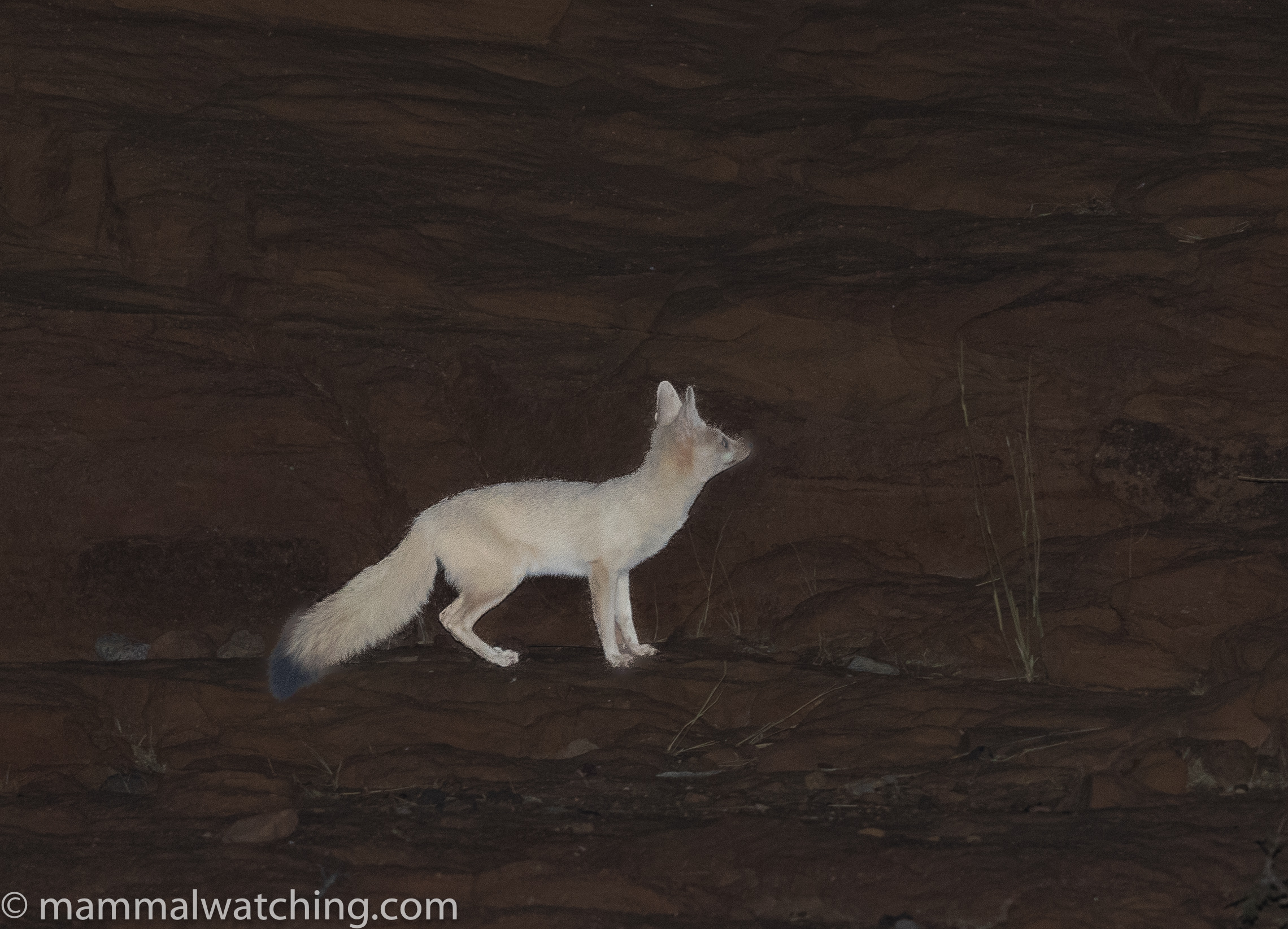
The most common of the three fox species in the Ennedi. We saw at least one animal close to our camp most nights and others further afield.
Rüppel’s Fox (Vulpes rueppellii)
We saw a pair of Rüppel’s Fox on the drive into camp on our first evening. We didn’t see them again. They are, we were told, more common in some years.
Fennec Fox (Vulpes zerda)
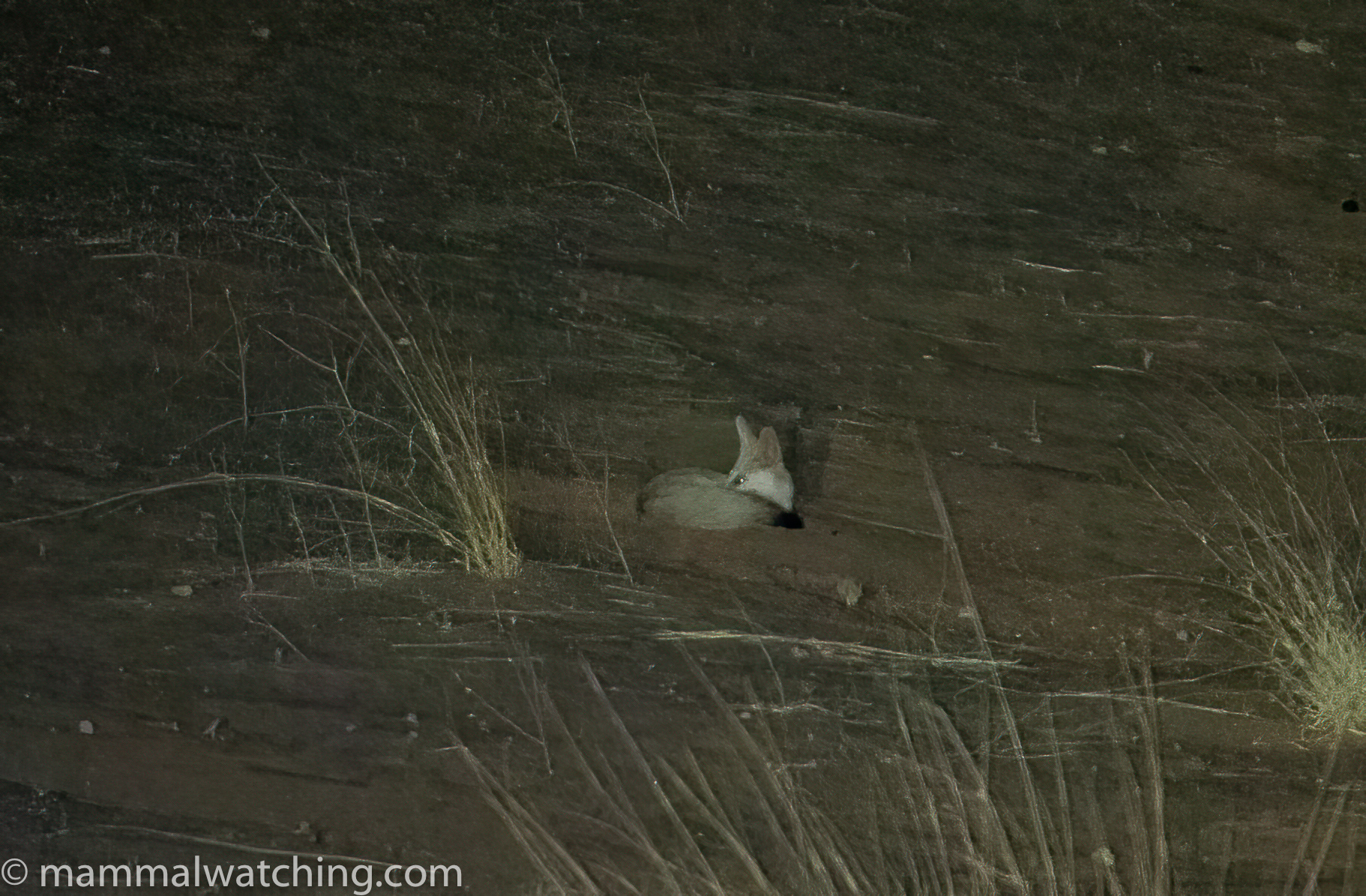
Fennec Foxes were fairly common at night and we saw a couple sitting near their burrows in the early morning too.
Ouadi-Rimé Ouadi-achim Fauna Reserve
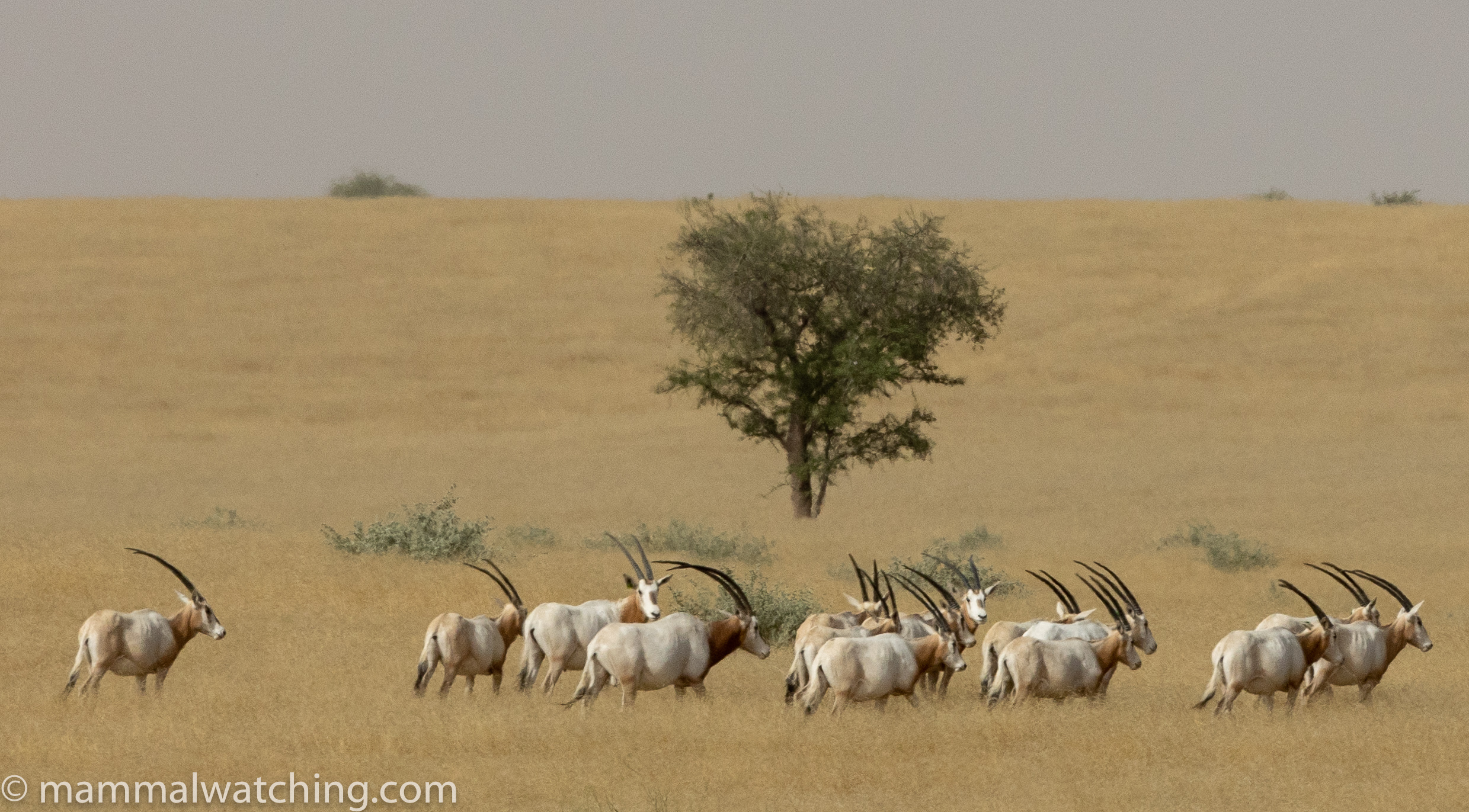
Scimitar-horned Oryx (Oryx dammah)
The Ouadi-Rimé Ouadi-Achim Fauna Reserve, managed by Sahara Conservation , is an enormous reserve the size of Scotland. We were allowed to camp for four nights at the reserve’s HQ, Oryx Base Camp. This is not a tourist camp. Tom got permission to stay because he has a good relationship with the reserve’s managers. We were prepared to be entirely self-sufficient but the camp allowed us to use their showers and bathrooms, their Wi-Fi and electricity and even the chance for air -conditioned siestas in a shipping container. Bliss!
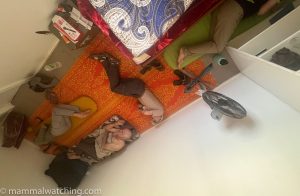
AC can make anywhere a luxury. Even the floor of a shipping container.
We were very fortunate to have the company of Tim Wacher, a British zoologist, who has spent several months each year in the reserve for many years working with the reintroduced Scimitar-horned Oryx and Addax, and monitoring the Dama Gazelle. He was a goldmine of information and a super-nice guy. We’d worried that Ramadan might complicate our stay, but in fact it worked in our favour as work had slowed down a bit in the reserve and Tim, and his colleagues, including Kher, were able to spend time showing us around. During the day we drove around the reserve, helping Tim and his team to monitor the ungulates. There are four species here. Dorcas Gazelle, which were very common; reintroduced Addax and Scimitar-horned Oryx, both of which were living wild again in the reserve; and about 50 Dama Gazelles still survive in the reserve (a quarter of the global population).
We only saw a tiny fraction of the reserve. Around Oryx Base Camp the habitat is mainly grassland with scattered small trees, interspersed patches of open desert (the best areas for spotlighting) and patches of more shrubby grassland that were good for Caracal.
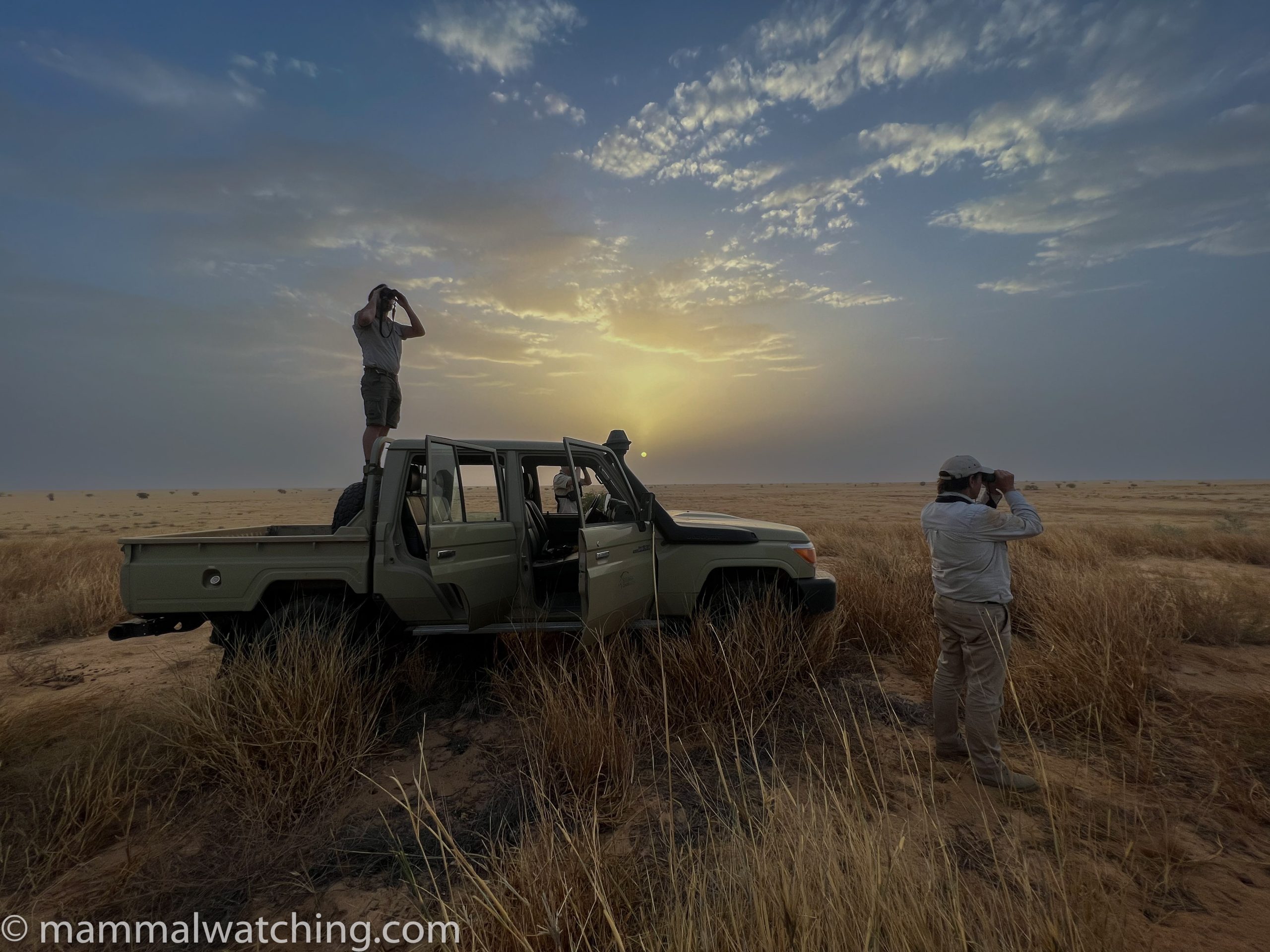
We went out each night for about 3 hours looking for nocturnal mammals; and there were plenty. One of our – well my – key targets here was a Libyan Striped Polecat, a species I had missed in the Western Sahara but which sounded fairly common from the few trip reports I had seen from the reserve. Martin Royle’s group saw two or three during one of their night drives.
Tim was a little less optimistic. He estimated he saw them about one night in five, but noted that when he saw one he’d often see a second or third animal on the same night. These words were sadly prophetic. Despite 14 hours spotlighting over four nights we could not find a weasel, though we did see a host of other good mammals. It was very windy on two nights and perhaps that reduced our chances. I heard that the first time Tim went out on a spotlight drive after we left he saw three weasels. I’m still trying to make peace with this. I am not sure I ever will.
After we left Oryx Base Camp on the long drive to Zakouma we spent our first night just outside the reserve in an area where Martin Royle’s team had seen Aardvark close to their camp. Plenty of Aardvark signs but no animals for us. We did though see a pair of tiny Pouched Gerbils.
Ouadi-Rimé’s Mammals
Over four nights we recorded the following.
Savanna Hare (Lepus (victoriae) microtis)
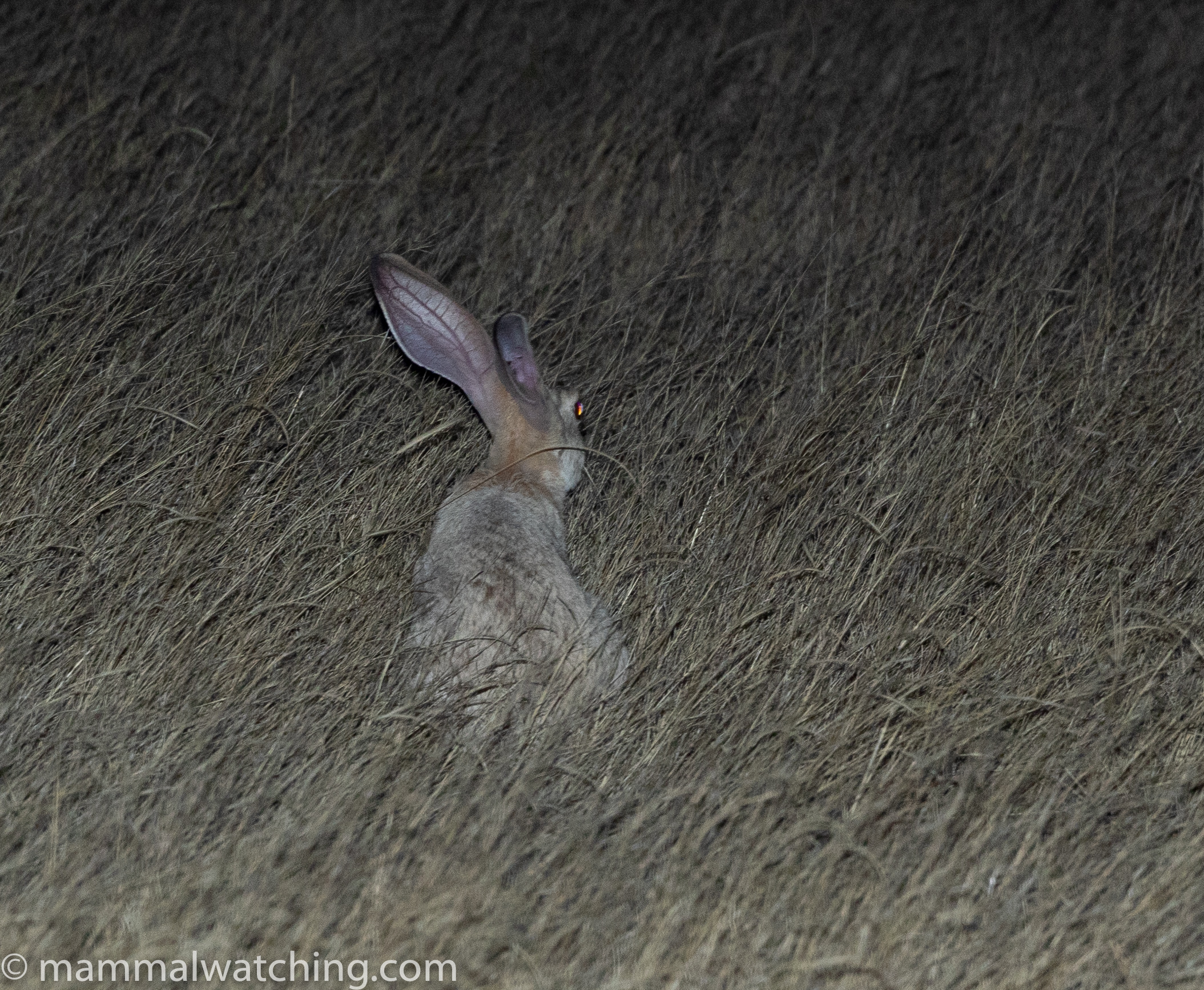
Hares were common in the reserve and on the basis of habitat we recorded them all as Savanna Hares.
North African Crested Porcupine (Hystrix cristata)
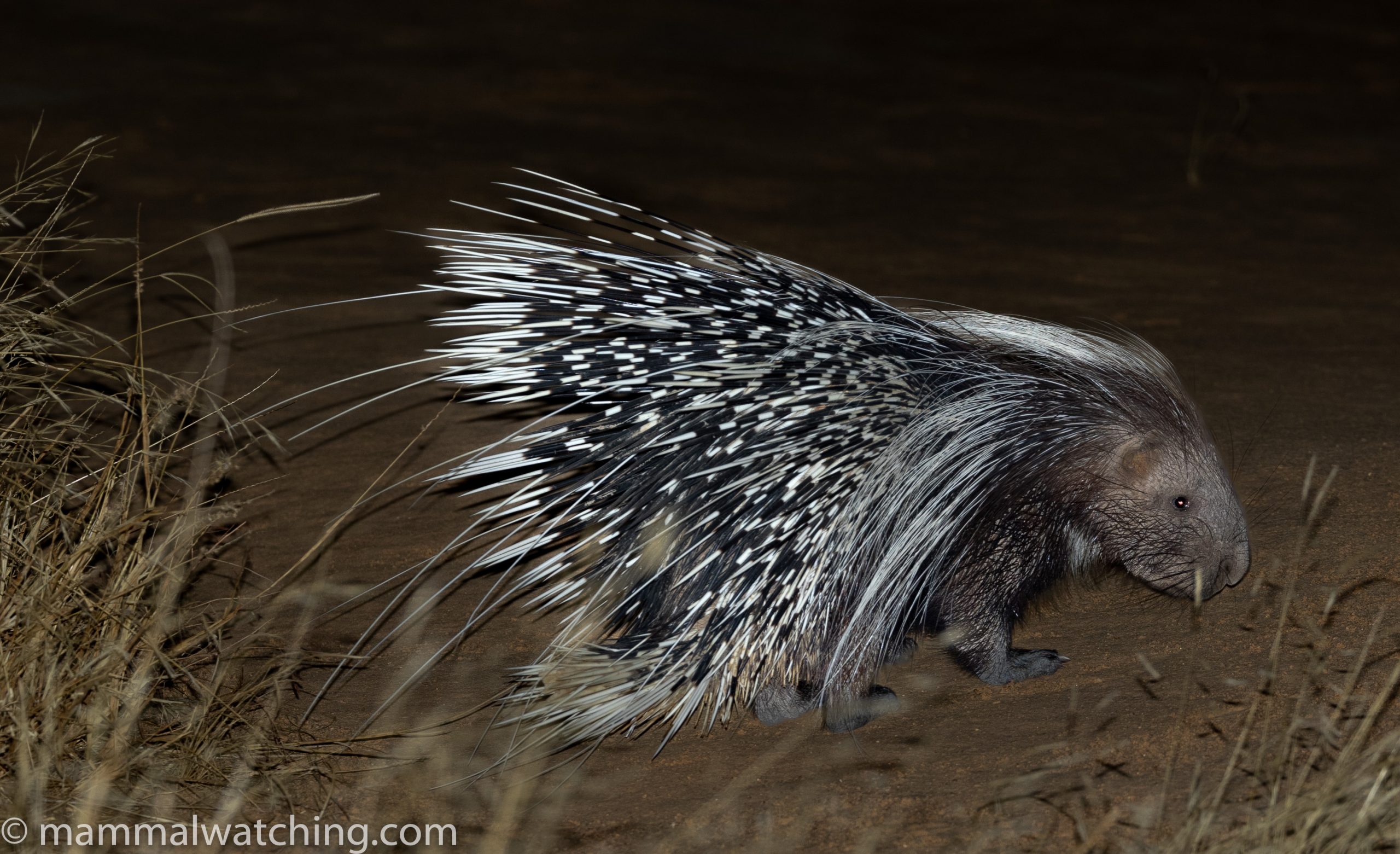
Porcupines are not particularly common on the reserve but we had a lovely encounter with this animal. This was a species I had only seen once before (running away from me in Italy).
Striped Ground Squirrel (Euxerus erythropus)
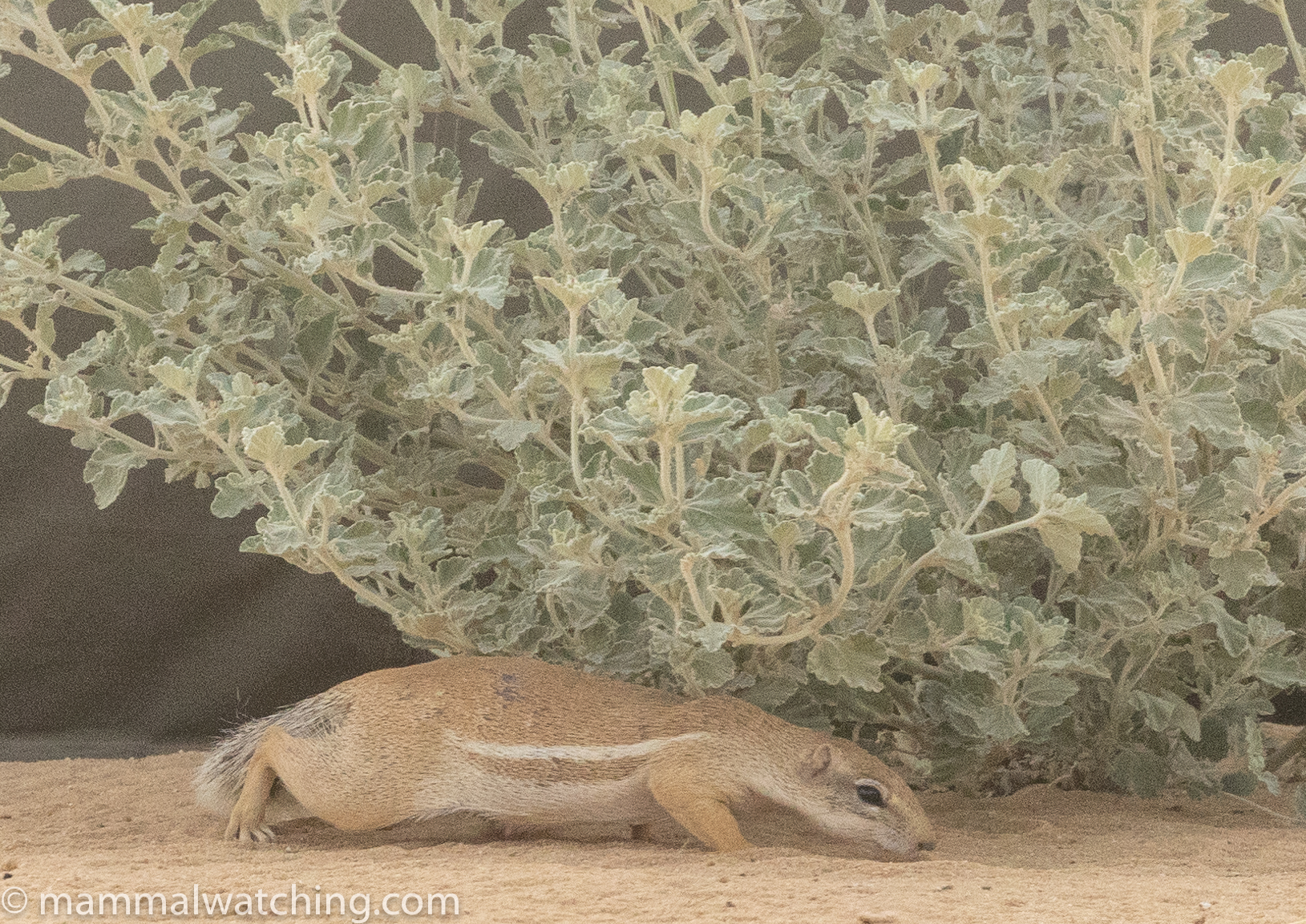
Common around Oryx Base Camp.
Hamada Jerboa (Jaculus deserti)
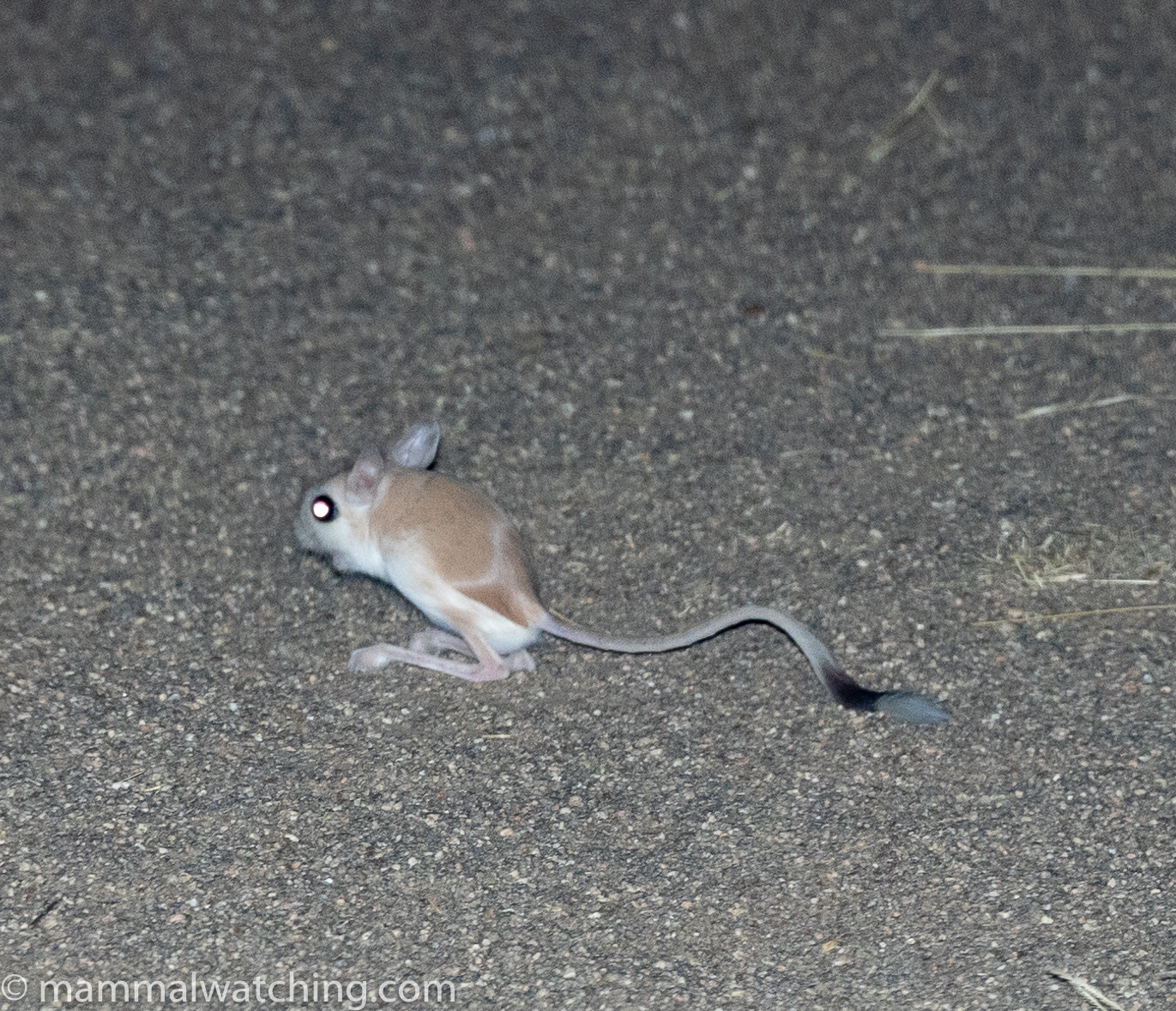
Both Hamada and Lesser Egyptian Jerboas ought to occur on the reserve. On the basis of the stony habitat, and its dullish colouration, I have put this one down as a Hamada Jerboa. And maybe the animal below too. But I would love expert opinion.
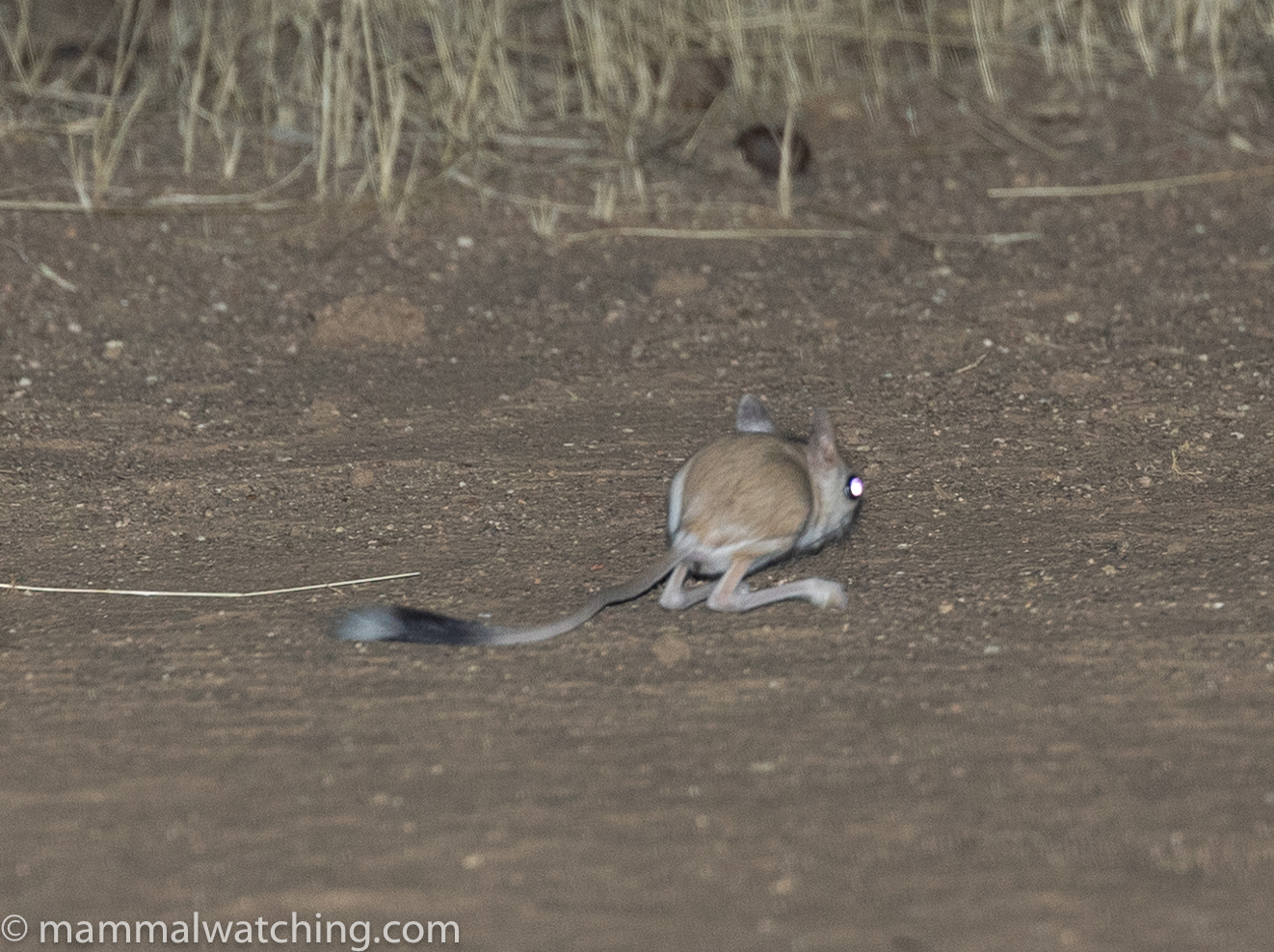
Pleasant Gerbil (Gerbillus amoenus)
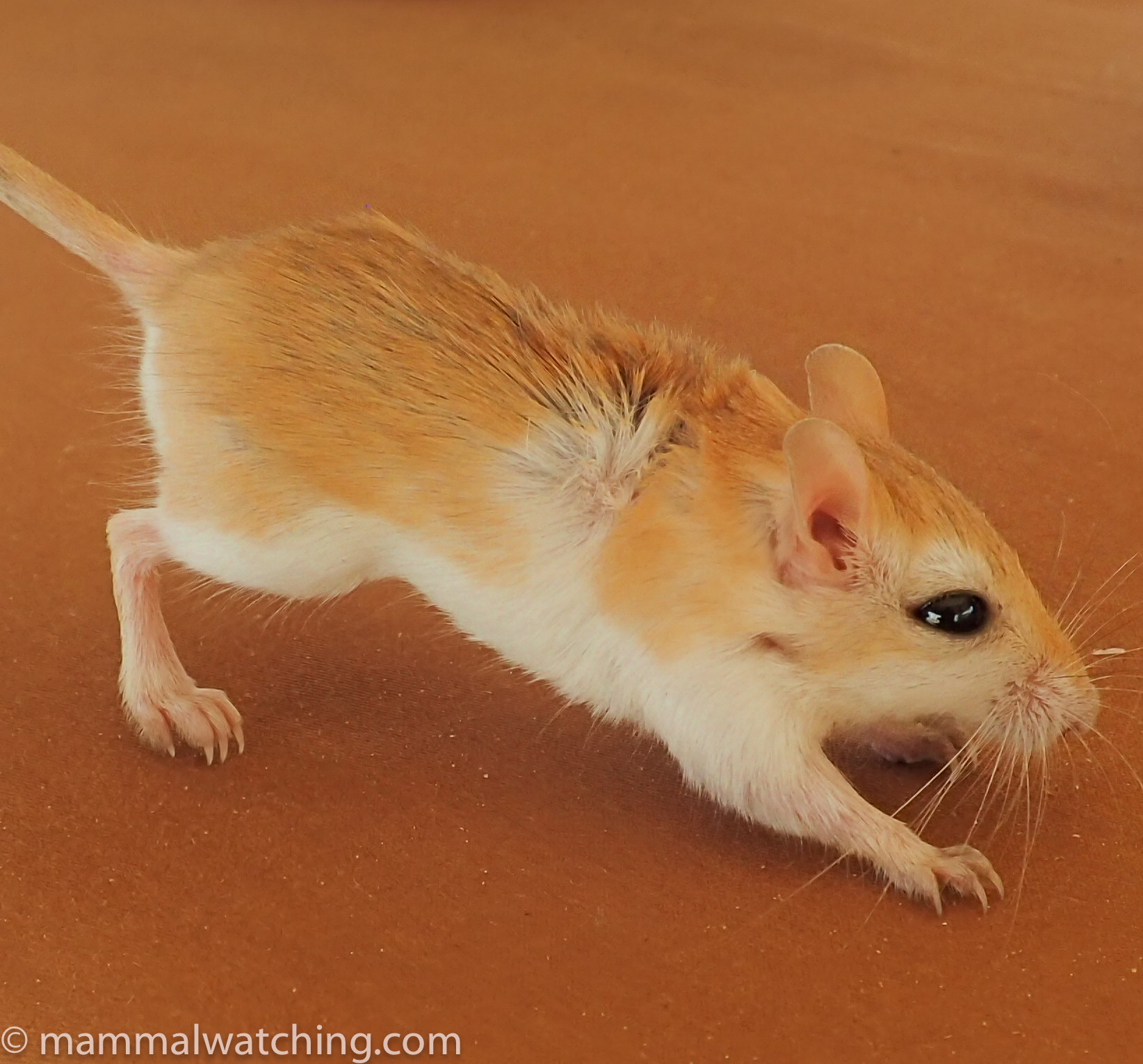
I was given permission to catch small mammals around the camp. The most common captures were Pleasant Gerbils. Many years earlier the species had been collected here and identified as Gerbillus nanus. According to the Mammal Diversity Database, G. nanus “is tentatively retained as distinct following HMW7 (although it may be a synonym of G. amoenus); the affinities of populations often attributed to this species in Africa are uncertain and have been tentatively included under G. amoenus.”
Pygmy Gerbil (Gerbillus henleyi)
A few seen while spotlighting in more open desert.
Nigerian Gerbil (Gerbillus nigeriae)
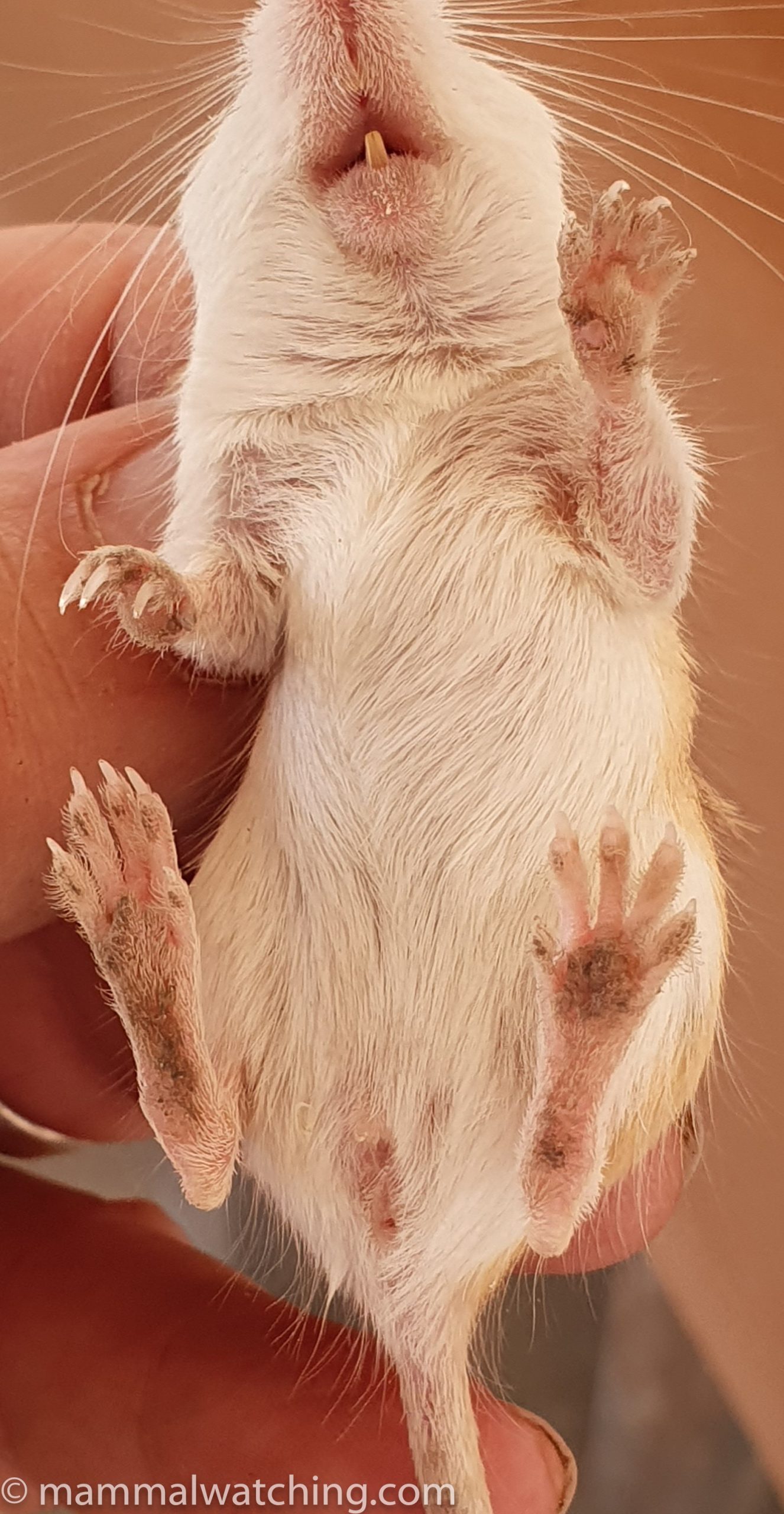
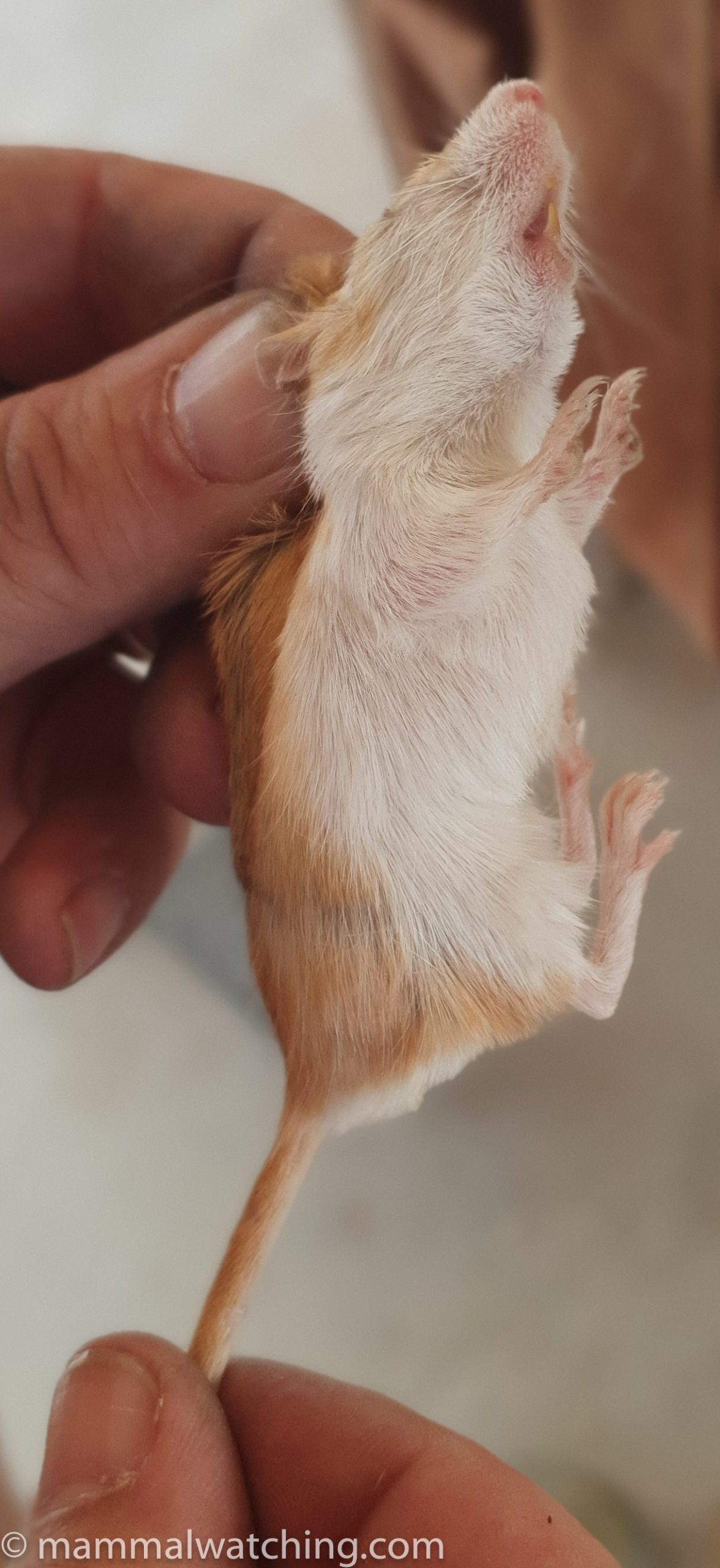
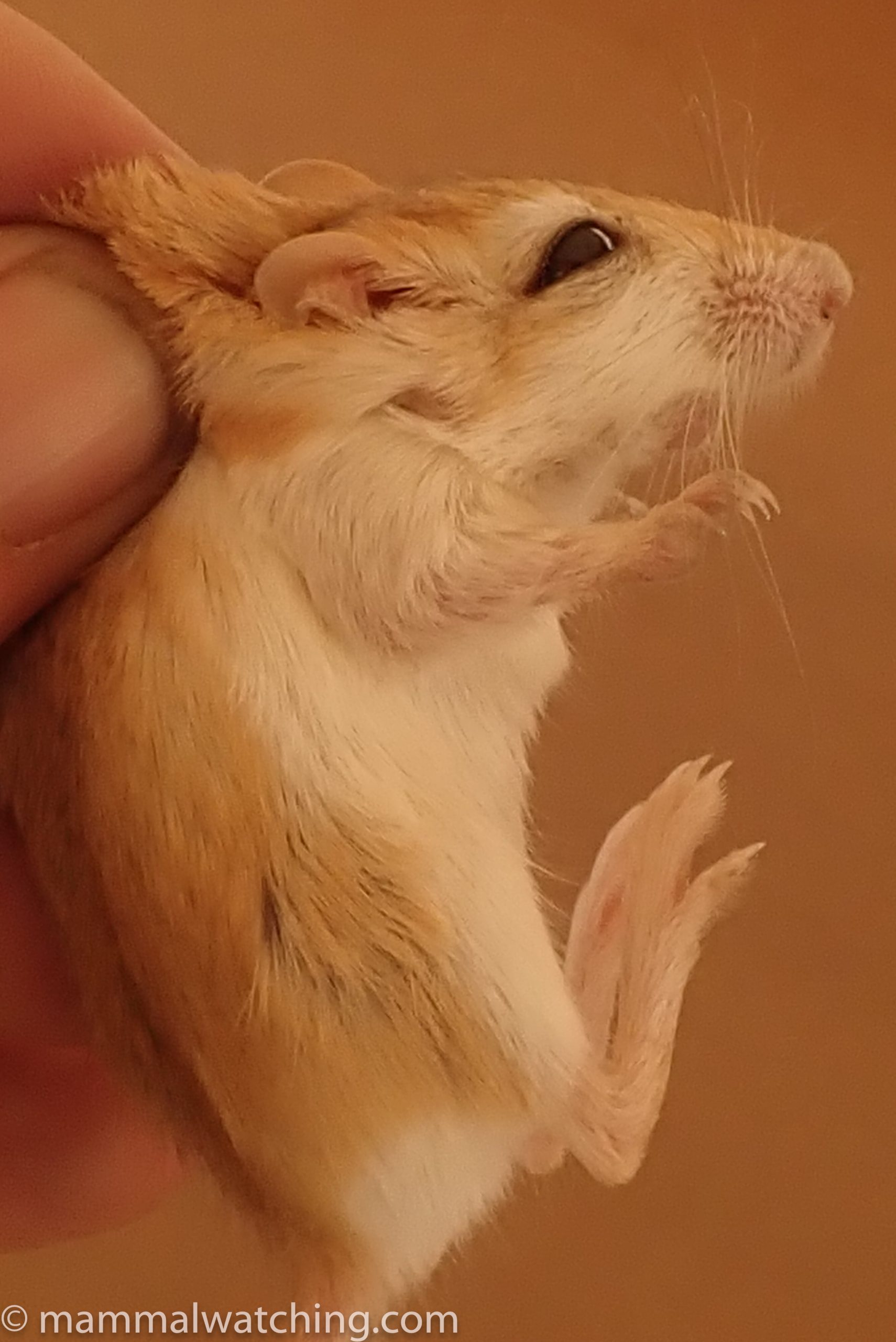
We caught two gerbils with almost identical measurements: a head body length of around 80mm, a tail of 120mm and a hairy hind foot of 24mm. I recorded these as Nigerian Gerbils. I am pretty confident they were not Pleasant (which have naked soles), Lesser Egyptian (which have a white spot on the rump), Tarabul’s (which are larger) or Pygmy Gerbils (which are smaller). So Nigerian is a best guess and they should be a common species here on the edge of the Sahel.
Pouched Gerbil (Desmodilliscus braueri)
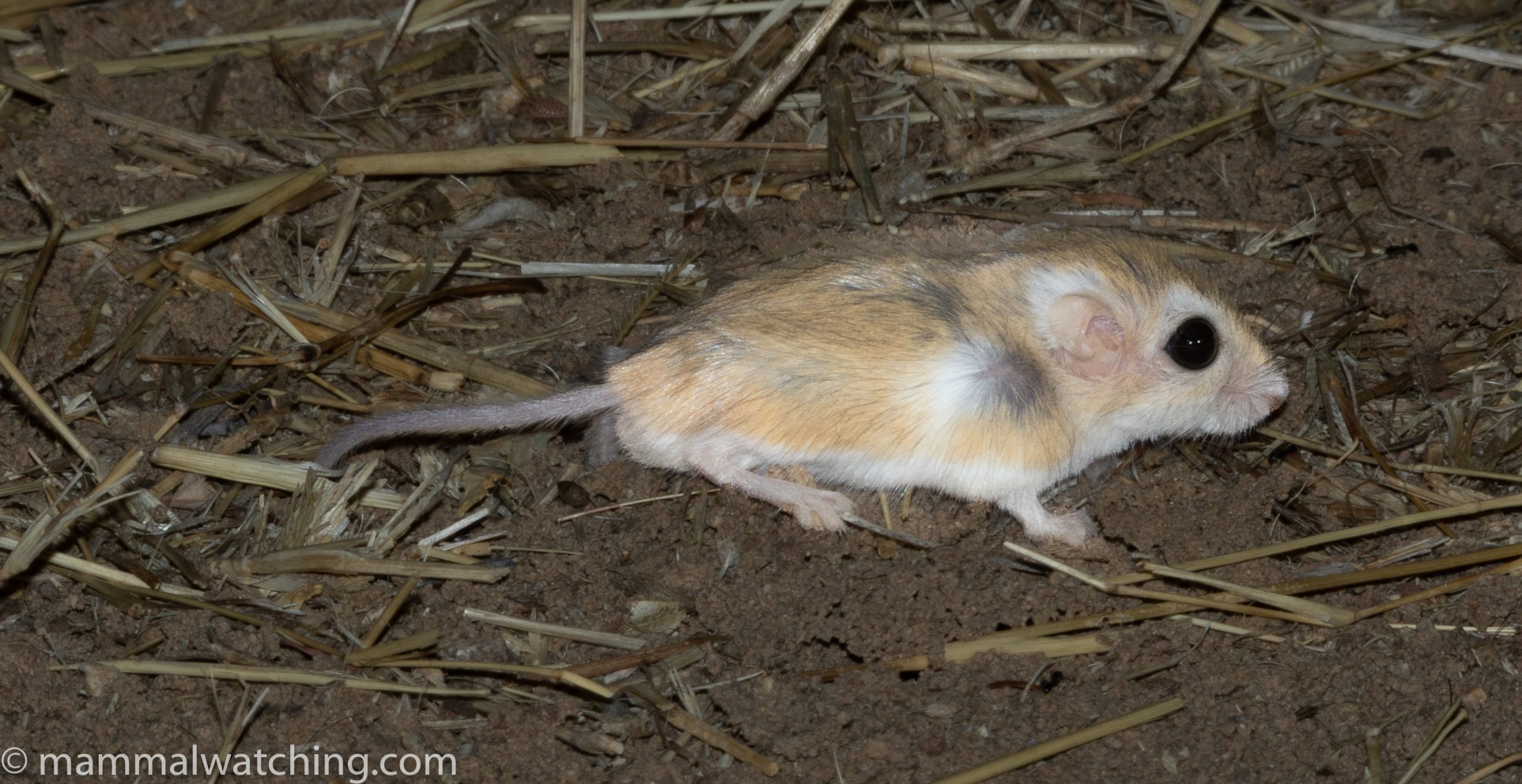
Jo spotted a pair of these under a bush near our campsite just south of the reserve on our way out. They were easy to catch by hand.
Heuglin’s Lemniscomys (Lemniscomys zebra)
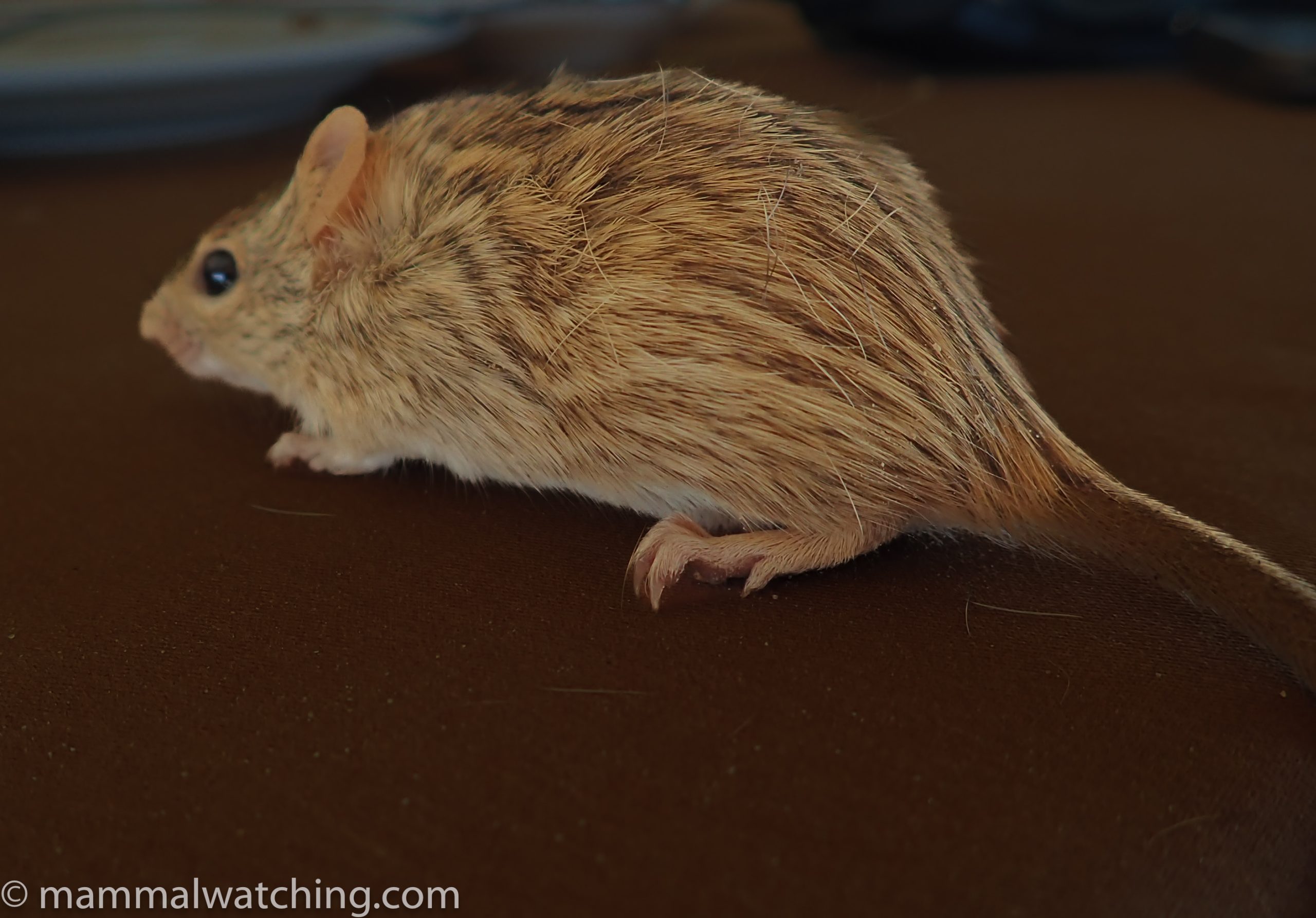
We saw several Zebra Mice in the early morning and late afternoon close to our tents. This is a diurnal species and I made an effort to catch one during our last morning.
Caracal (Caracal caracal)
The reserve seems a reliable spot to track down Caracal with some concerted effort. Tim and Kher knew where to focus our searching, in areas of grassland with fairly dense shrub cover, and we spent several hours looking. One of the vehicles got a glimpse in the morning of a Caracal. We drove slowly around the area and saw nothing. So we began walking and a Caracal rushed away from us. Brendan managed to grab a photo at lightning speed to confirm the ID. Twenty minutes later we had another glimpse.
African Wild Cat (Felis lybica)
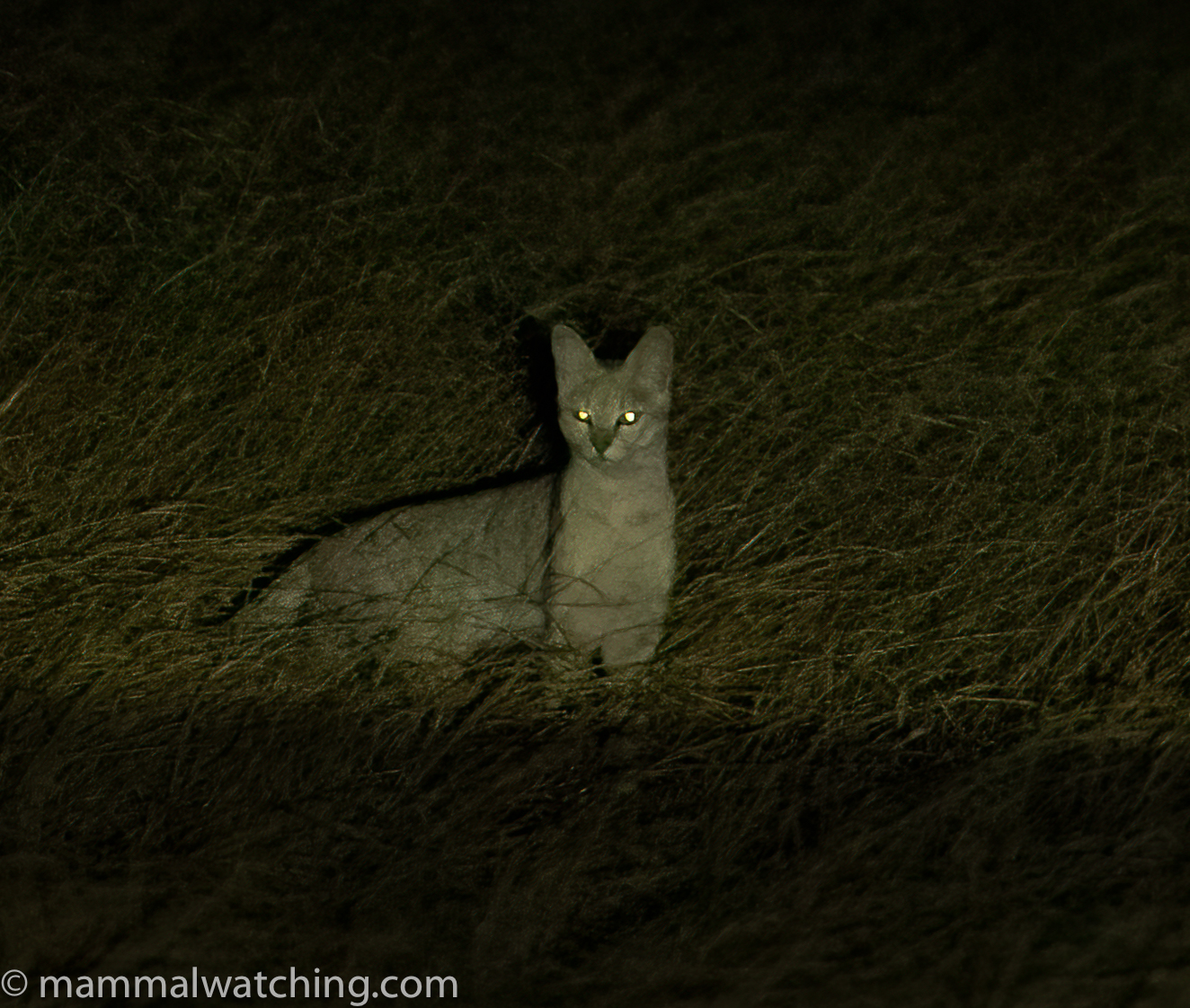
Wild Cats were abundant after dark and many of the animals we saw were very large , so much so that several were initially mistaken for Caracals by me.
Pale Fox (Vulpes pallida)
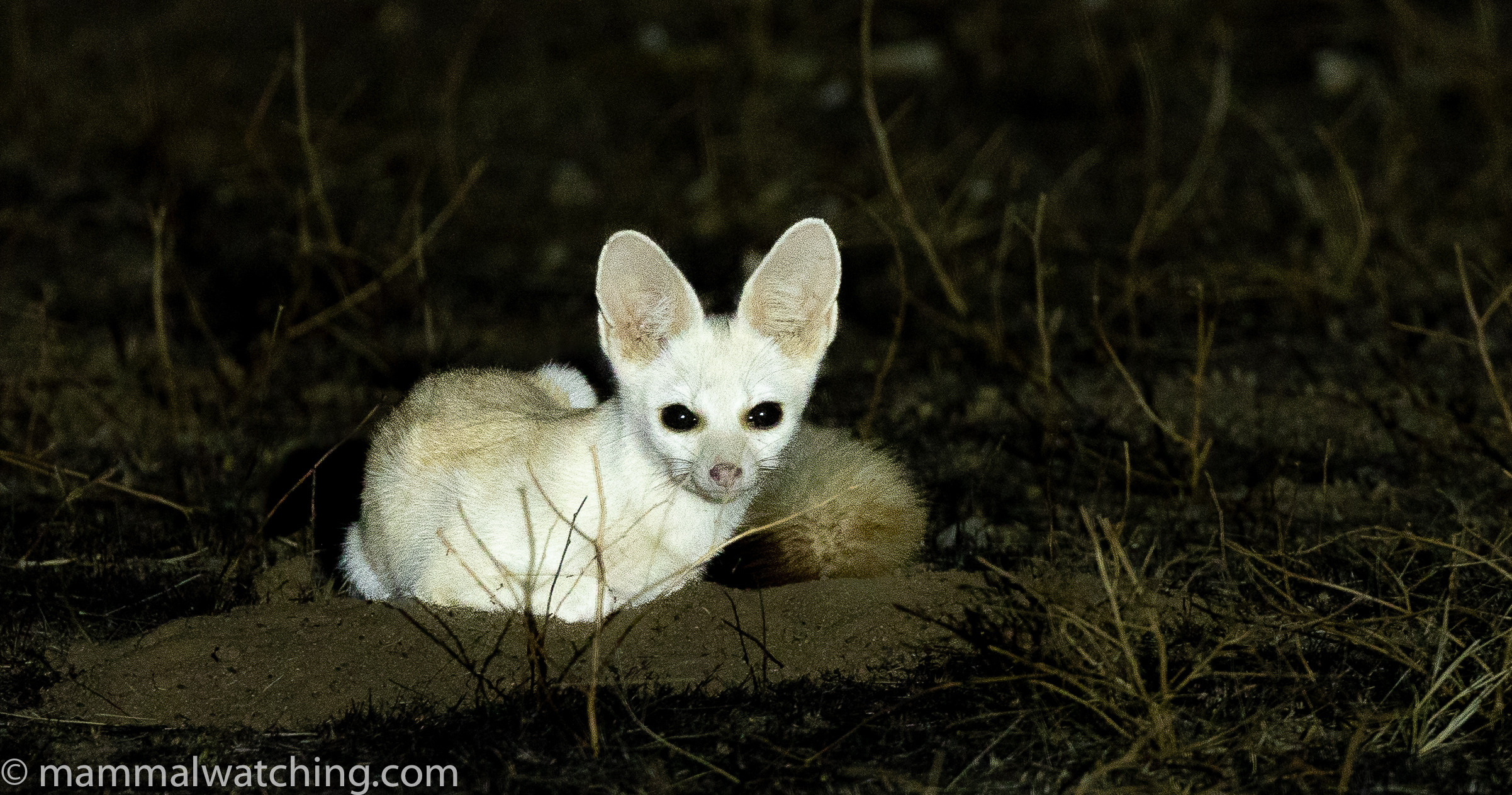
Pale Foxes were common after dark.
African Golden Wolf (Canis lupaster)
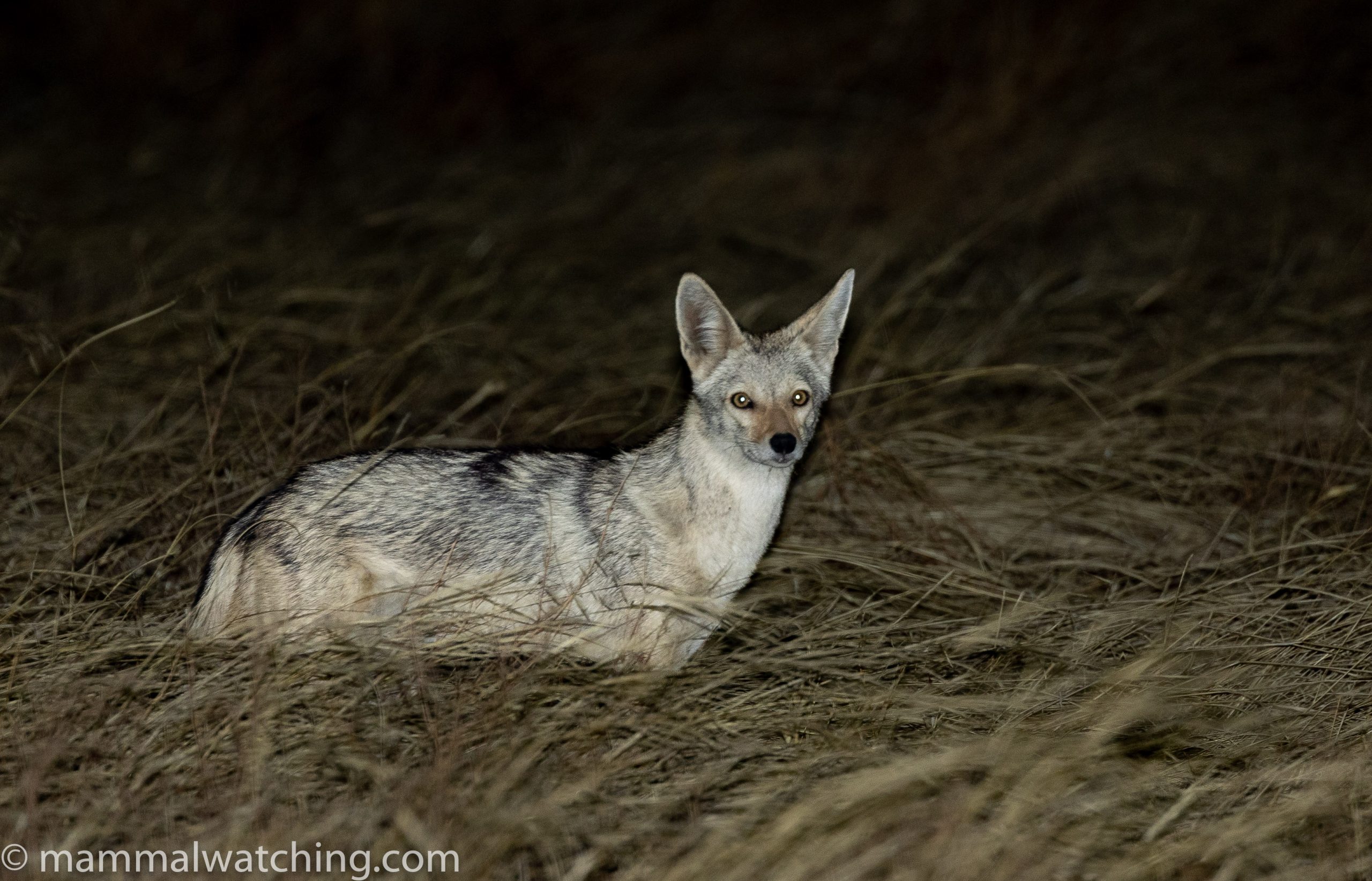
Multiple Golden Wolves each night and a few in the mornings too.
Honey Badger (Mellivora capensis)
One Honey Badger at night for a minute or so running at high speed through the desert. Impossible to photograph but impressive to see the speed they can reach.
Dama Gazelle (Nanger dama)
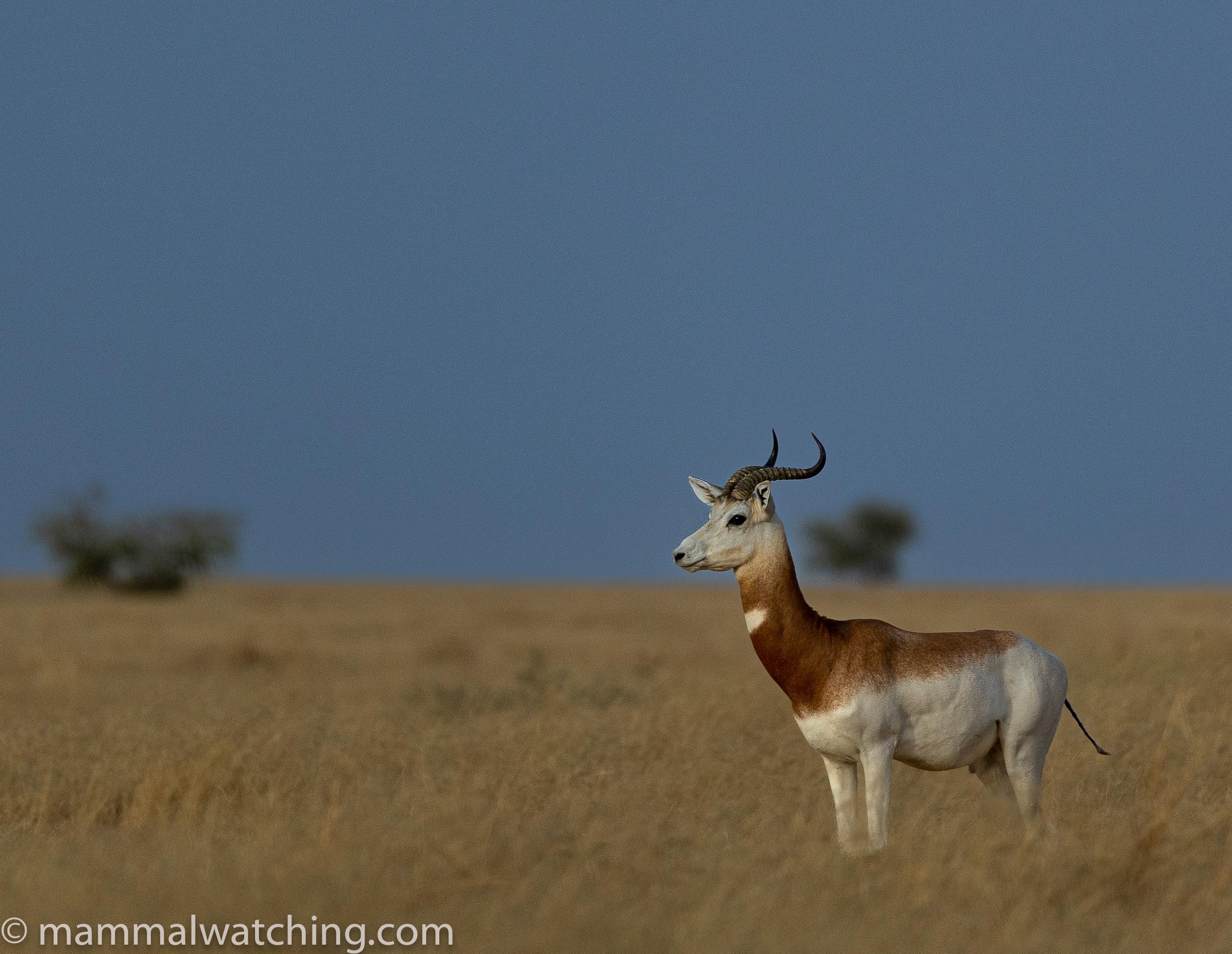
Before we arrived at the reserve I had not fully understood that the Dama Gazelles here are 100% original wild animals. There are 50 or so animals living wild in the reserve and they are all a part of the original population. Only about 200 remain in the wild in the remotest parts of the Sahel. A few animals, brought in from a private collection, are being held in enclosures near Oryx Base Camp but none have been released as yet. We were lucky to have seen Dama Gazelles every day and think we saw 12 different animals. Our ‘luckv’ was probably primarily due to Tim’s expertise in finding them.
Dorcas Gazelle (Gazella dorcas)
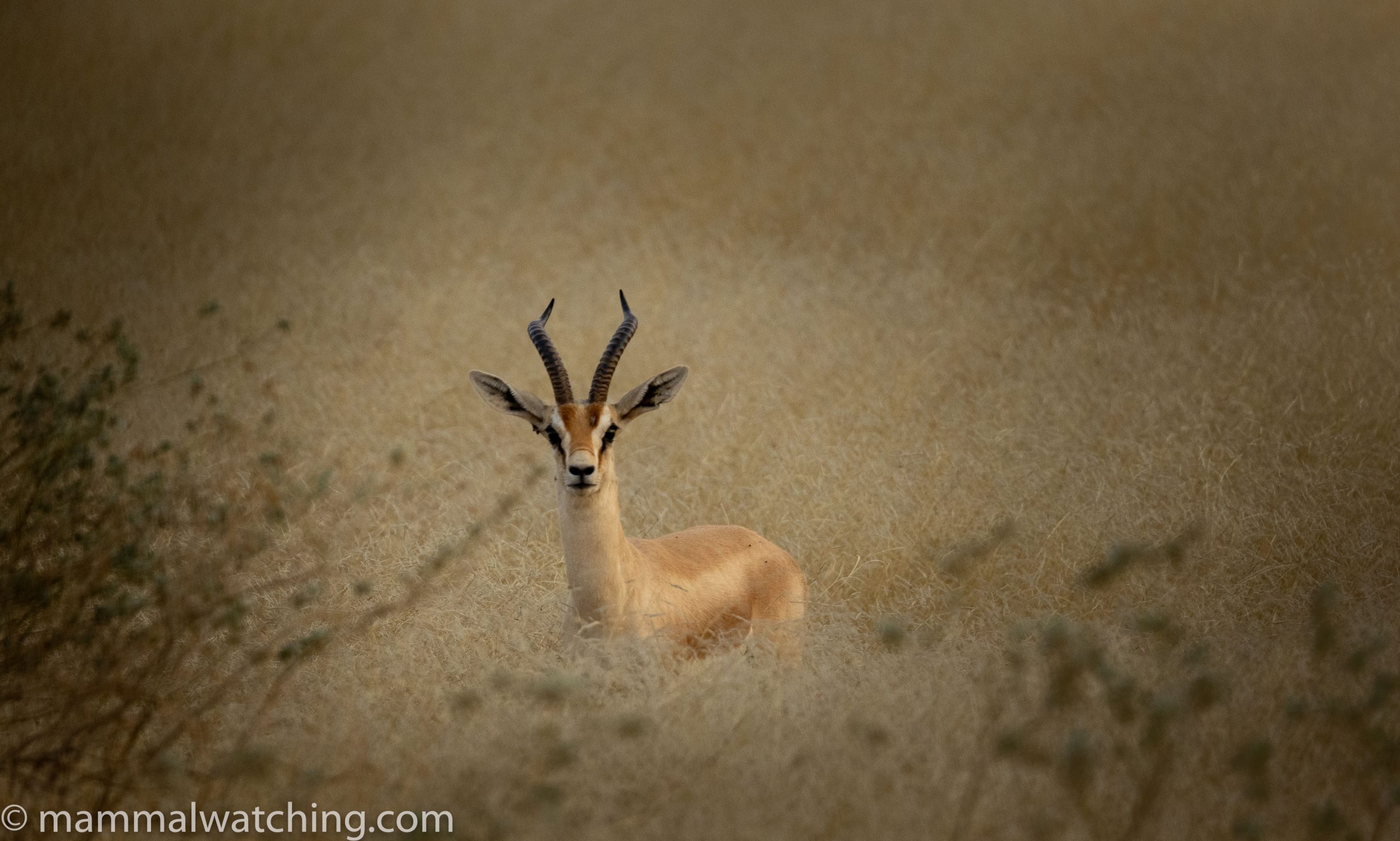
Common in the reserve.
Addax (Addax nasomaculatus)
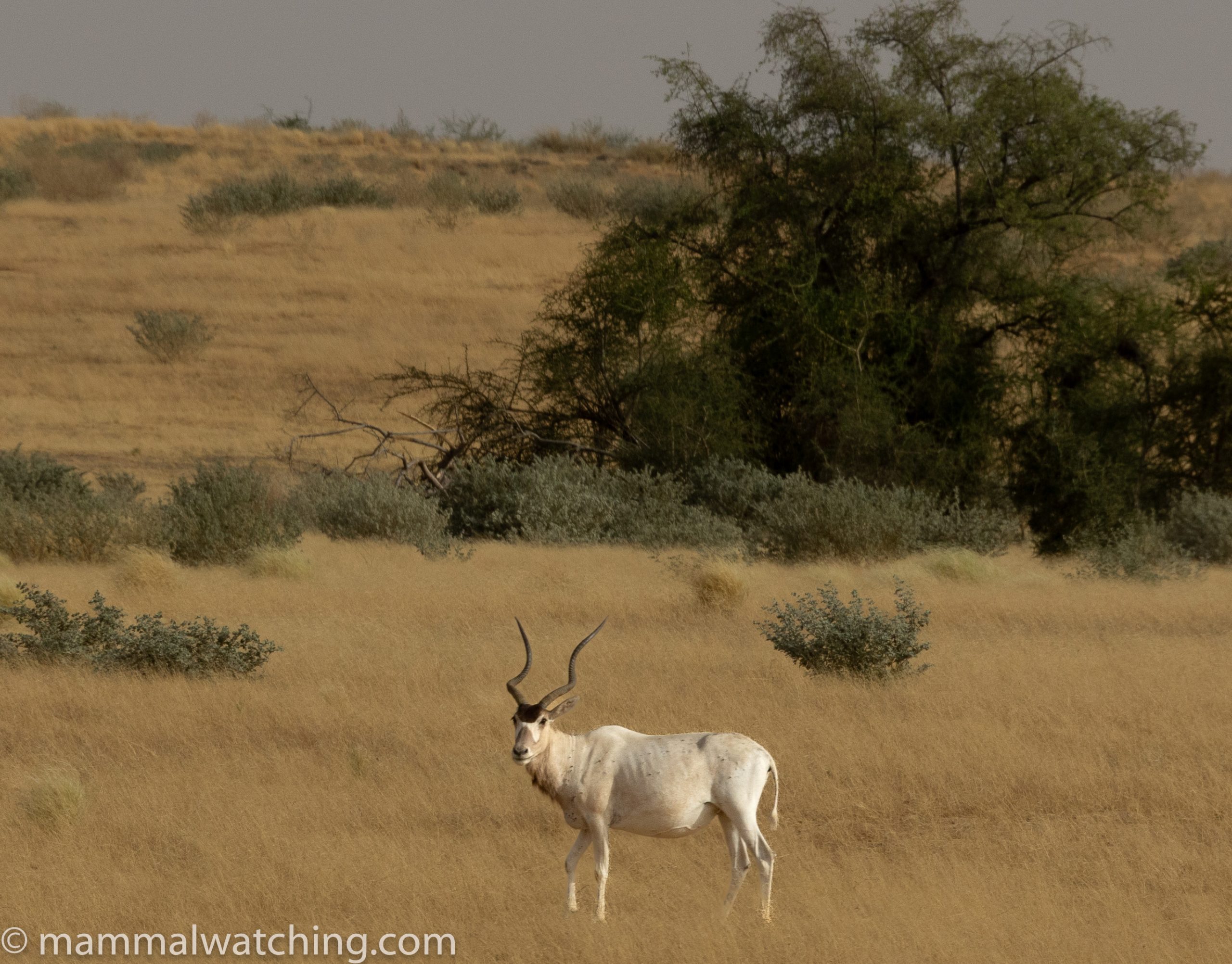
The Addax in the reserve are wild living, and many are wild born. The species was once recorded very close to the reserve – just 30km outside it – but are technically introduced, rather than re-introduced. I will add this species now to my life list as I was happy with their ‘wildness’. But purists might choose not to. The population here is not increasing as quickly as the Oryx and one theory is that the species is not coping with the many ticks in the reserve.
Scimitar-horned Oryx (Oryx dammah)
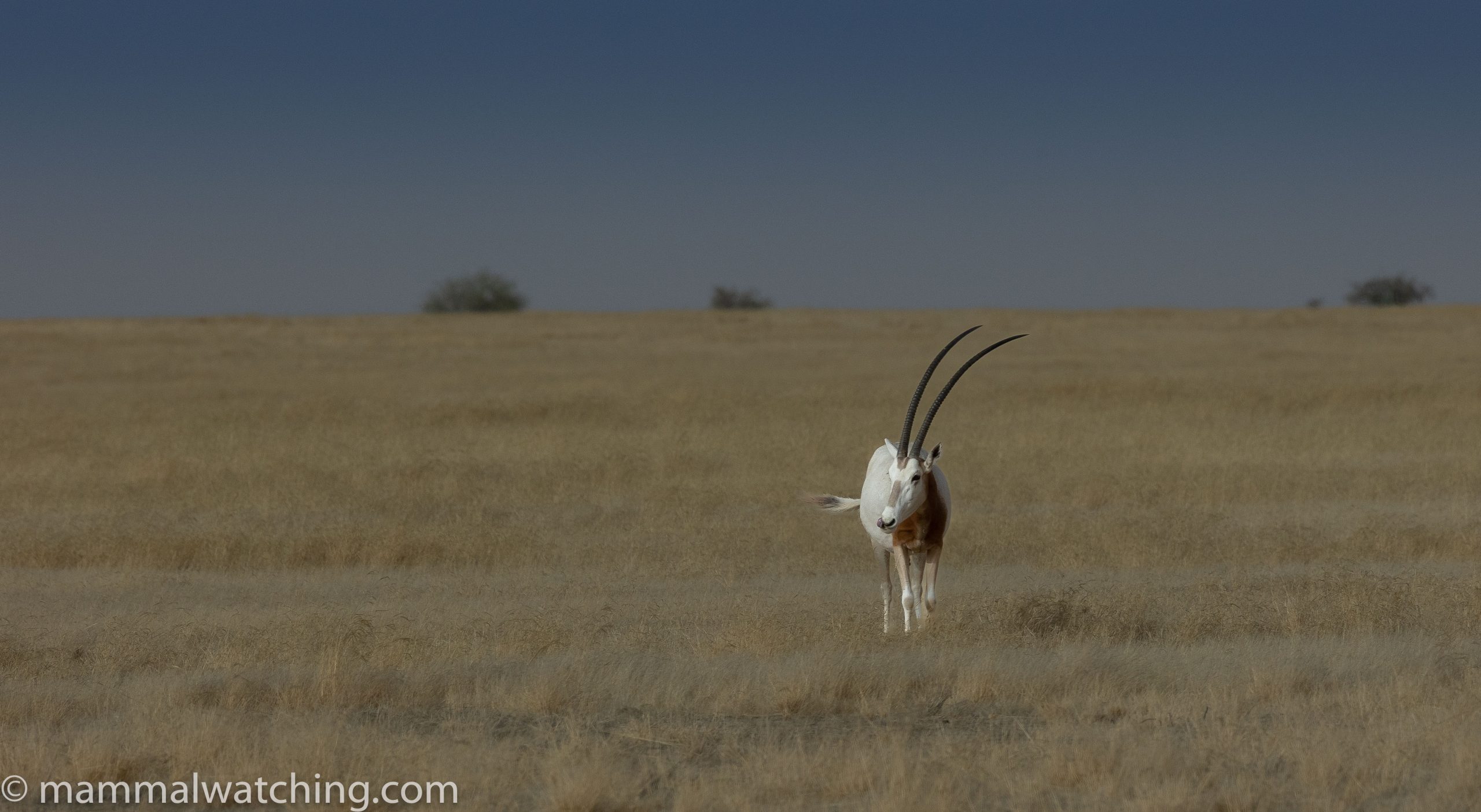
The first Scimitar-horned Oryx were reintroduced to the reserve in 2016 and numbers have grown naturally since then, topped up with further reintroductions. We saw many Oryx, including wild-born offspring of wild-born parents. I wasn’t sure how I would feel about including this species, or Addax, on my life list. But ultimately this is – in my opinion at least – a personal call. And as soon as I saw a line of wild-born Oryx disappearing into the grass I knew I was looking at wild animals. Just beautiful.
Zakouma National Park
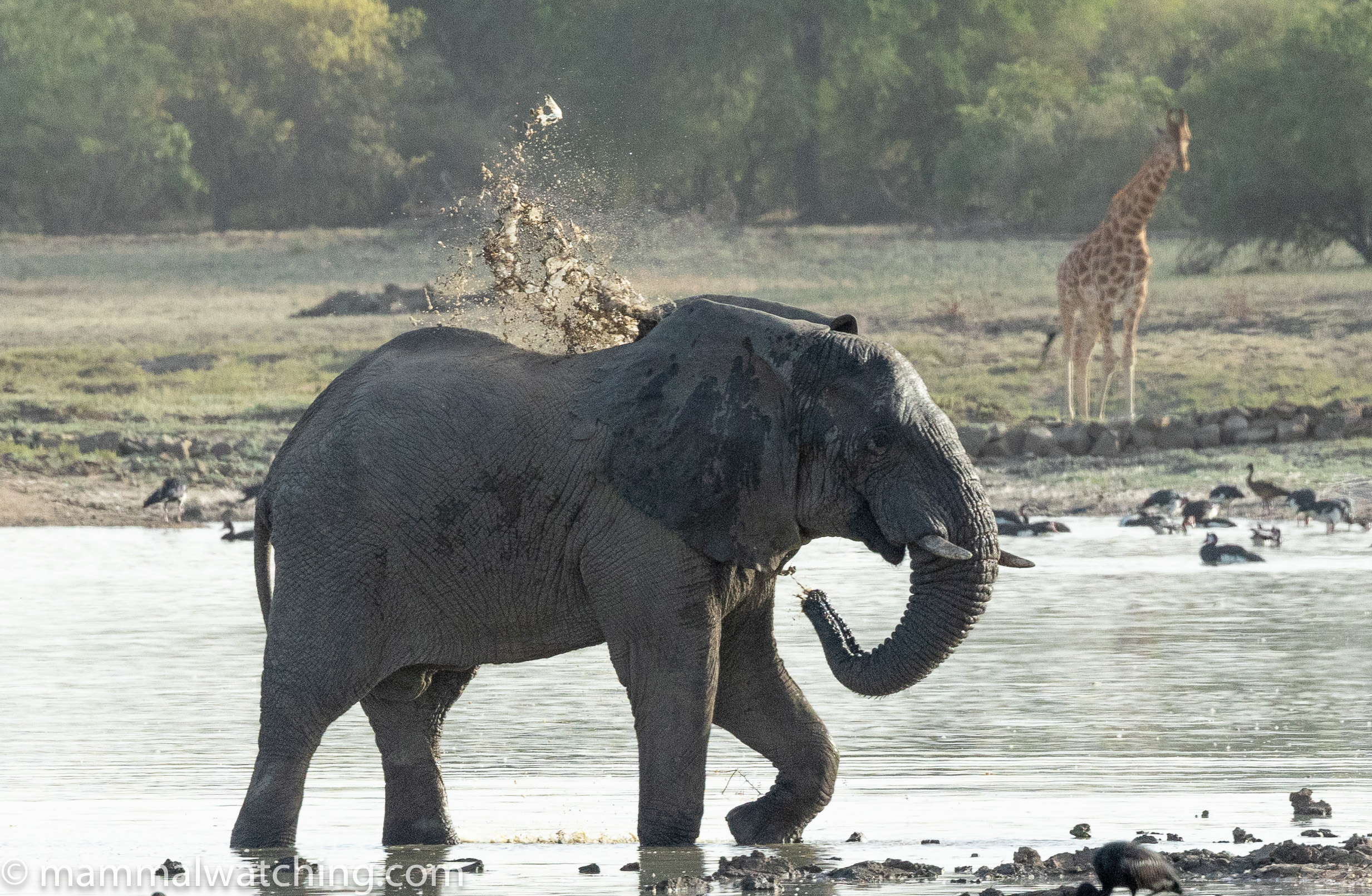
The third and last segment of our trip was spectacular Zakouma National Park. We had five full days here, on a more traditional safari, taking long morning, afternoon and night drives in search of the park’s many mammals. The schedule was ours to design as we wished.
We stayed at Tinga Camp, which in fact is a collection of small chalets not safari tents. The staff, especially our unstoppable driver Togi, were excellent and the food was good. The prices at Zakouma help to ensure it is a destination for the few, not the many. Tinga, while expensive, is a fraction of the cost of the very high end, and ultra exclusive, Camp Nomade close by.
By April, large herds of Elephant, Buffalo and antelope usually gather close to Zakouma’s two camps. We saw a great many animals, but not the large herds we had expected. This was likely due to sporadic rains that had continued to fall well into the ‘dry’ season.

The bird life was out of control: huge congregations of Marabou Storks, Crowned Cranes, Egrets, Pelicans and more. One of our absolute highlights here were the Red-billed Quelea. These sparrow-sized birds gather in Zakouma in the tens of millions. From what I understood, finding a huge roosts can be a bit hit or miss and roosting sites change from week to week. Camp Nomad is usually a reliable spot; but not this year.
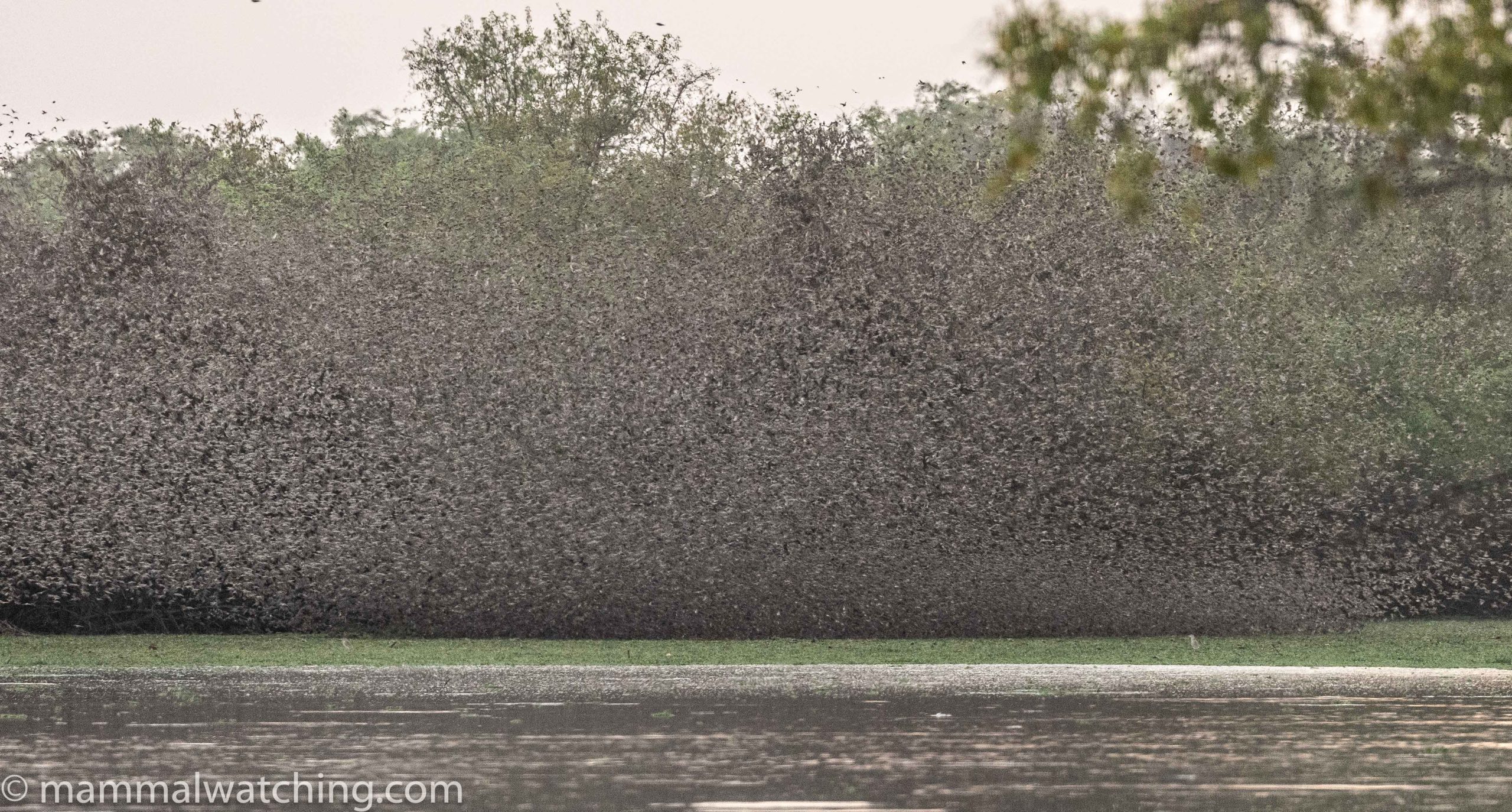
Red-billed Quelea at dusk
Our driver, Togi, had discovered a large roost a week or so before we arrived and we had a stunning evening watching an estimated 15-20 million birds coming into roost. Words don’t do this spectacle – or the noise – justice so here is a video narrated by Dan Nugent.
African Parks had given me permission to trap small mammals here. But this was a total bust. In part we had a heavy schedule, with morning drives starting before dawn. That meant there wasn’t time to set traps in better habitat away from camp, although given the number of Lions wandering around that might not have been a great idea in any case. Tinga Camp was also full of Olive Baboons and Tantalus Monkeys, both of which would have have made short work of my traps so I had to set them at dusk and pick them up before dawn. But perhaps the main reason was the heat, the dryness and the lack of grass cover around camp and through most of the nearby park. We didn’t see any rodents running around after dark near Tinga and the small mammals may have been aestivating. Just three weeks earlier Martin Royle reported plenty of long grass.
We saw around 25-30 different species most days. Within the national park there was not a huge variation in the mammals we encountered between different areas. It was a another story around the village of Goz Djerat just outside the park, where we spent a morning and a night exploring the scrub. It was here – and only here – that we encountered Aardvark, Wild Cat, Pale Fox, Gambian Sun Squirrel and Slender Mongoose. Red-fronted Gazelles were also more common in this area than inside the park. We visited this area to search for Red-flanker Duiker: a complicated discussion with some of the Zakouma drivers had concluded the species was common close to the village. We saw dozens of Common Duiker but no Red-flanked. With hindsight I am not sure the drivers could distinguish between the two species and we should have focused on the riparian forest, south of Tinga Camp where Martin Royle’s group had seen them.
Zakouma’s Mammals
African Elephant (Loxodonta africana)
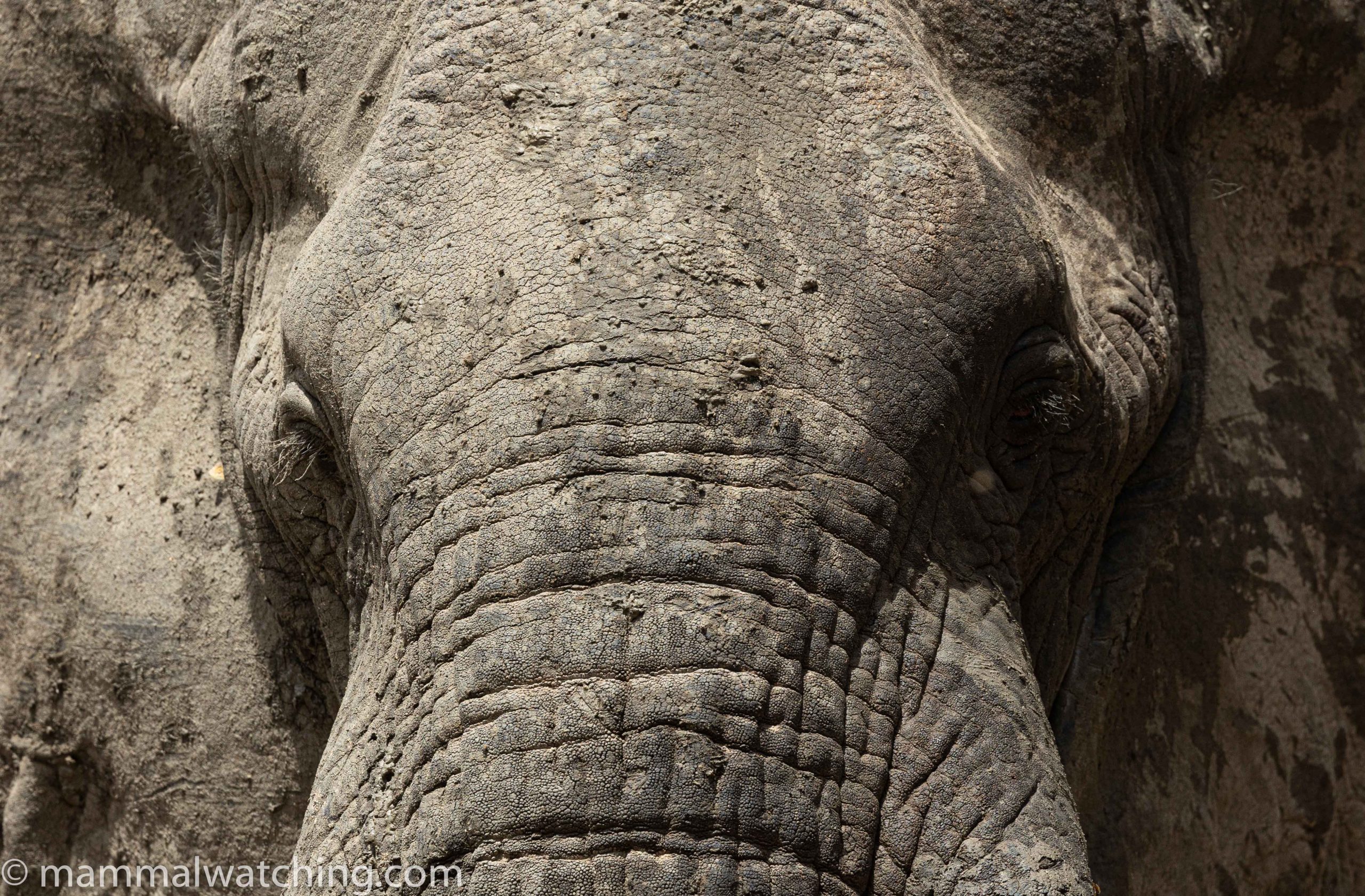
Common around Tinga Camp and along the river. One day we searched for large herds by the river in the south of the park but couldn’t find any. The next day Nicky, who took a private vehicle for a couple of days, saw a very large herd in this area which she described as a “true ele extravaganza” with perhaps 200 animals in the herd.
Aardvark (Orycteropus afer)
A long night drive around Goz Djerat Village, just outside the park, was productive and we spotted an Aardvark after midnight; it ran away fast.
Savanna Hare (Lepus (victoriae) microtis)
Some of our group saw one hare, presumably this species.
North African Crested Porcupine (Hystrix cristata)
One on our last night drive.
Striped Ground Squirrel (Euxerus erythropus)
A few seen.
Gambian Sun Squirrel (Heliosciurus gambianus)
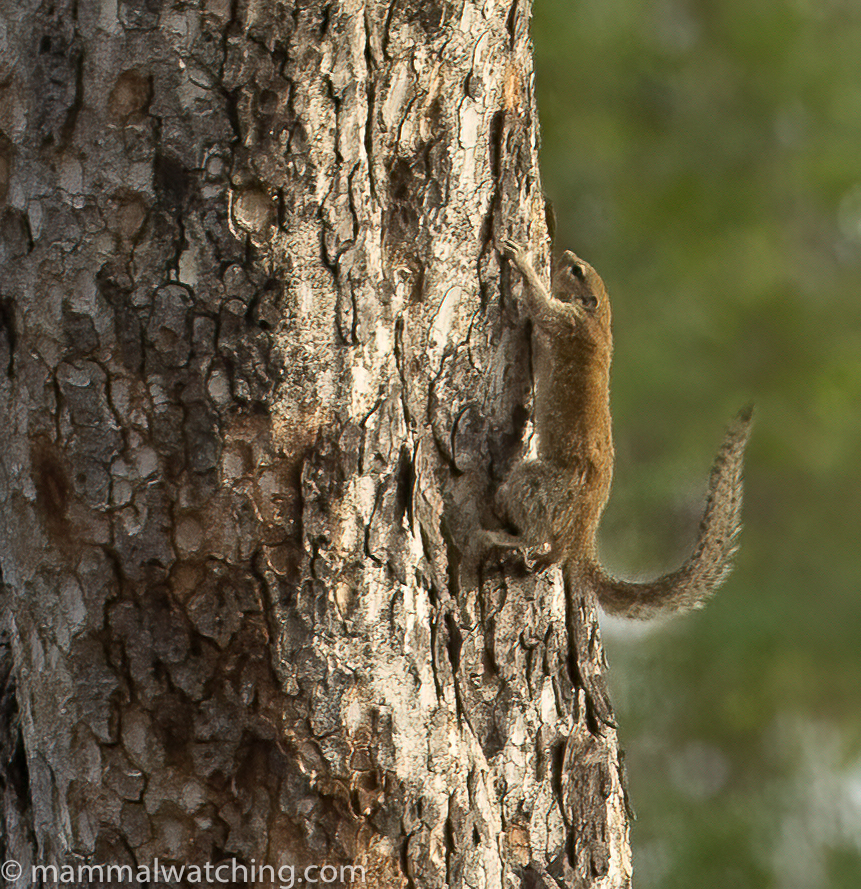
None inside the park but several in the early morning in the bush around Goz Djerat village.
Congo Gerbil (Taterillus congicus)
We spotted a gerbil on our last night drive in one of the few areas of the park which still had decent grass cover. It was identified as this species on the basis of size and an old trapping study around Zakouma which found the species to be common.
Northern Lesser Galago (Galago senegalensis)
Very common in the small trees close to Tinga Camp but hard to photograph and no particular effort was made to take pictures.
Olive Baboon (Papio anubis)
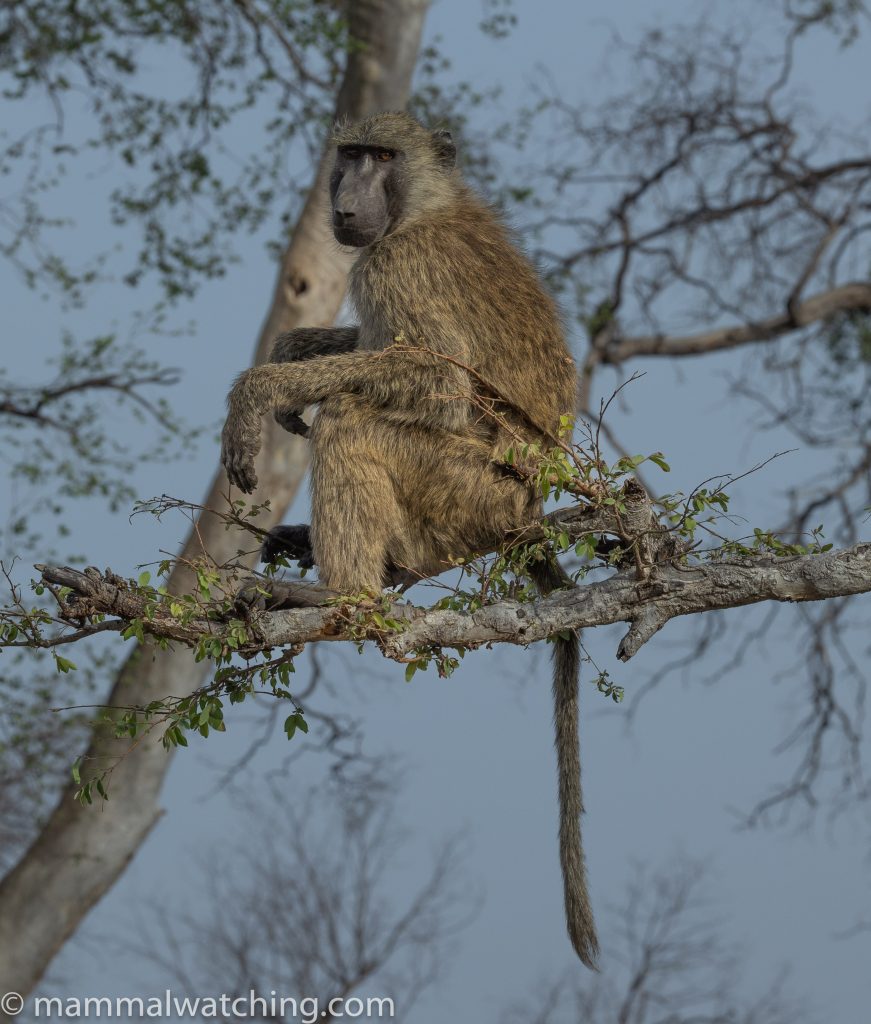
Very common across the park including at Tinga Camp where a troop was engaged in a long-term campaign to break through the flyscreen on my bathroom window.
Common Patas Monkey (Erythrocebus patas)
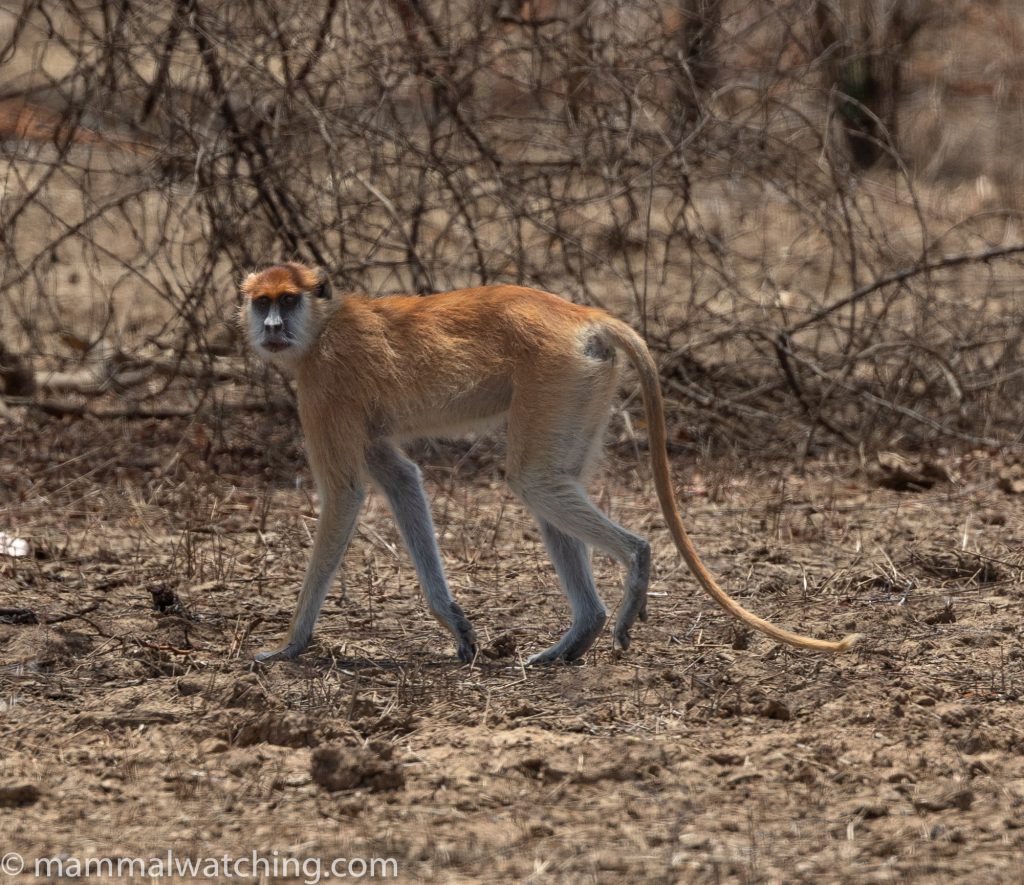
We saw them on two days though we we could have seen more if we had made a special effort to search for them.
Tantalus Monkey (Chlorocebus tantalus)
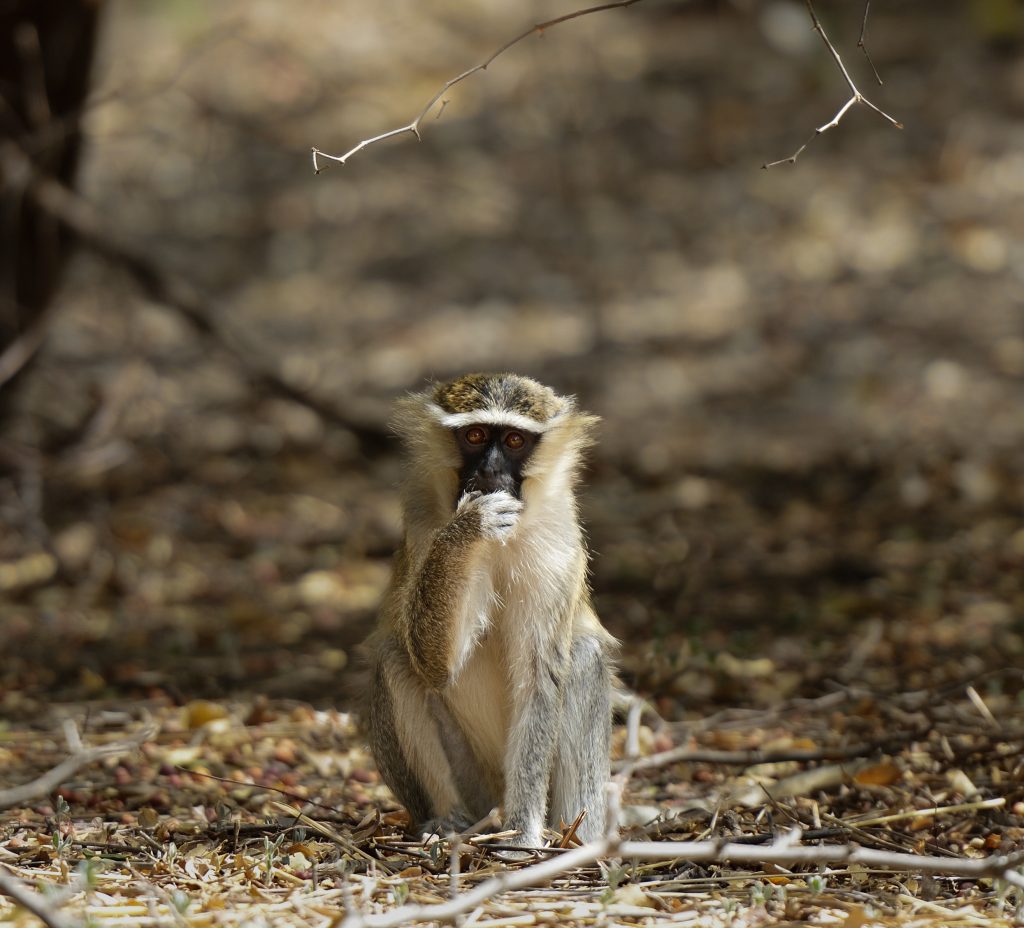
Photo Dan Nugent
Very common, including around Tinga Camp.
Yellow-winged Bat (Lavia frons)
Some of our group saw one animal flying at night. Our driver spotted one fly out of a tree in the morning after being disturbed by our vehicle.
Hairy Slit-faced Bat (Nycteris hispida)
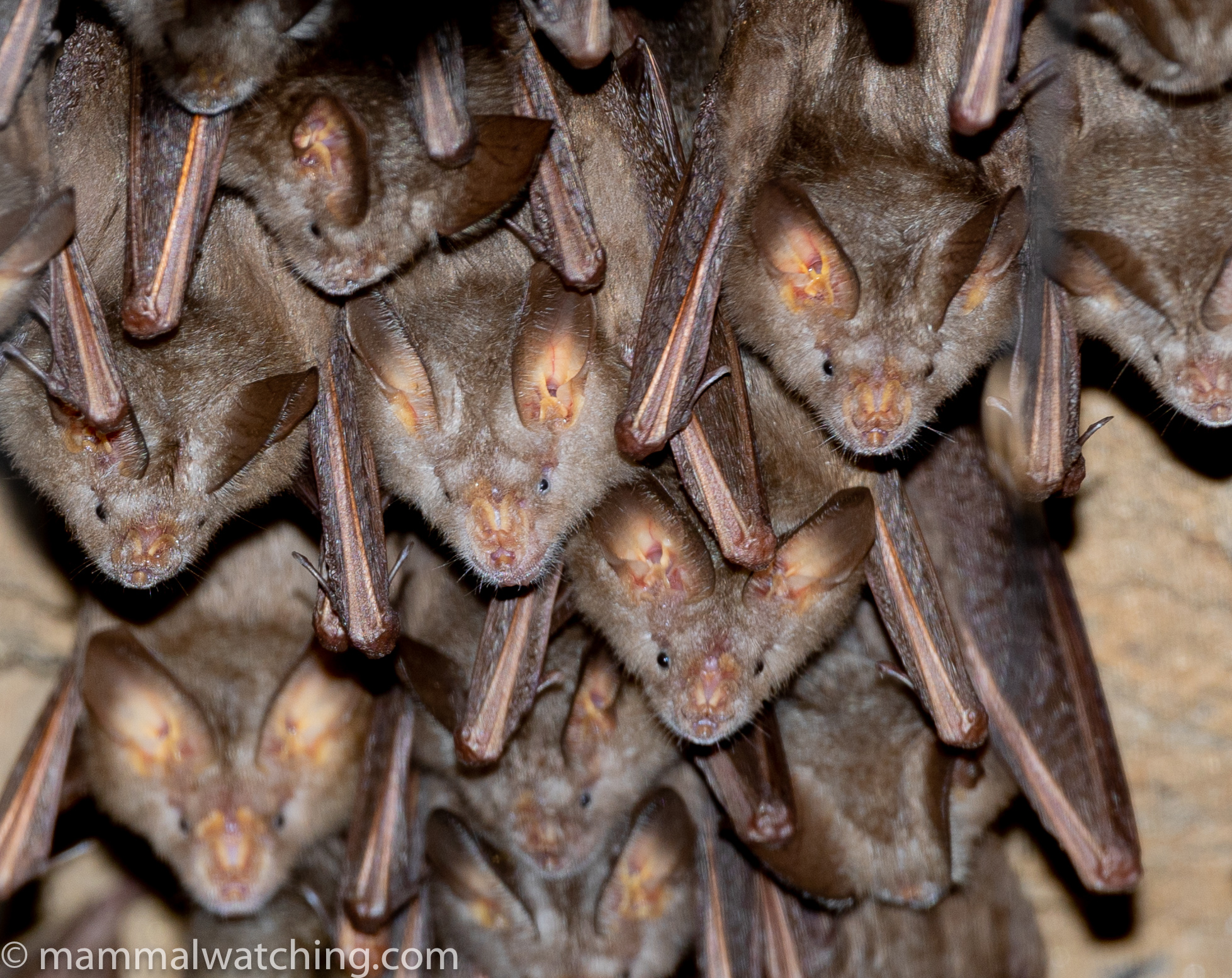
We visited the south of the park on a full day’s drive but spent most of the day sheltering in the shade by a pool in a largely dry river bed. A troop of Olive Baboons was moving through the small trees on the bank opposite us and I noticed a stream of bats flying into a sand ‘cave’ just above the waterline (a cave dug by a crocodile). We crossed to the other side, tried to avoid the crocodiles and peered inside. A hundred or so slit-faced bats were close to the entrance, with their specie – Large-eared Slit-faced Bats – confirmed by the helpful Afribats community on INaturalist.
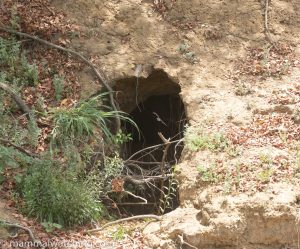
Bat and crocodile cave
Large-eared or Egyptian Slit-faced Bat (Nycteris macrotis/ N. thebaica)
Many nycteris bats were roosting under the Tinga restaurant, and I saw a few more in the roof space above my room. It is difficult to distinguish the Large-eared from the Egyptian species from photographs, but these are one, or both, of the two.
Midas Mops Bat (Mops midas)
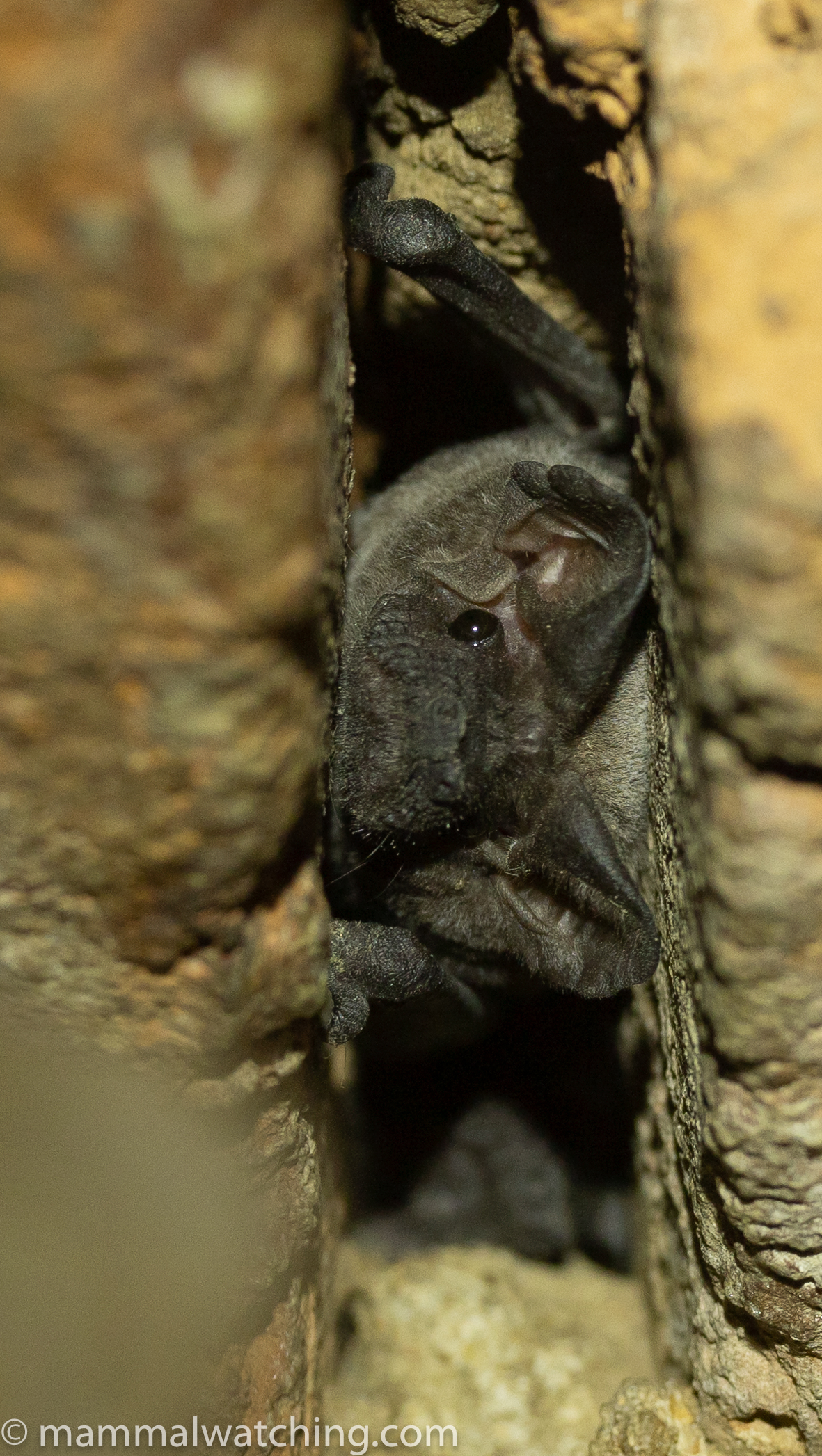
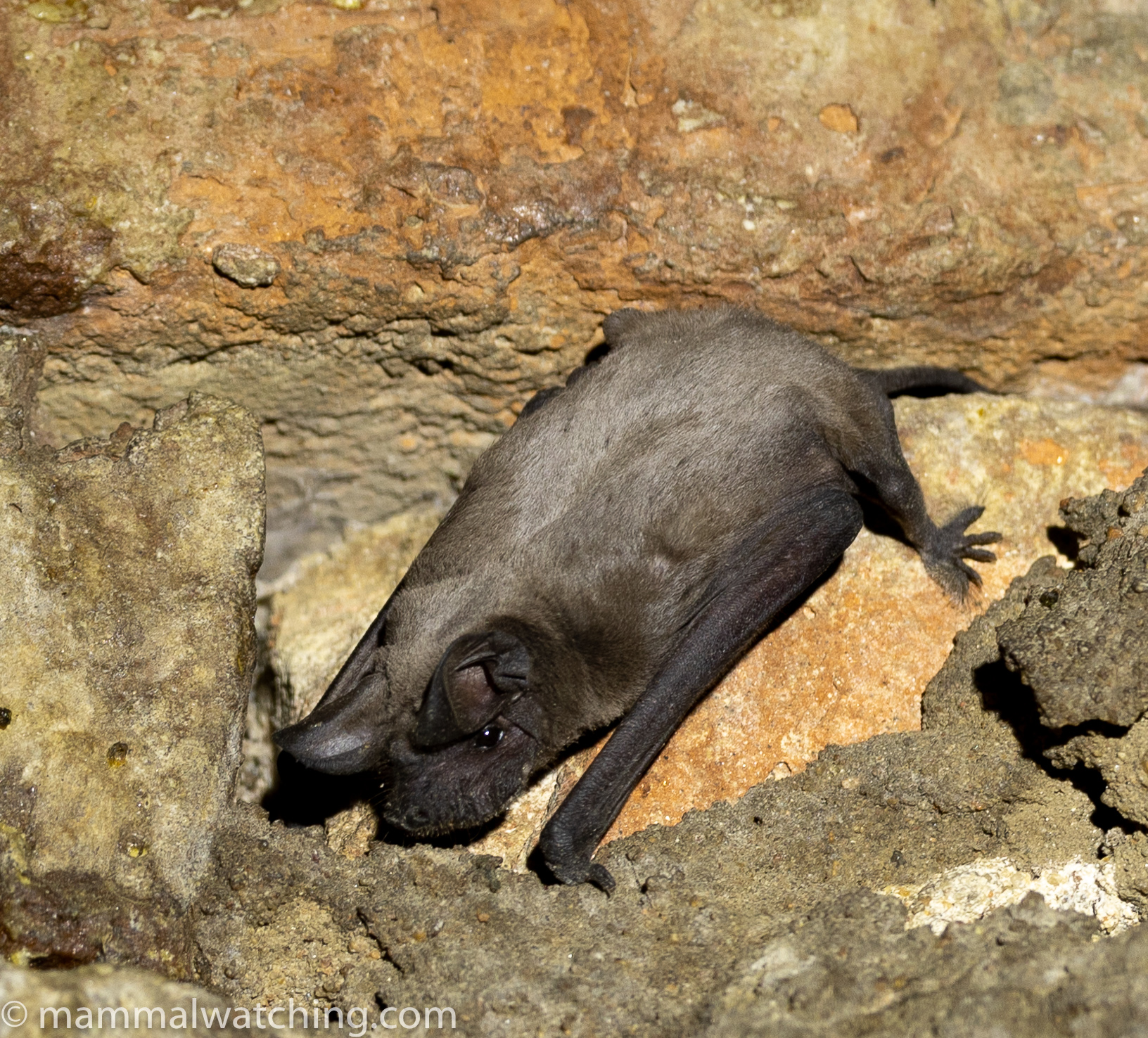
We found a colony of freetail bats inside an empty room right next to the park gate at Goz Djerat. Certainly mops bats, and on the basis of size (around 10cm head body) and colouration they ought to be Midas Mops Bats.
Lion (Panthera leo)
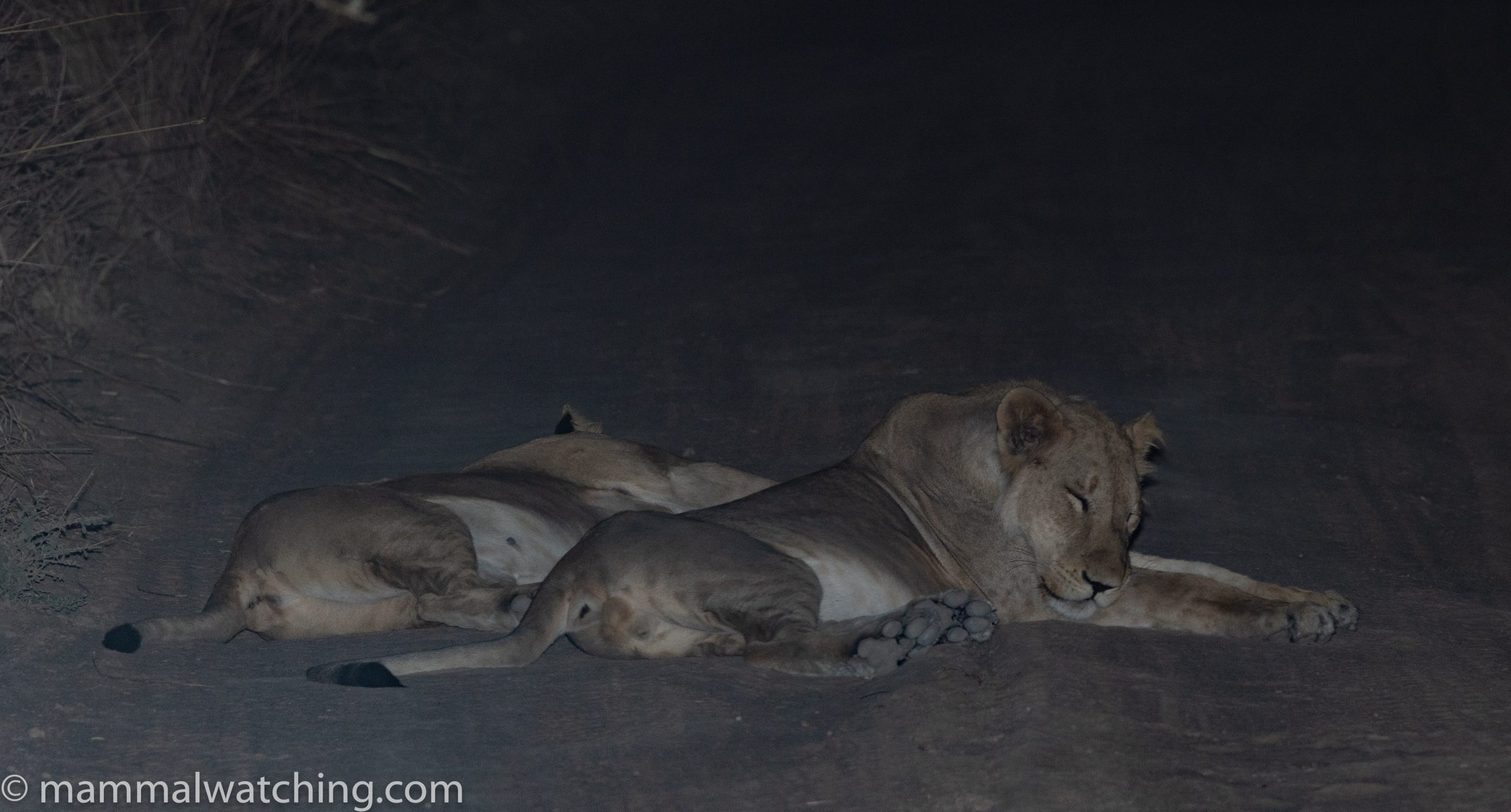
Lions are very common in Zakouma and we saw them every day and on almost every drive.
Leopard (Panthera pardus)
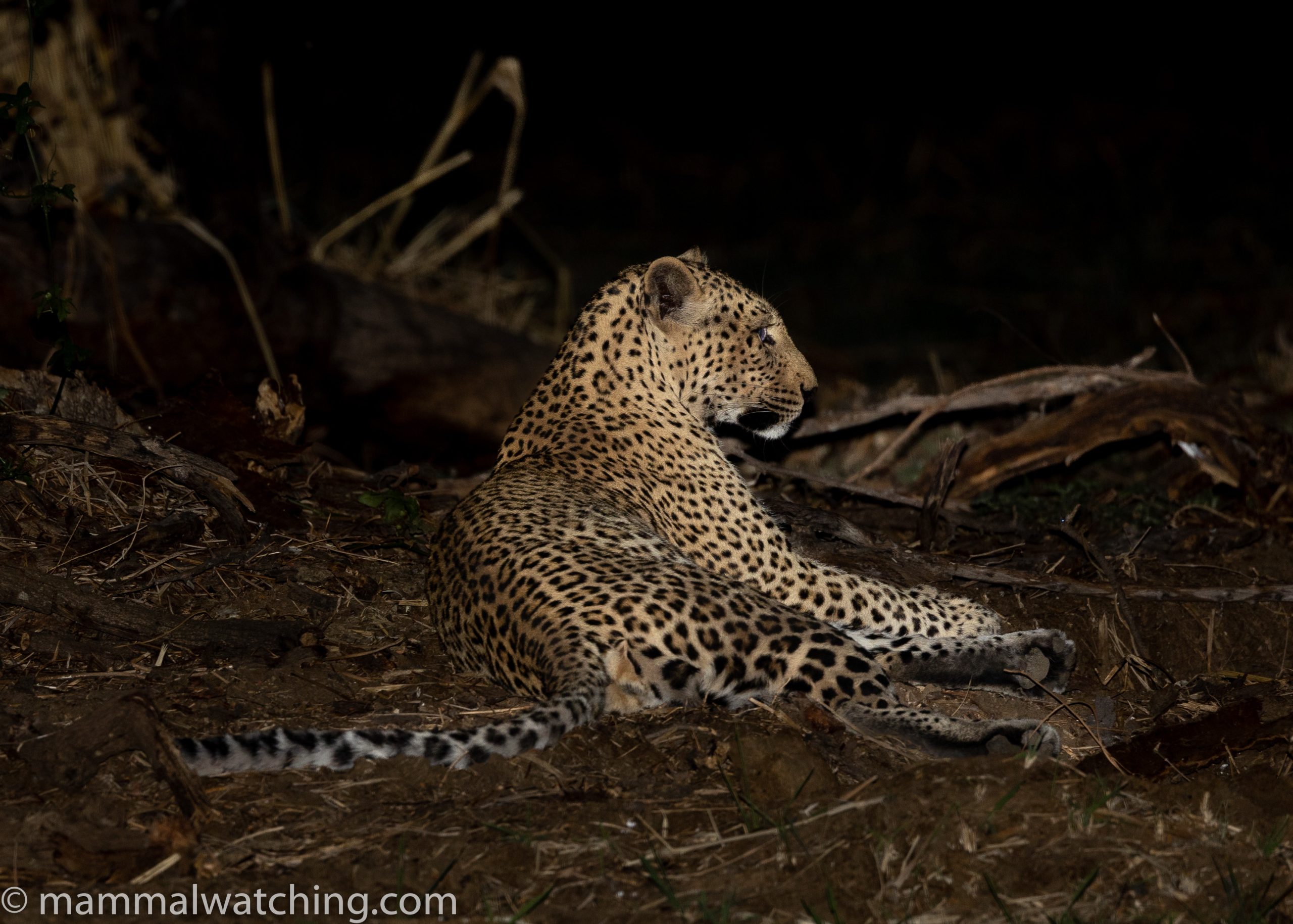
Two separate sightings near Camp Nomade on the same night.
Serval (Leptailurus serval)
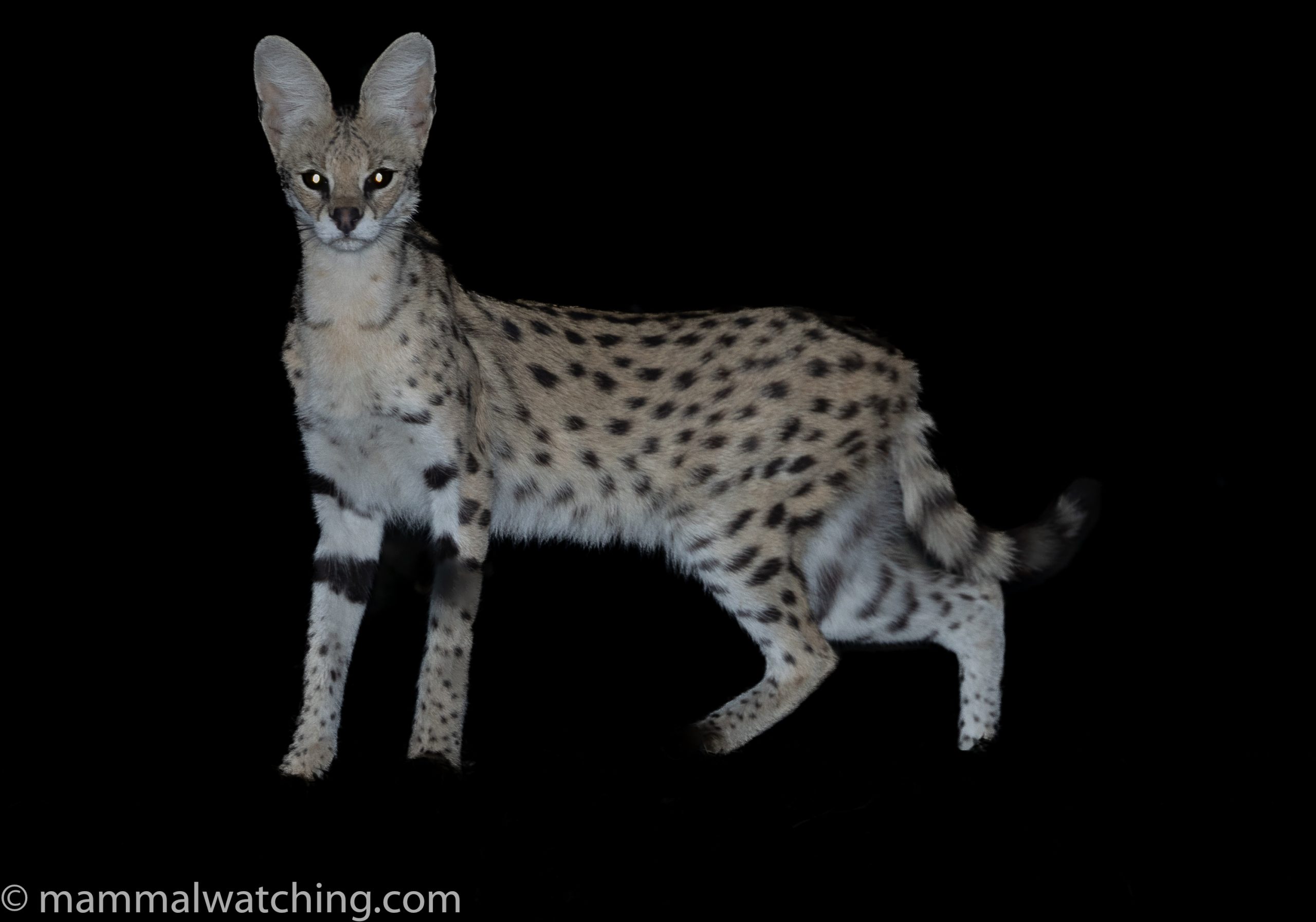
Zakouma is the Serval capital of the world! Tom celebrated his 50th Zakouma night drive and had seen a Serval on every single one. We recorded at least 20 during our six nights.
Caracal (Caracal caracal)
A brief glimpse of one animal.
African Wild Cat (Felis lybica)
Surprisingly we didn’t see any Wild Cats inside the park. We saw one in the bush around Goz Djerat at night.
African Civet (Civettictis civetta)
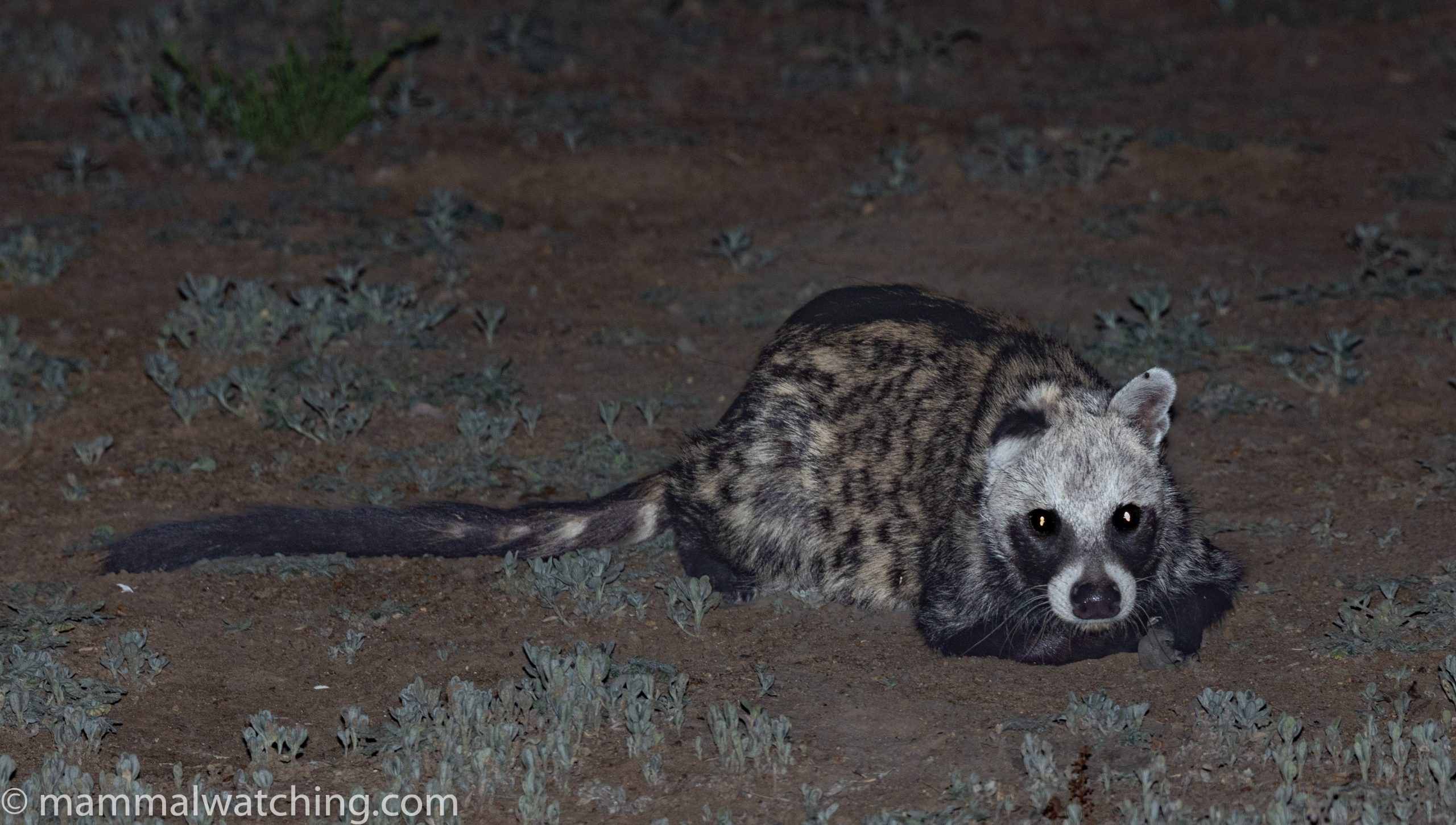
African Civets were very common and we saw several animals each night.
Common Genet (Genetta genetta)
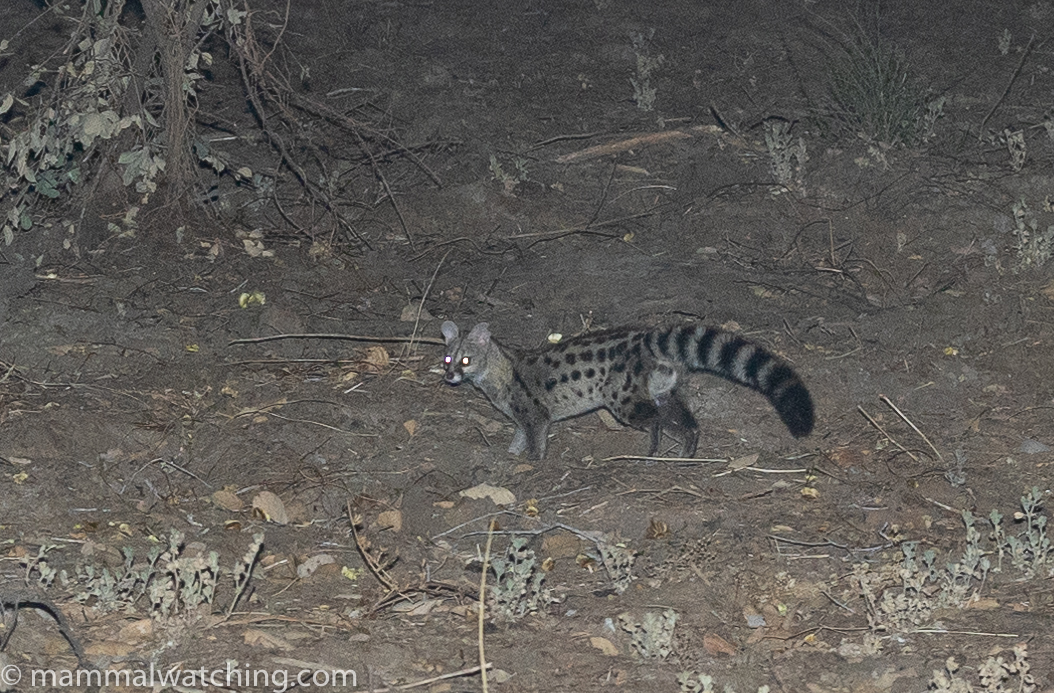
Genets were also very common though sometimes hard to tell the two species – large-spotted and small-spotted – apart. None of the animals we saw had white tips to their tails for instance, which is often claimed as a way to distinguish the Small-spotted Genet. We saw both species, and I suspect the Large-spotted Genets were more common.
Central African Large-spotted Genet (Genetta maculata)
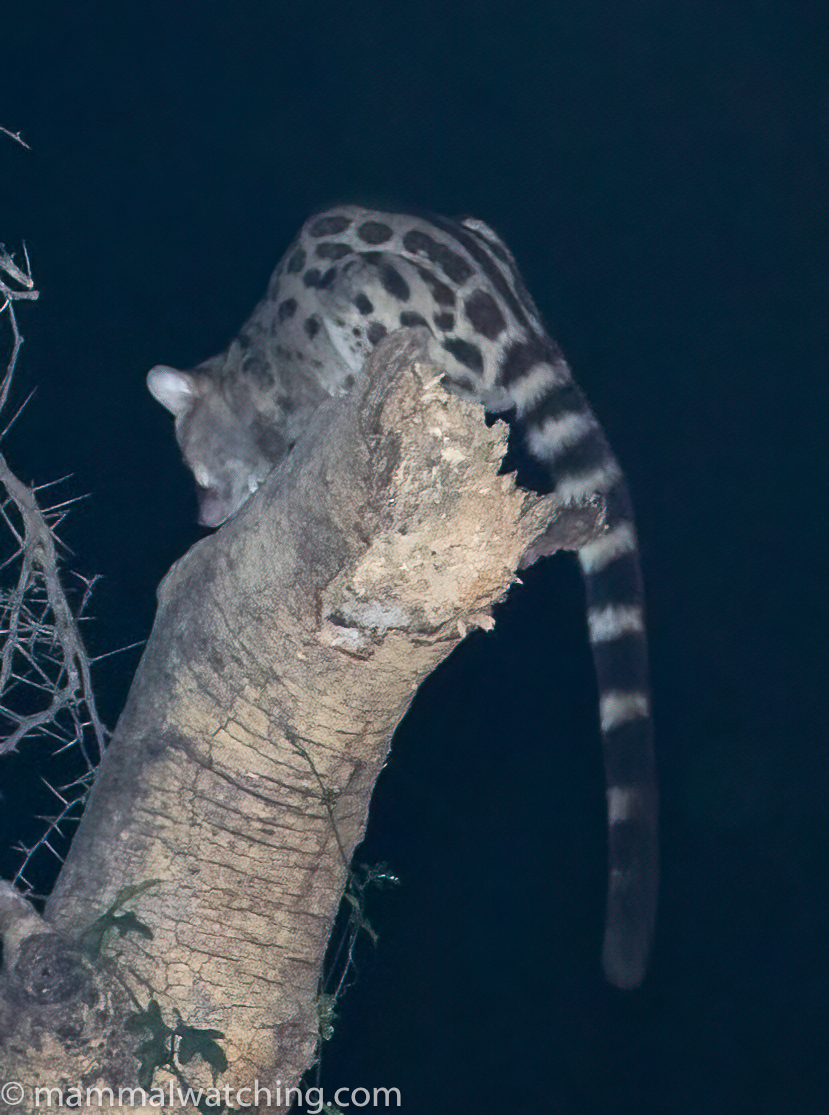
As above: genets were common and I think the Large-spotted Genet was more numerous.
Spotted Hyena (Crocuta crocuta)
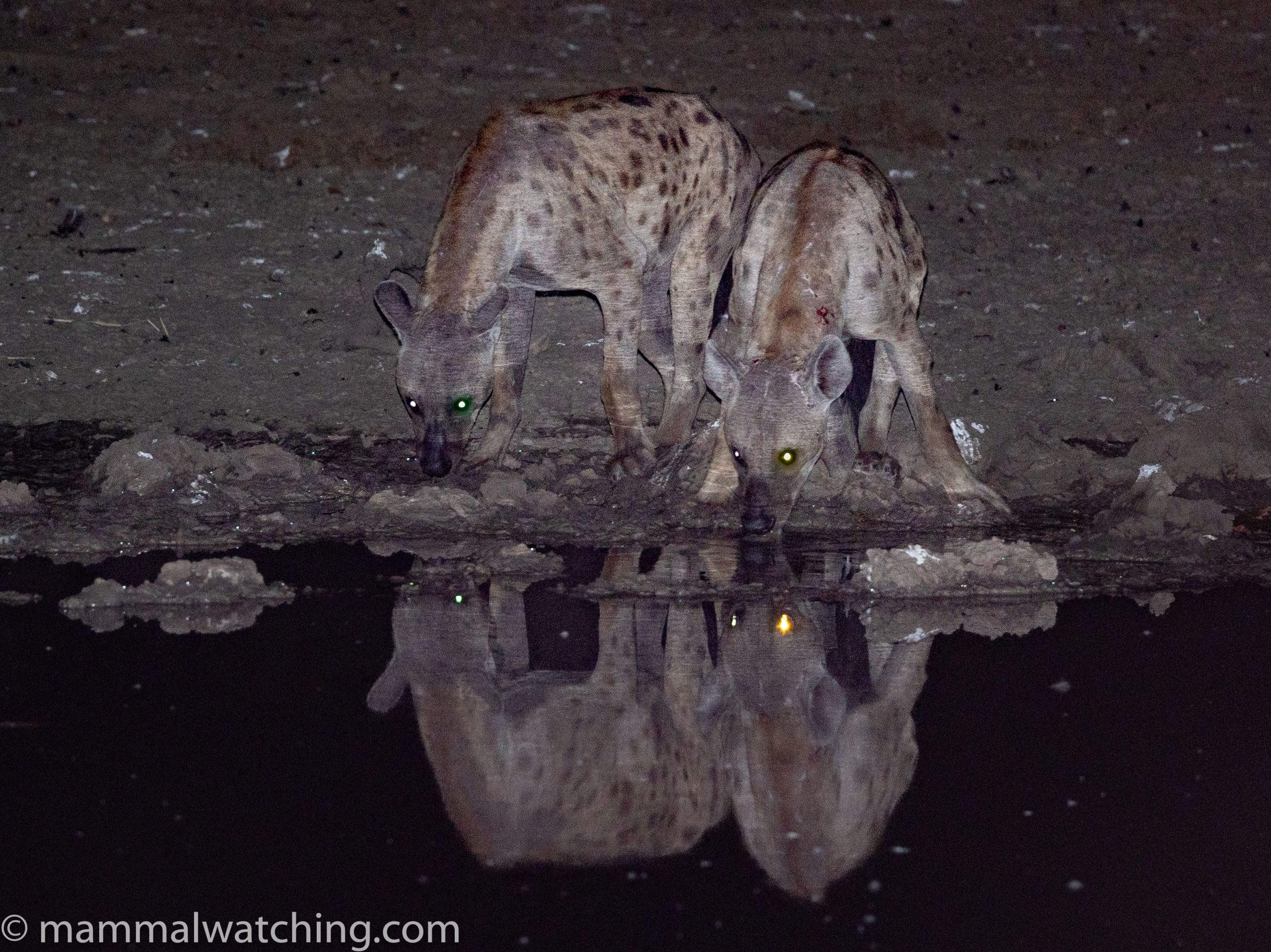
Seen on three nights.
Striped Hyena (Hyaena hyaena)
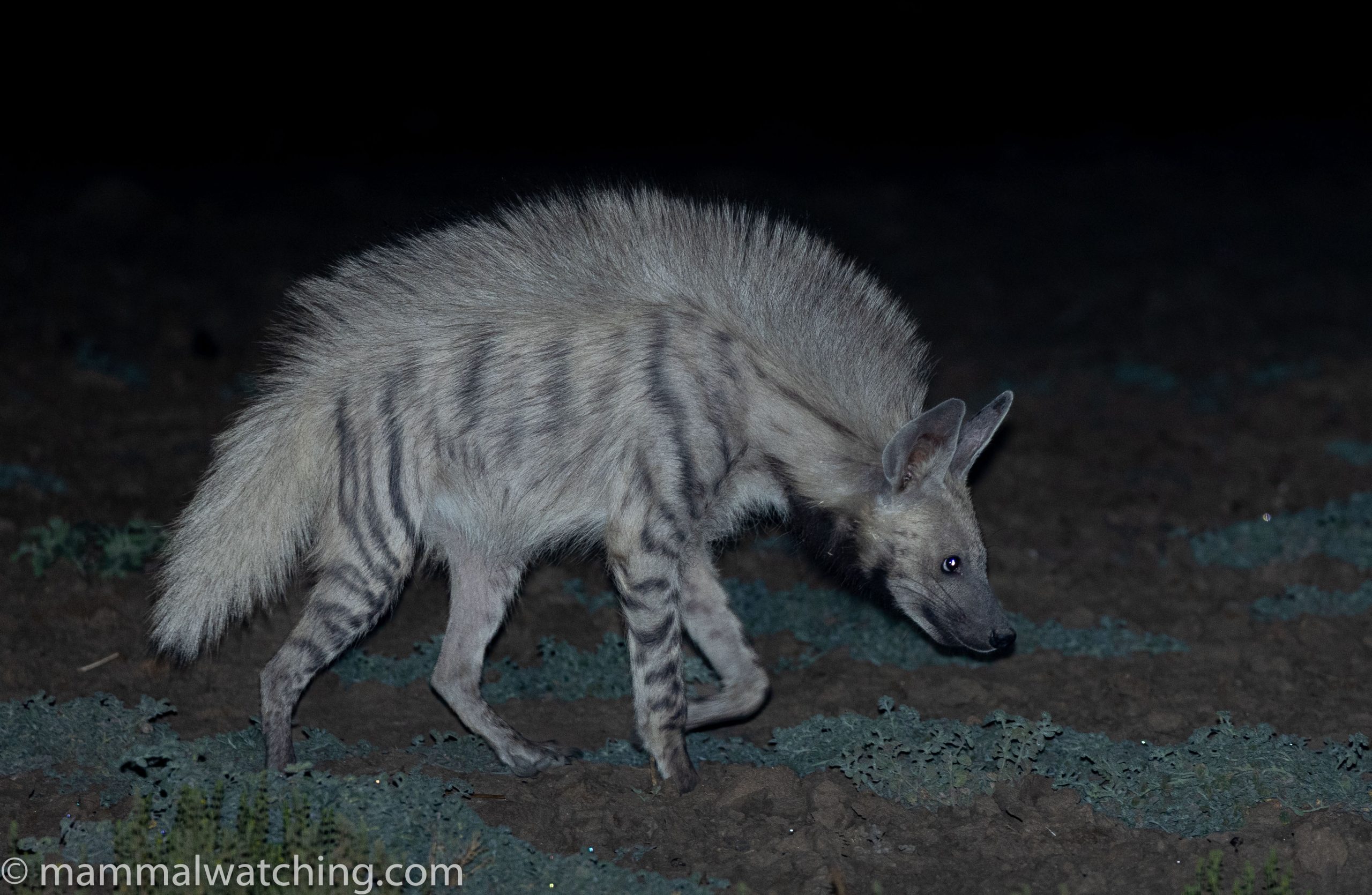
A fabulous encounter with a pair of animals one night.
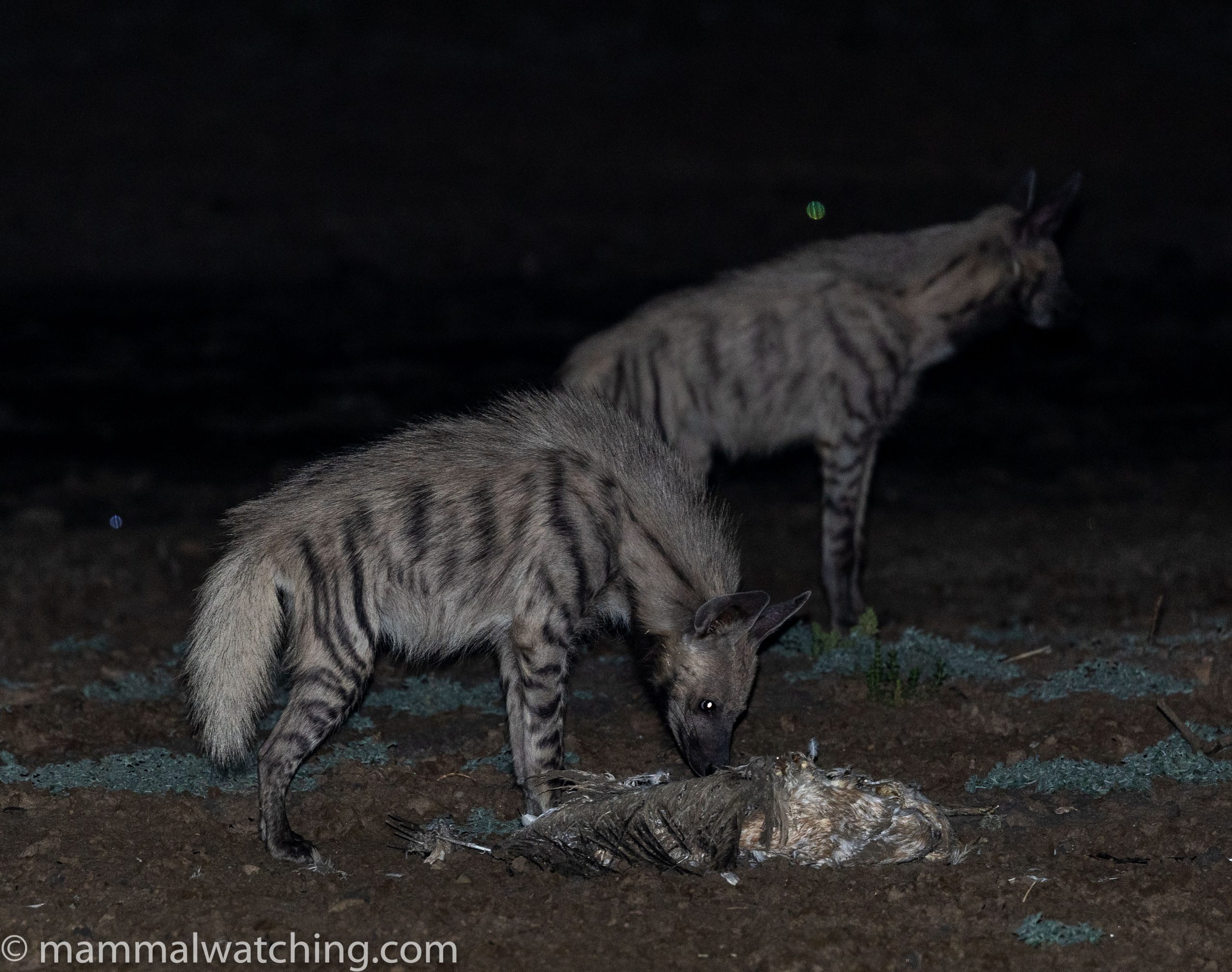
White-tailed Mongoose (Ichneumia albicauda)
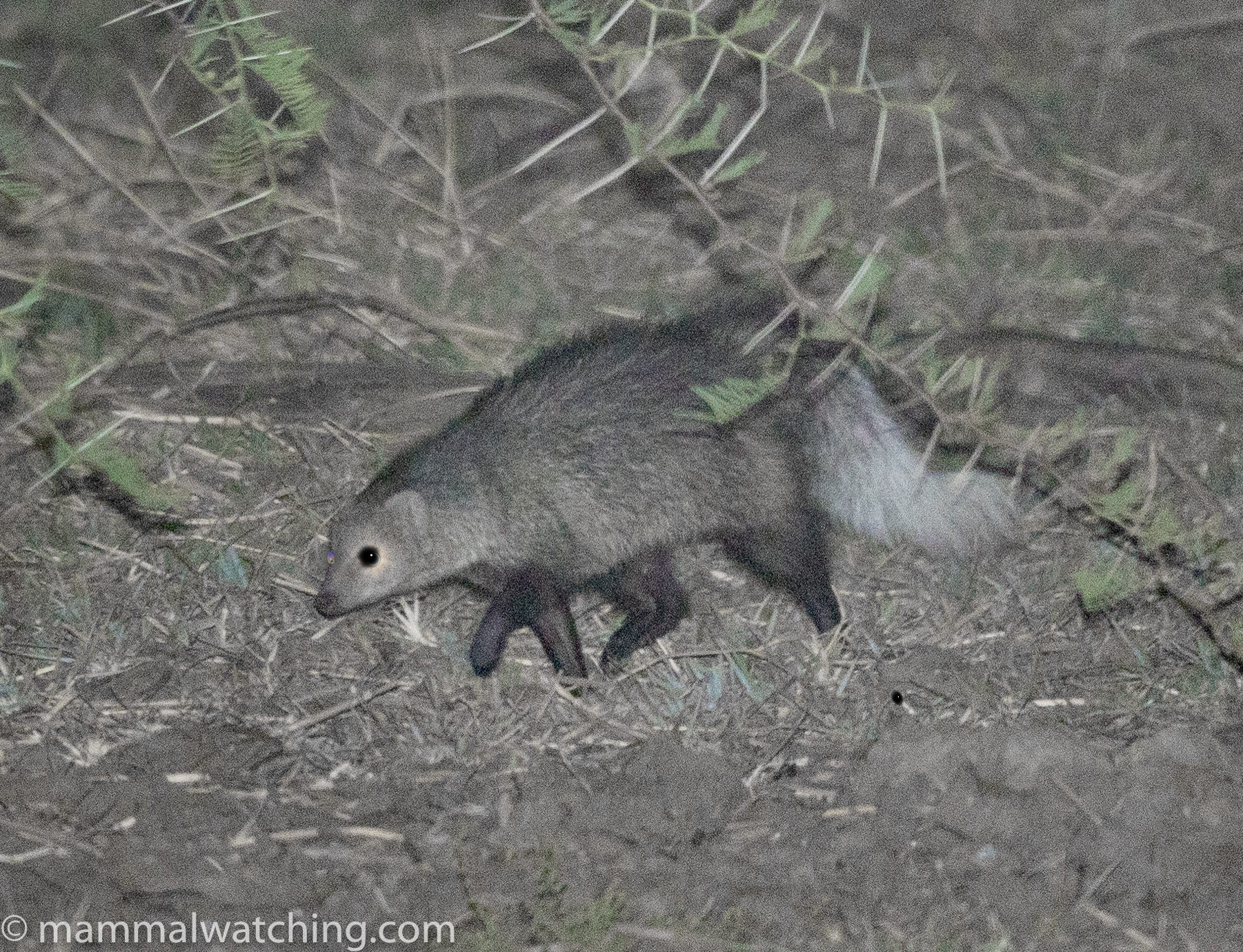
We saw White-tailed Mongooses most nights. There are two morphs in Zakouma: the ‘traditiona’ white-tailed version (above) as well as a dark-tailed White-tailed Mongoose that seemed equally common.
Slender Mongoose (Herpestes sanguineus)
We saw one animal at Goz Djerat in the early morning. It had a strangely bush ttail for this species and ran into a hole halfway up a small tree. We were told that the bushy-tailed form of Slender Mongoose is well known in Zakouma.
Marsh Mongoose (Atilax paludinosus)
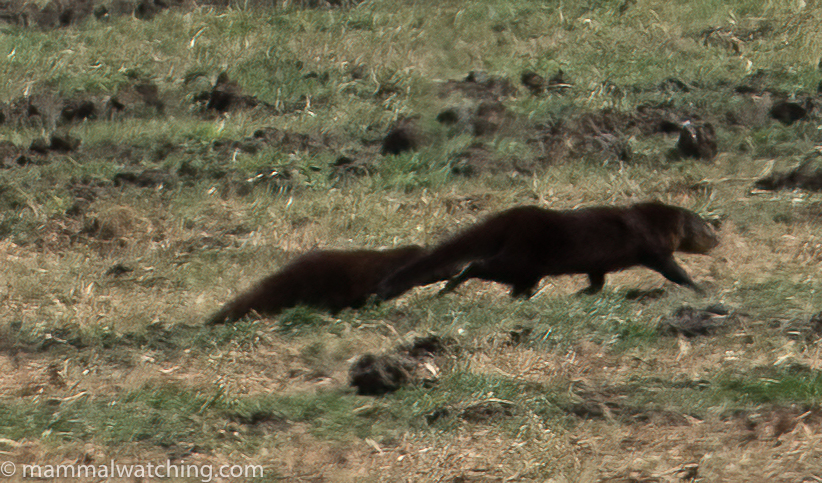
We had a long but distant look at a pair of Marsh Mongoose at around 8am not far from Camp Nomade. This is a species that is rarely recorded in Zakouma and which I don’t recall having seen in daylight before.
Banded Mongoose (Mungos mungo)
We saw mobs of Banded Mongoose most days.
Pale Fox (Vulpes pallida)
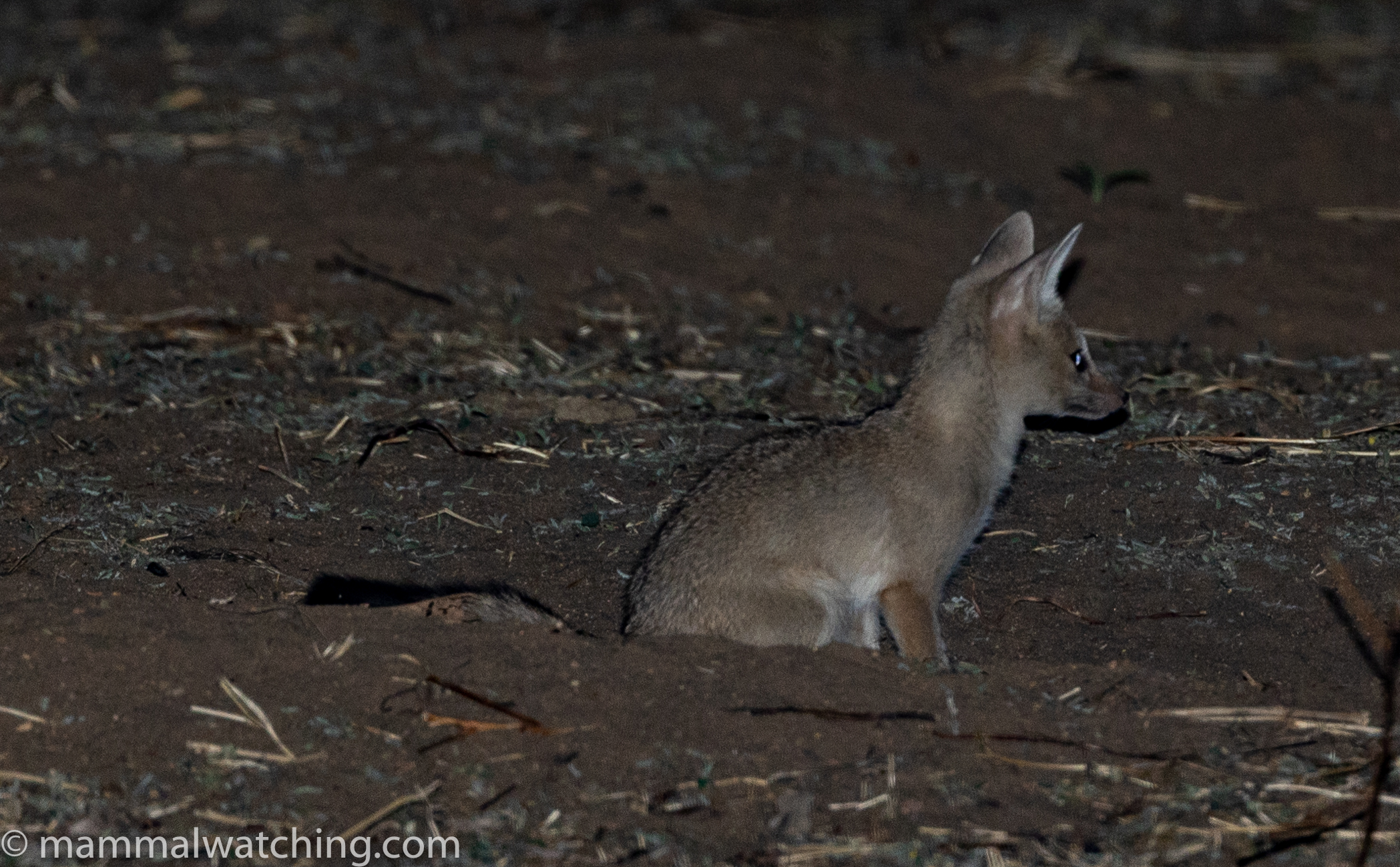
The only Pale Foxes we saw were a pair of cubs at night in the bushland around Goz Djerat village.
Side-striped Jackal (Lupulella adustus)
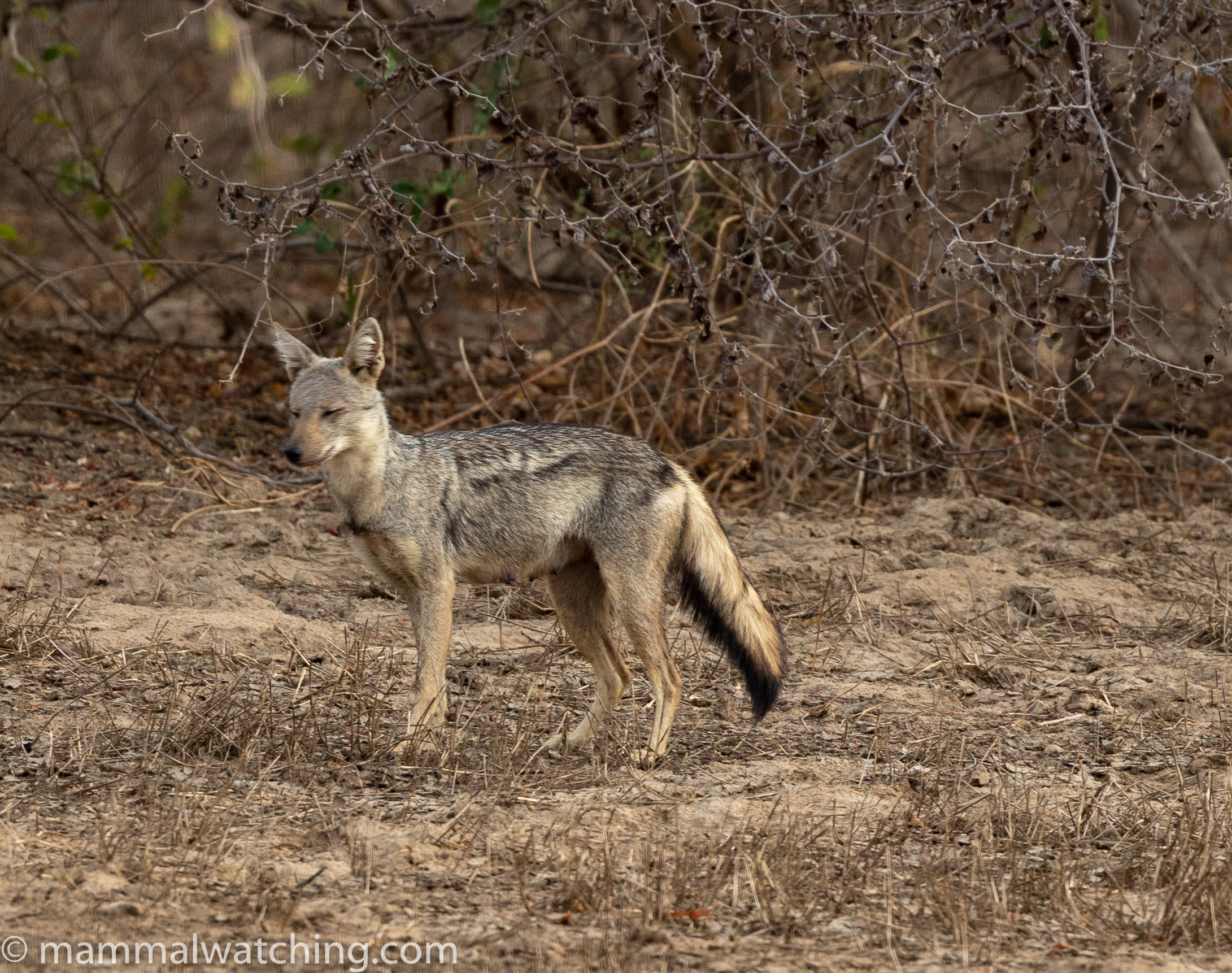
One or two spotted every other day.
Honey Badger (Mellivora capensis)
We saw a distant animal on our last night drive in Zakouma.
Common Warthog (Phacochoerus africanus)
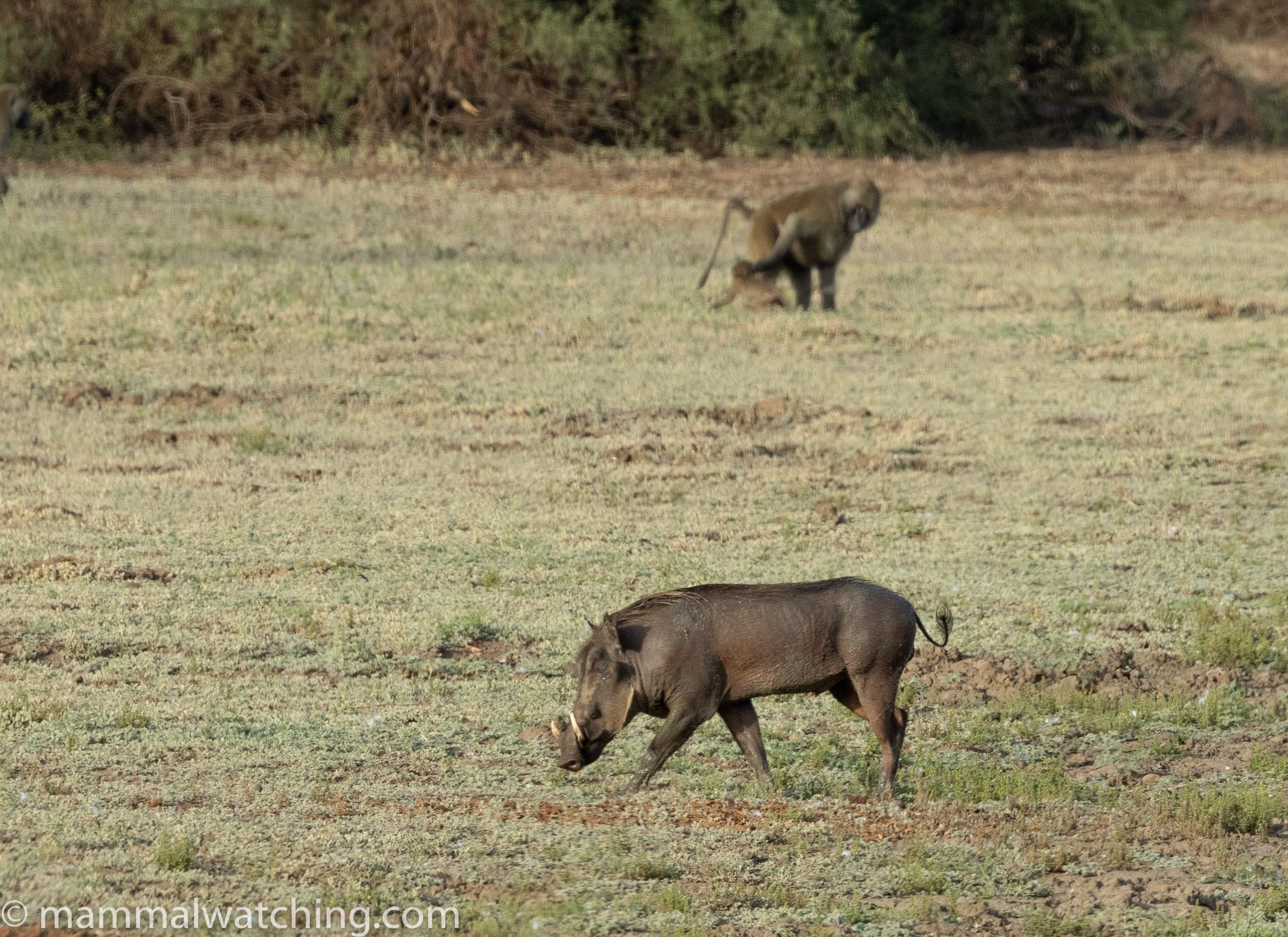
Very common.
African Buffalo (Syncerus caffer)
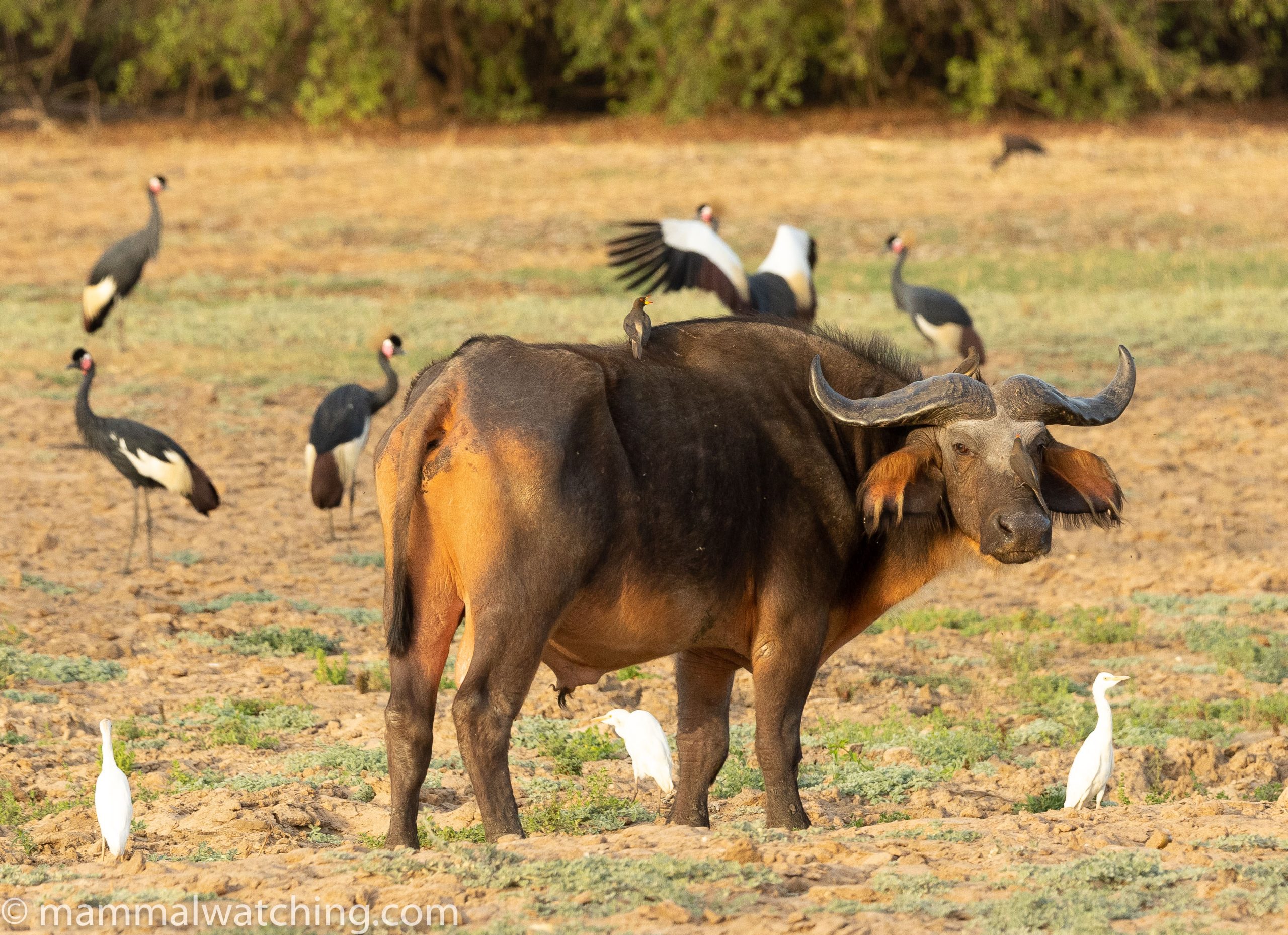
Very common. The Central African subspecies here – aequinoctialis – vary in colour considerably. Some are black and look like the Cape Buffalo (S. c. caffer). Others, such as the animal above, look more like Forest Buffalo (S. c. nanus).
Northern Greater Kudu (Tragelaphus strepsiceros)
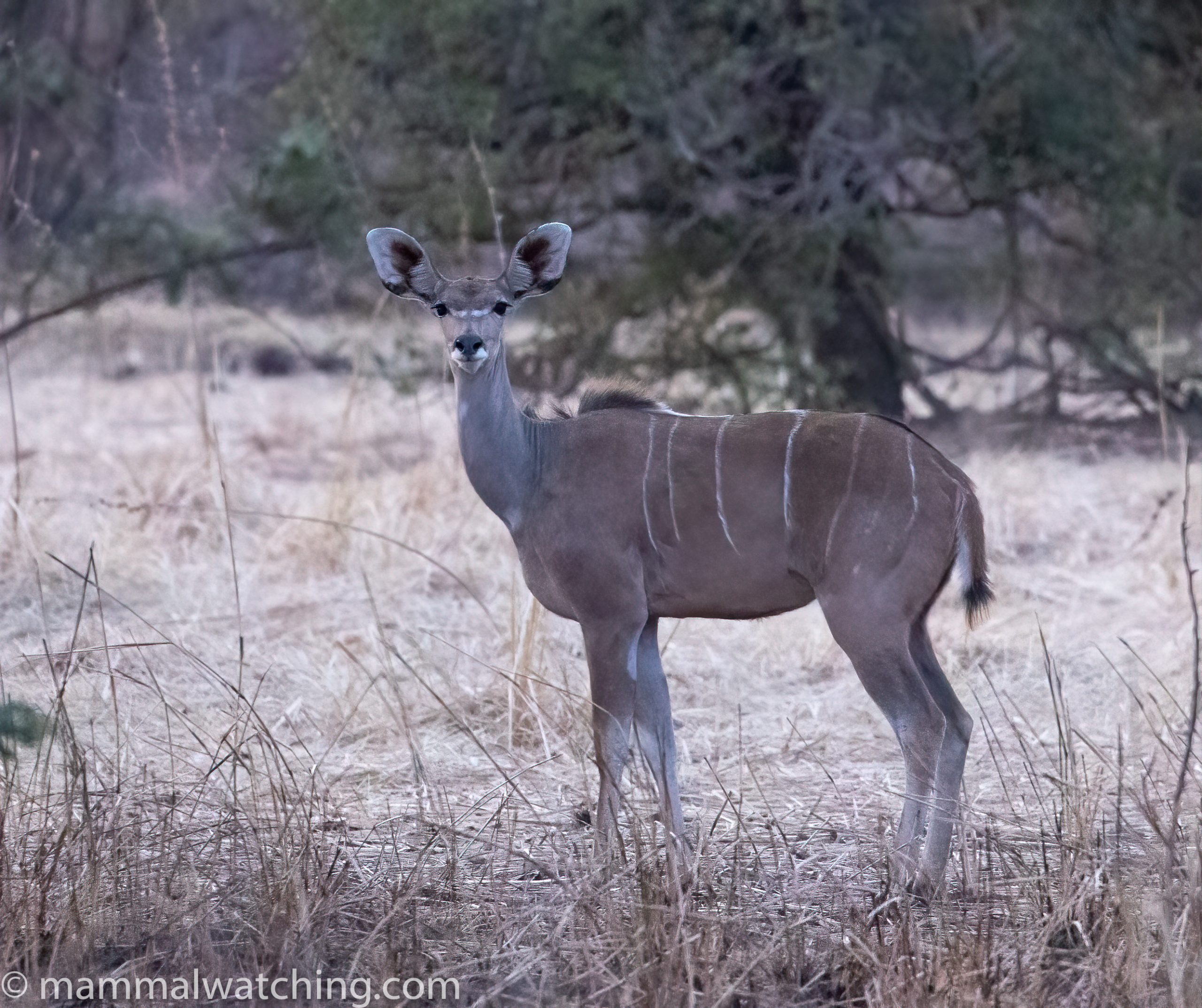
Kudu are quite rare in the park and we saw animals twice. They are apparently easier to find in the southern sections of the park.
Western Bushbuck (Tragelaphus scriptus)
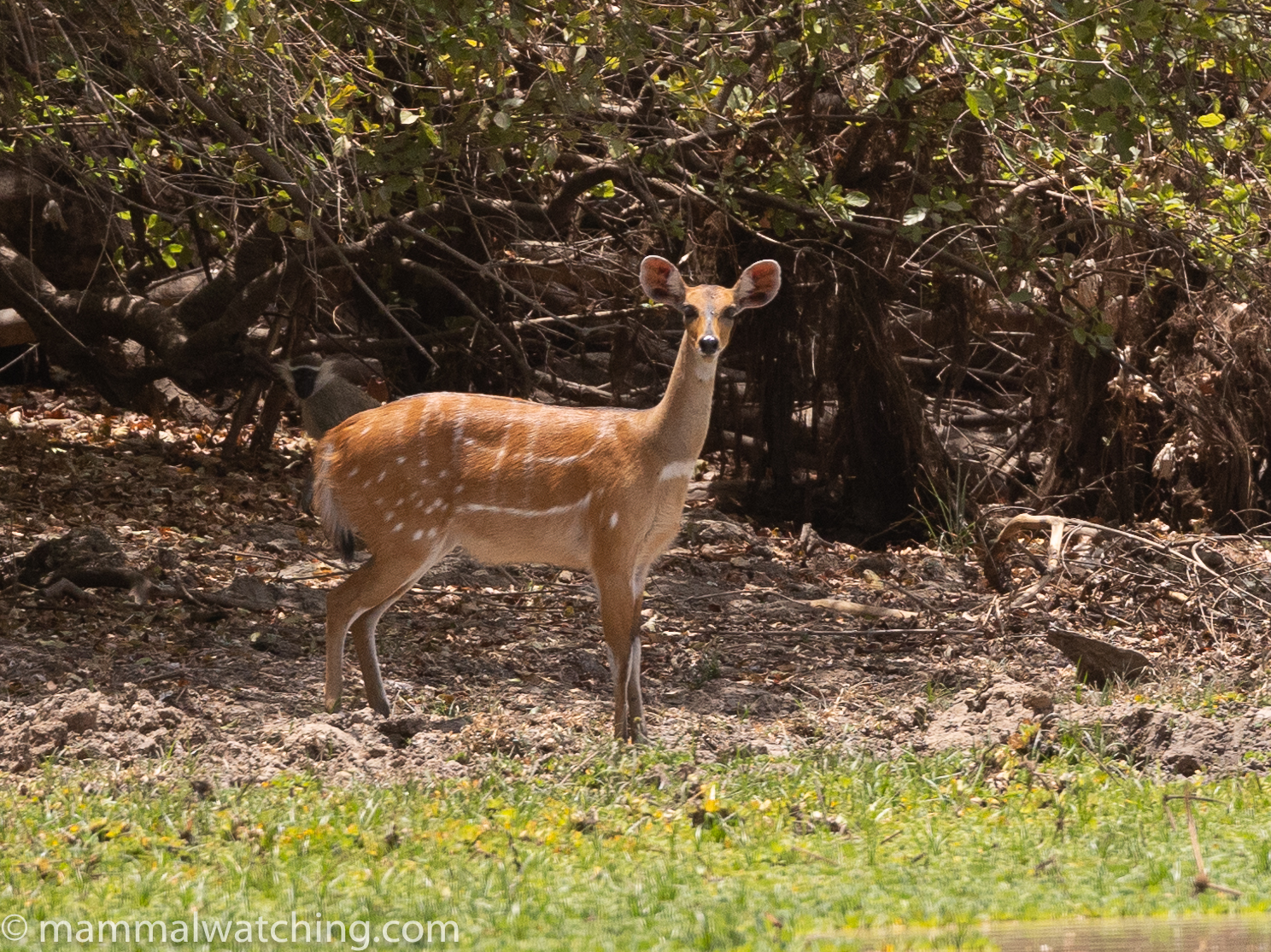
Three times including one in Tinga Camp.
Red-fronted Gazelle (Eudorcas rufifrons)
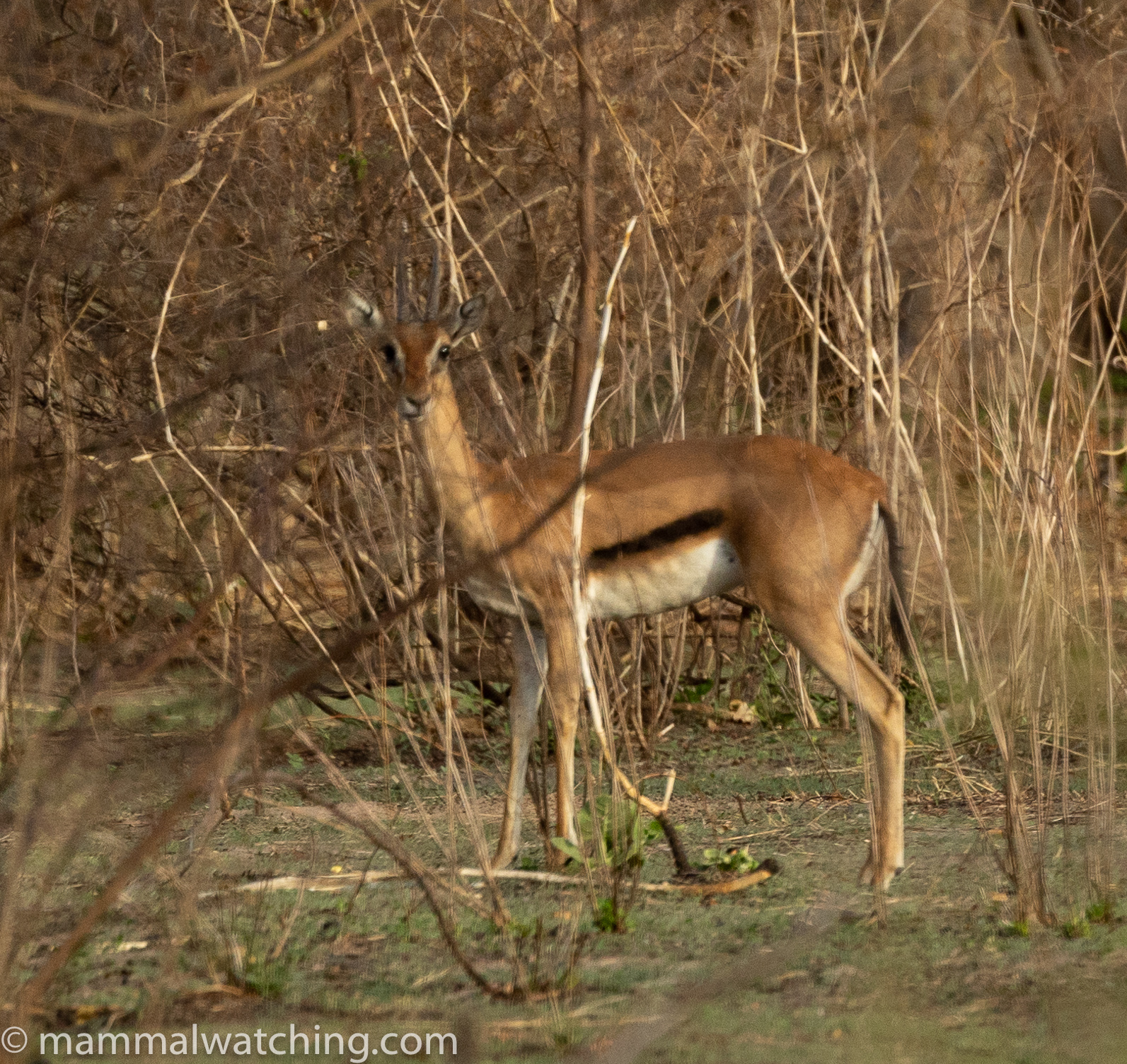
Tom said this species was easier to see outside the park and indeed we saw a group while we were camping several hours north of Zakouma, and several around the village of Goz Djerat. We only saw three or four inside the national park itself.
Oribi (Ourebia ourebi)
Surprisingly difficult to find. We picked up one animal in the thermal scope in the south of the park close to the river on our last evening. Tom saw it well enough to call the species.
Bohor Reedbuck (Redunca redunca)
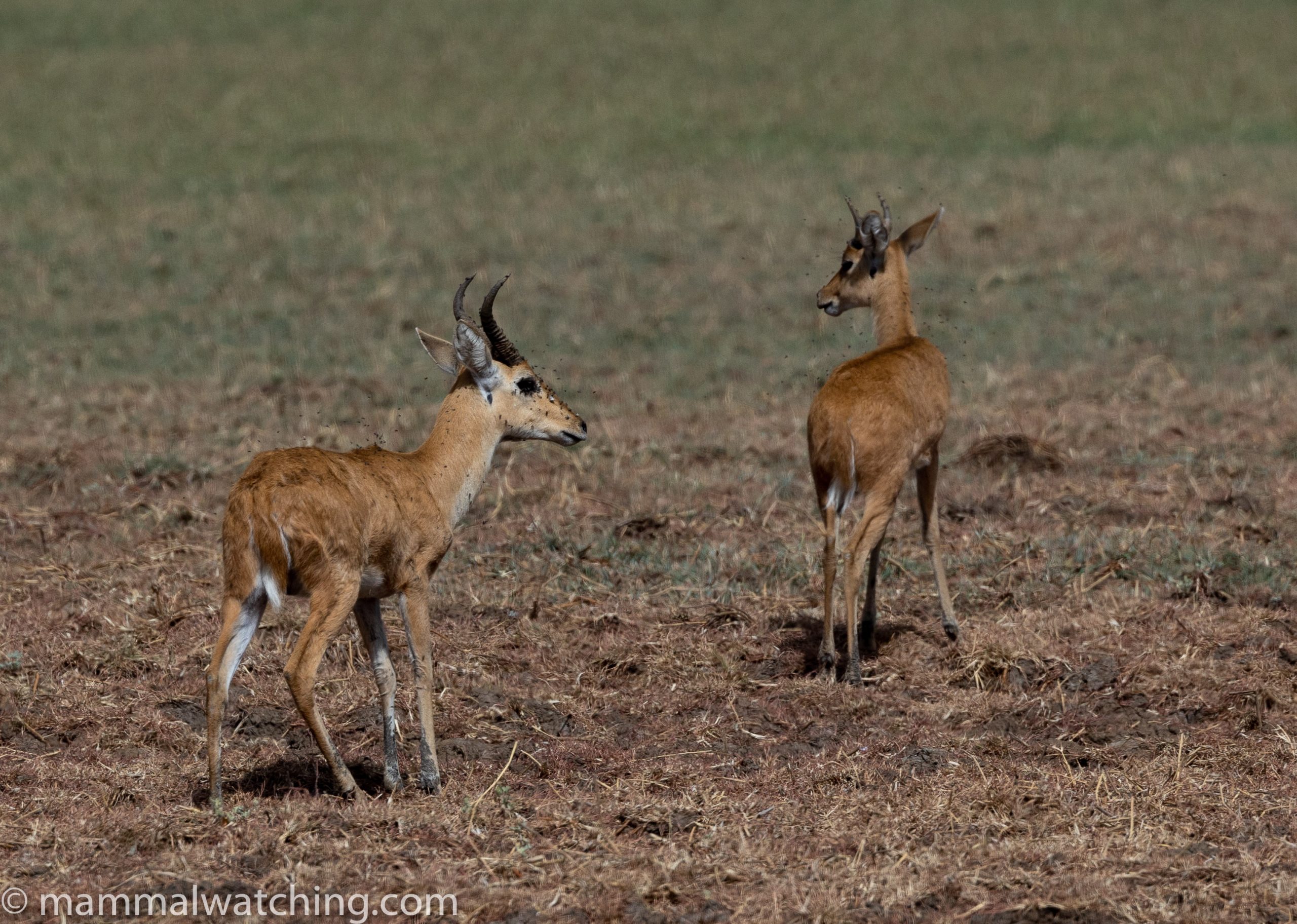
Abundant.
Defassa Waterbuck (Kobus ellipsiprymnus)
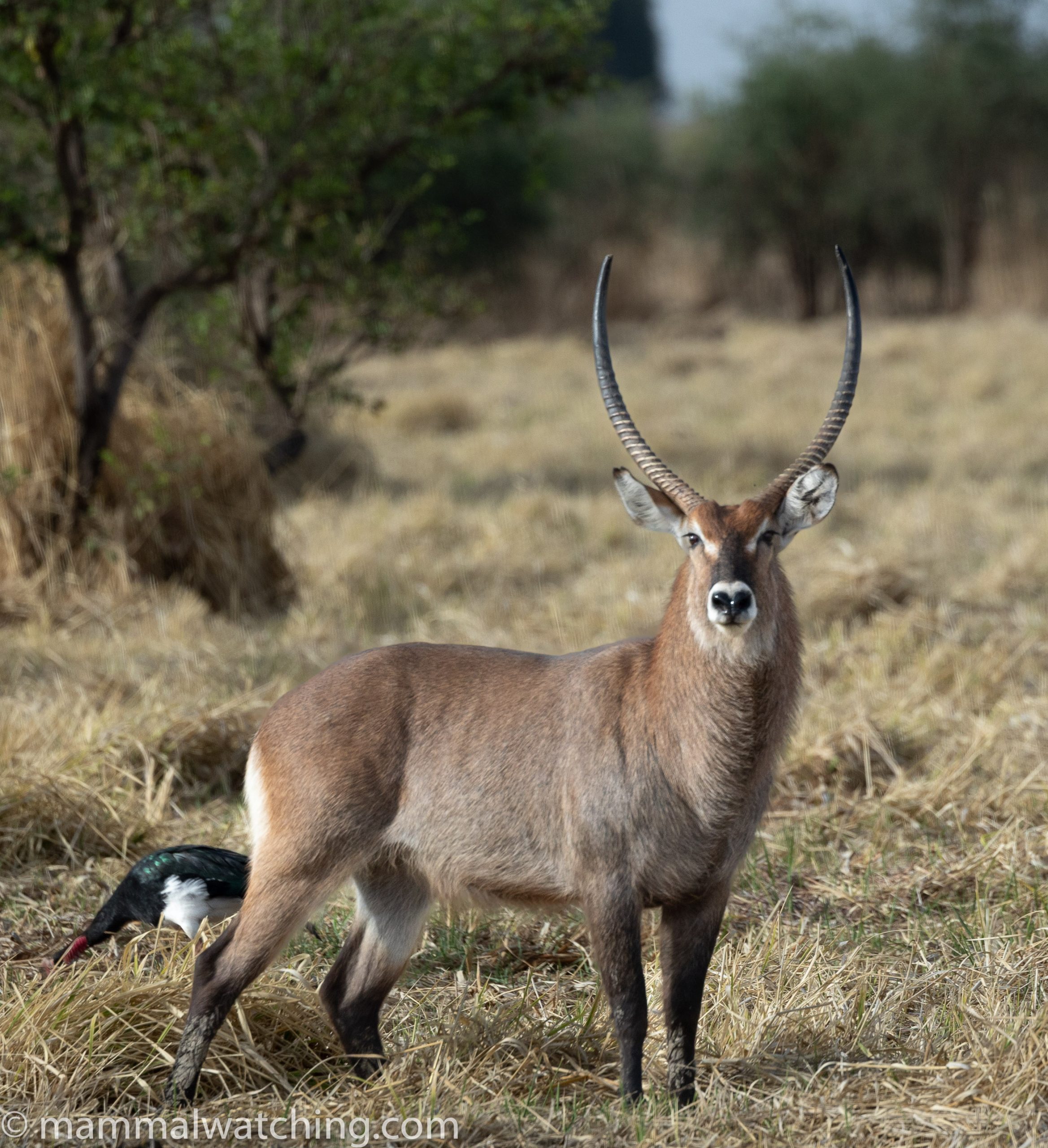
Abundant.
Buffon’s Kob (Kobus kob)
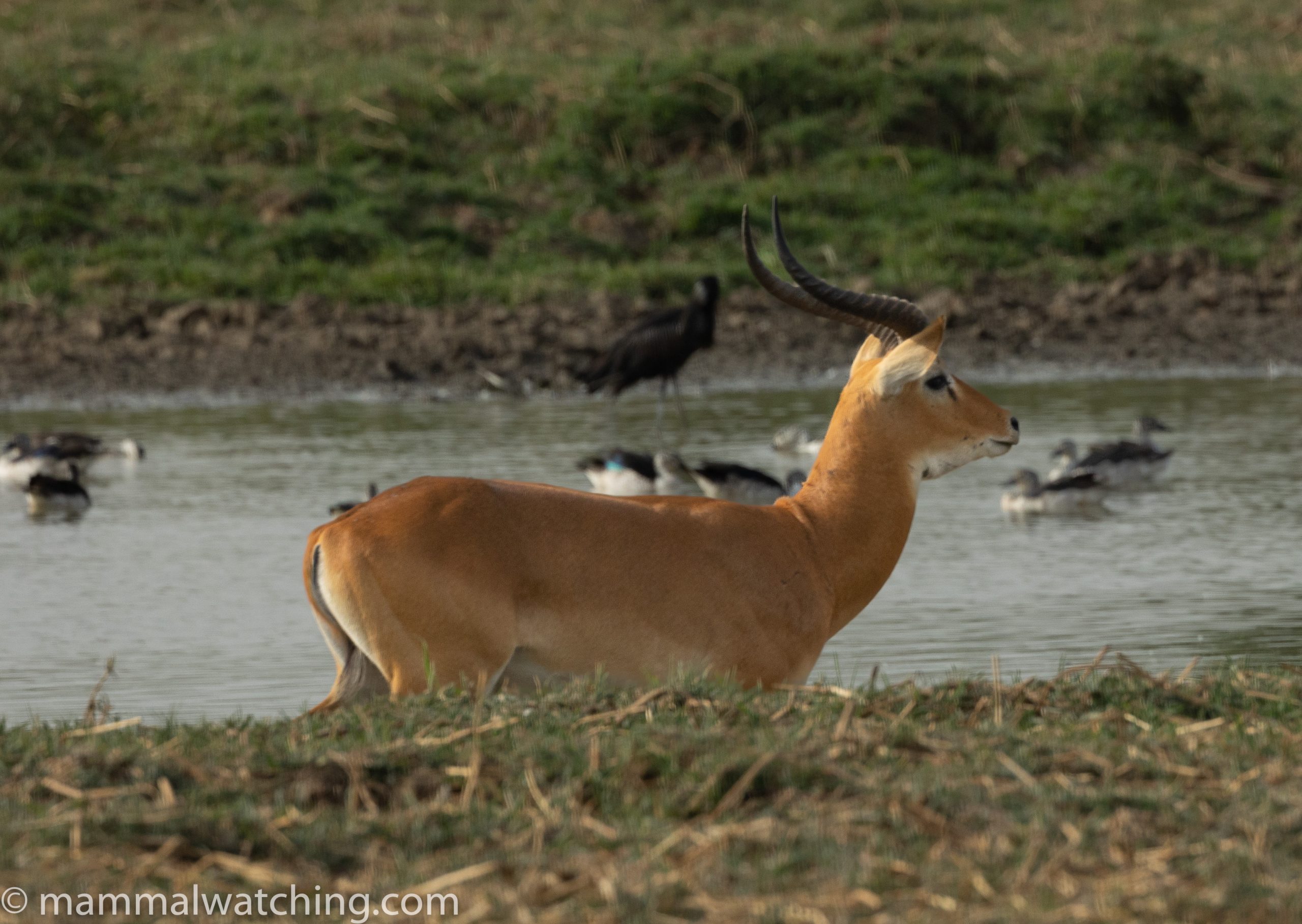
Abundant.
Roan Antelope (Hippotragus equinus)
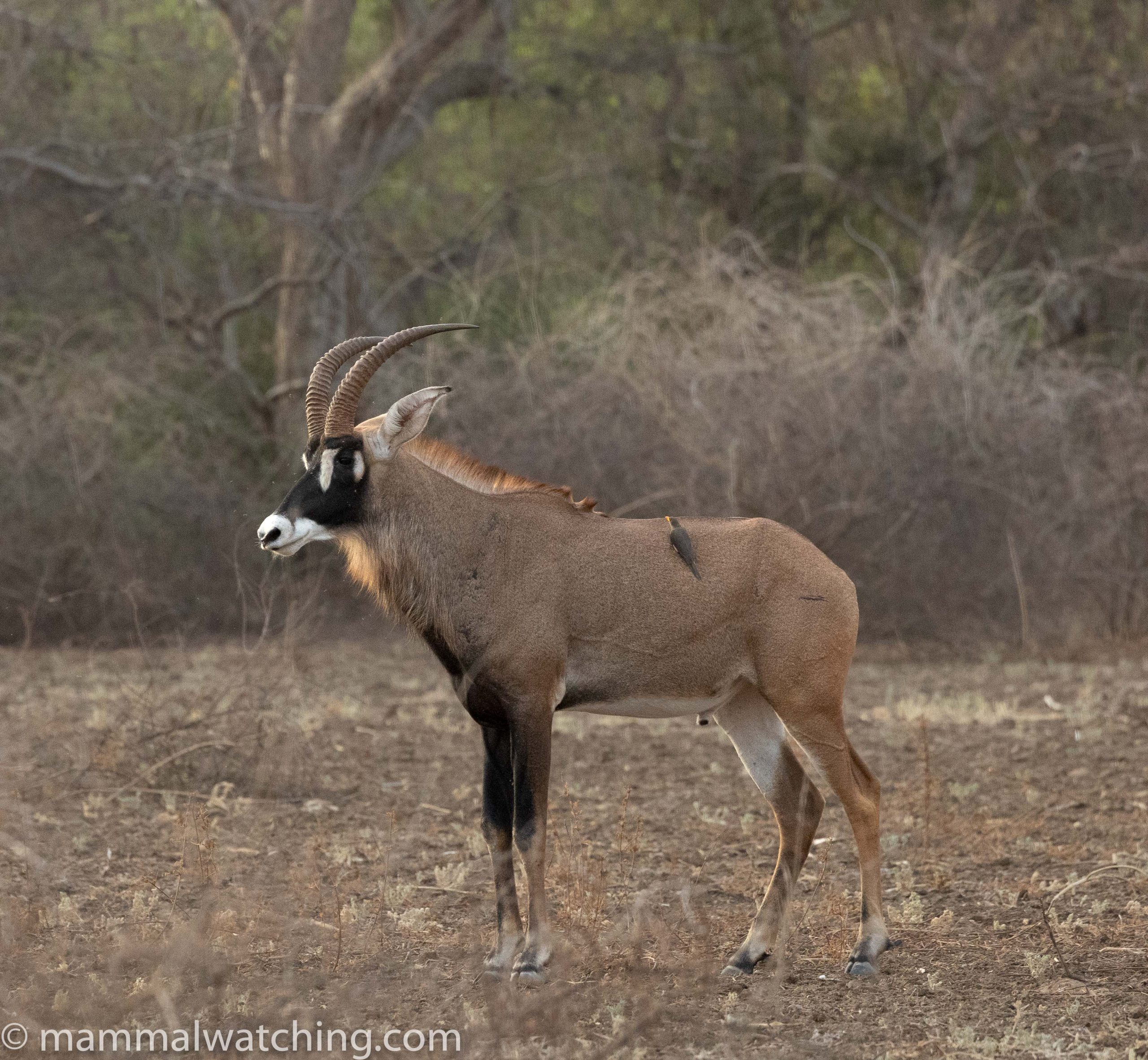
Fairly common. We saw small herds several times.
Lelwel Hartebeest (Alcelaphus buselaphus)
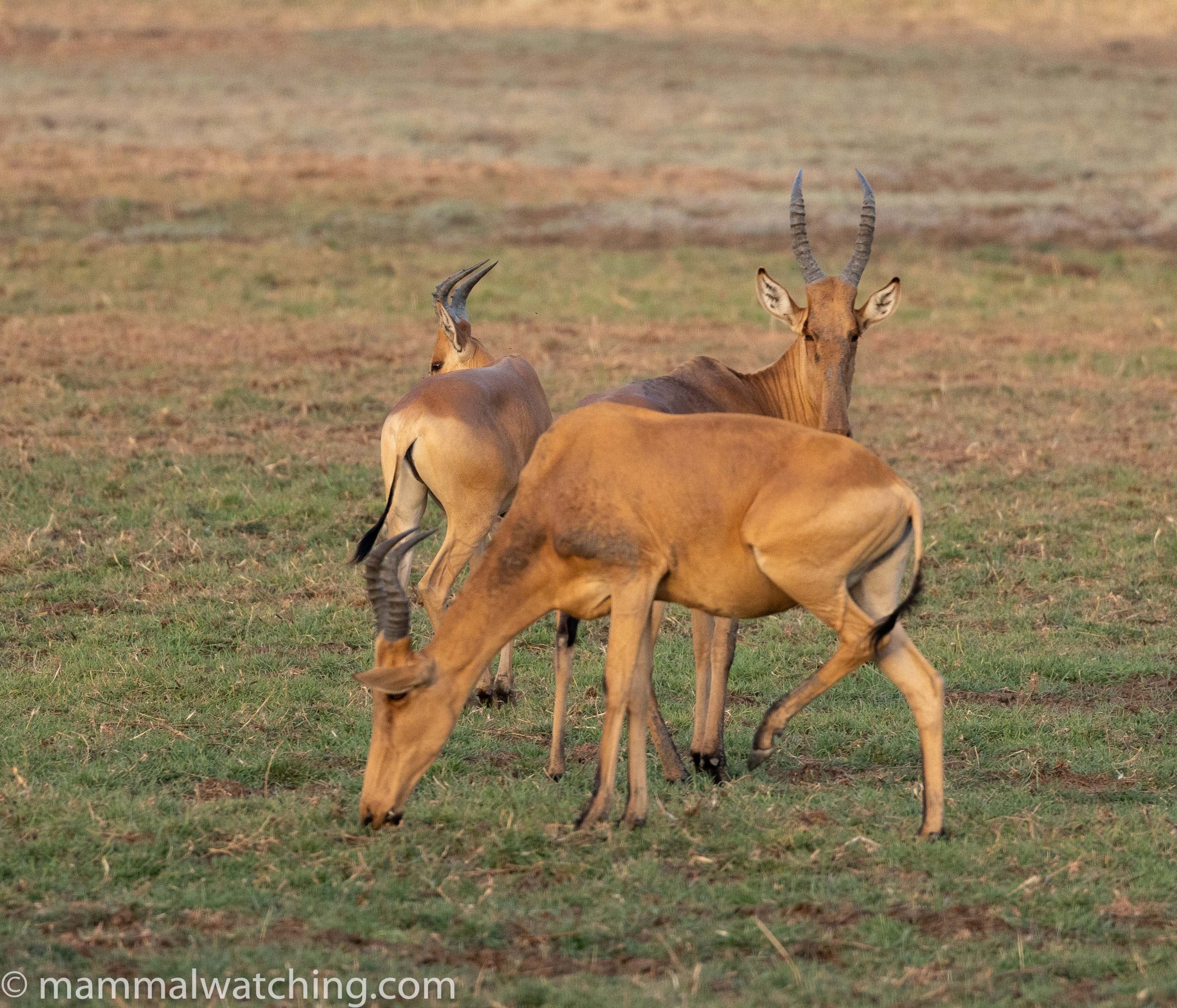
Abundant.
Topi (Damaliscus lunatus)
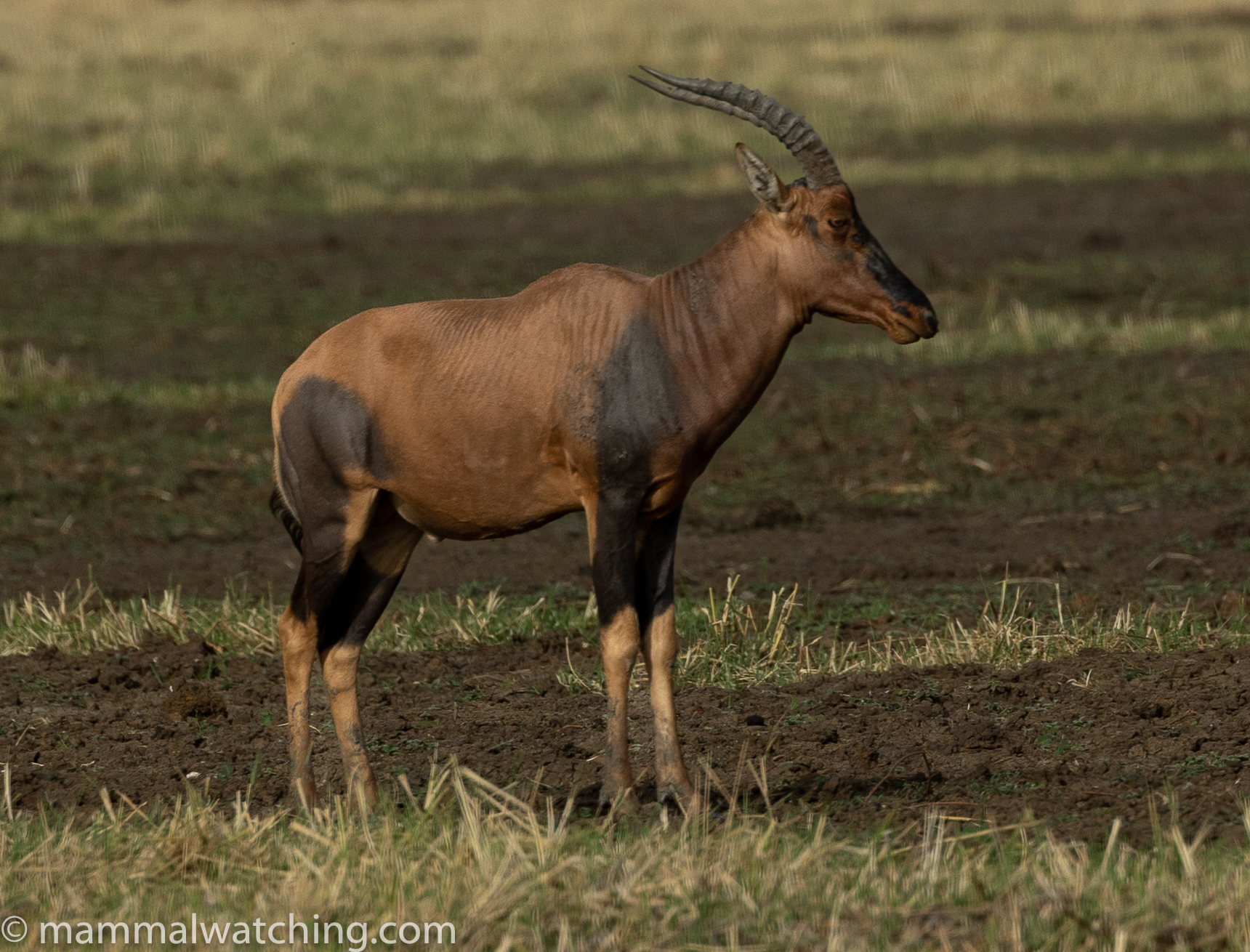
Abundant.
Common Duiker (Sylvicapra grimmia)
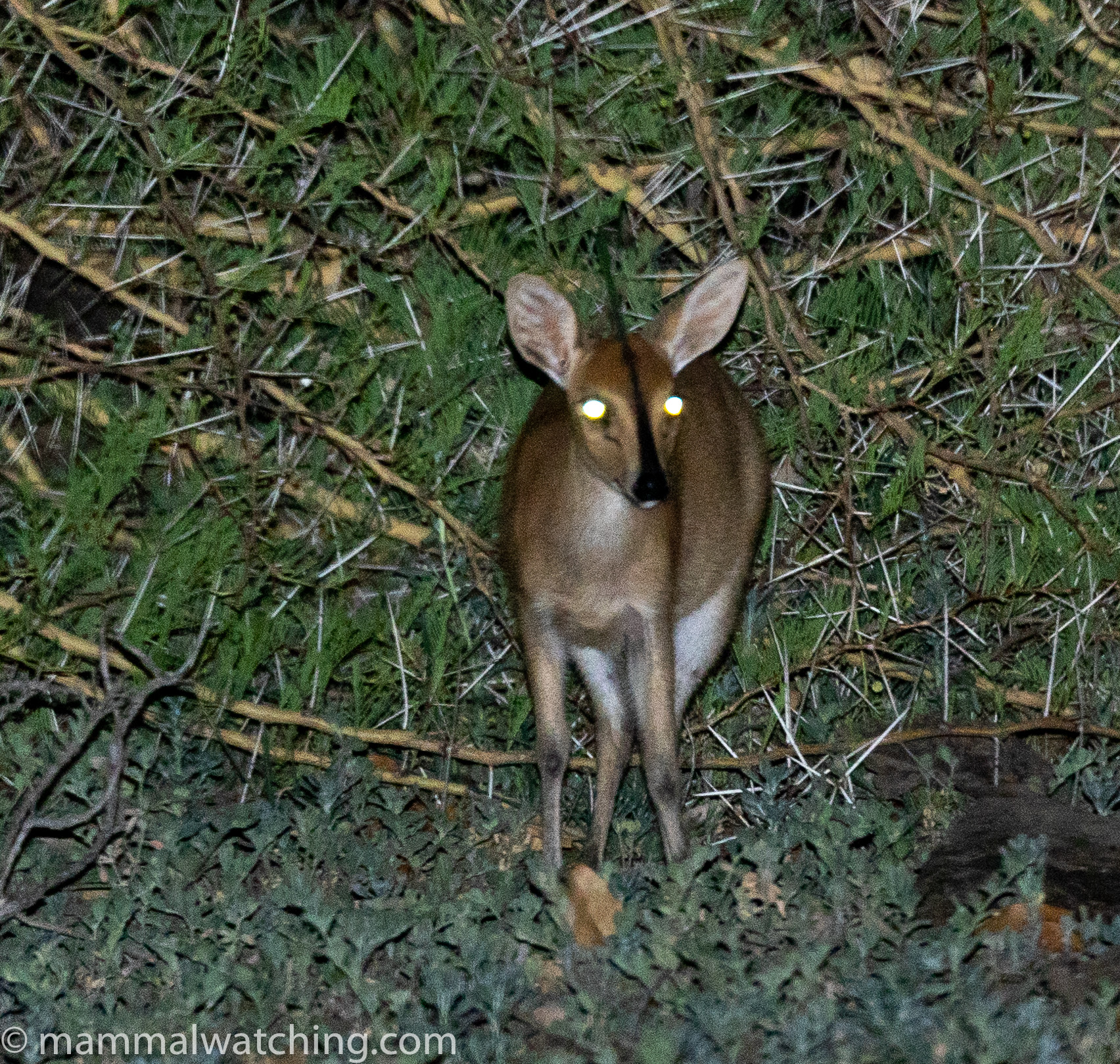
Bush Duiker were common and particularly abundant around Goz Djerat where we must have seen 40+ in one night drive. We checked each animal painstakingly to try to turn it into a Red-flanked Duiker. No joy. But I thank the patience of the rest of the group for indulging me.
Kordofan Giraffe (Giraffa camelopardalis)
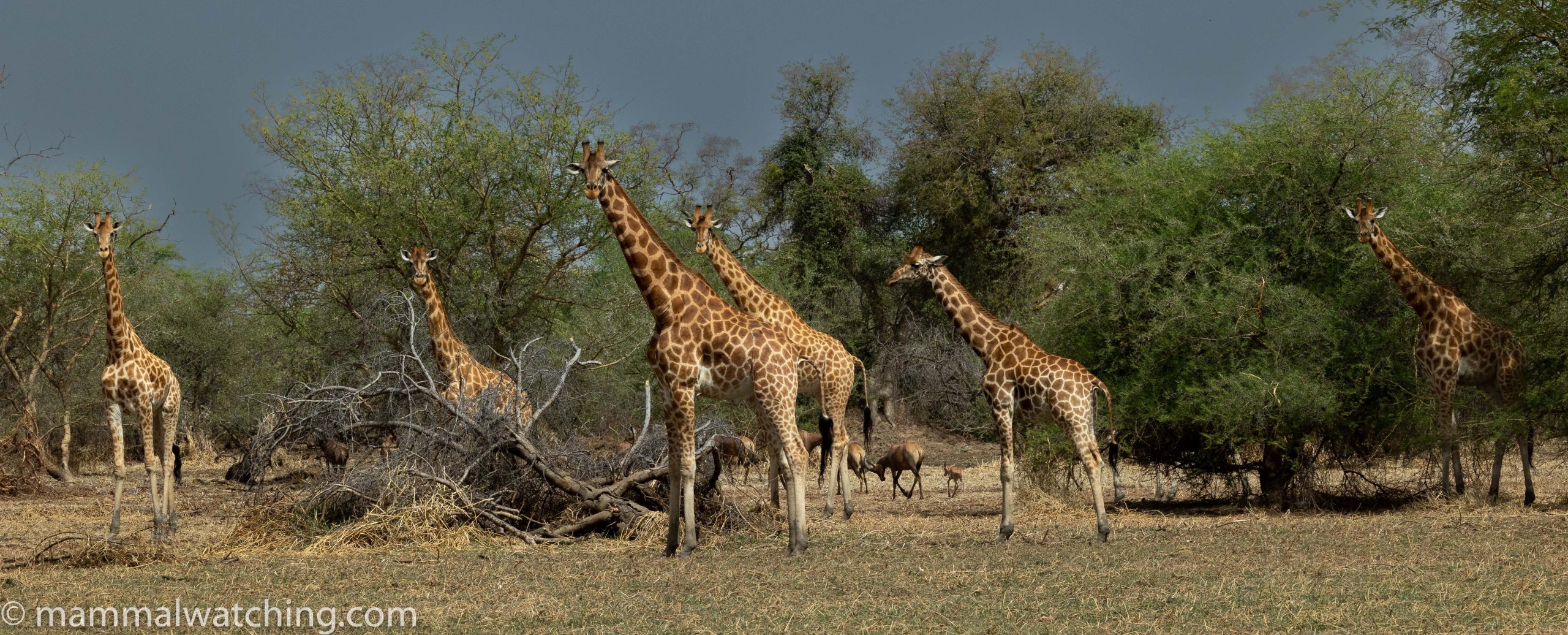
Abundant.
Return to N’Djamena
Leaving Zakouma meant a very hot 14 hour drive back to N’Djamena. Temperatures by now were in the mid-40s. We spent a night camping at the foot of this boulder mountain (here). This was the only night of the trip where the temperatures made sleeping unpleasant.
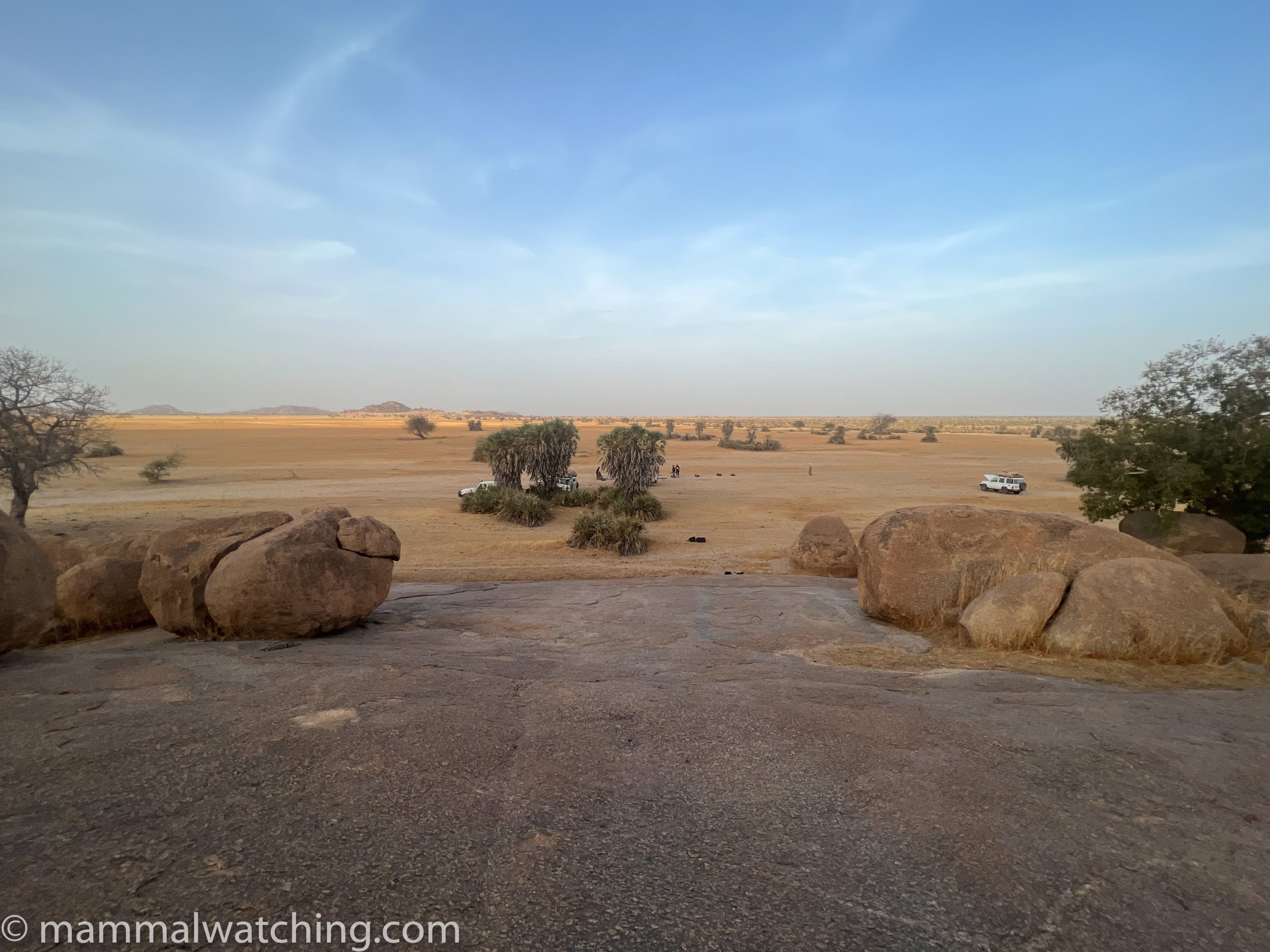
I set 20 traps and caught six of these pretty little spiny mice among the rocks. The only acomys species known from Chad is Johan’s Spiny Mouse.
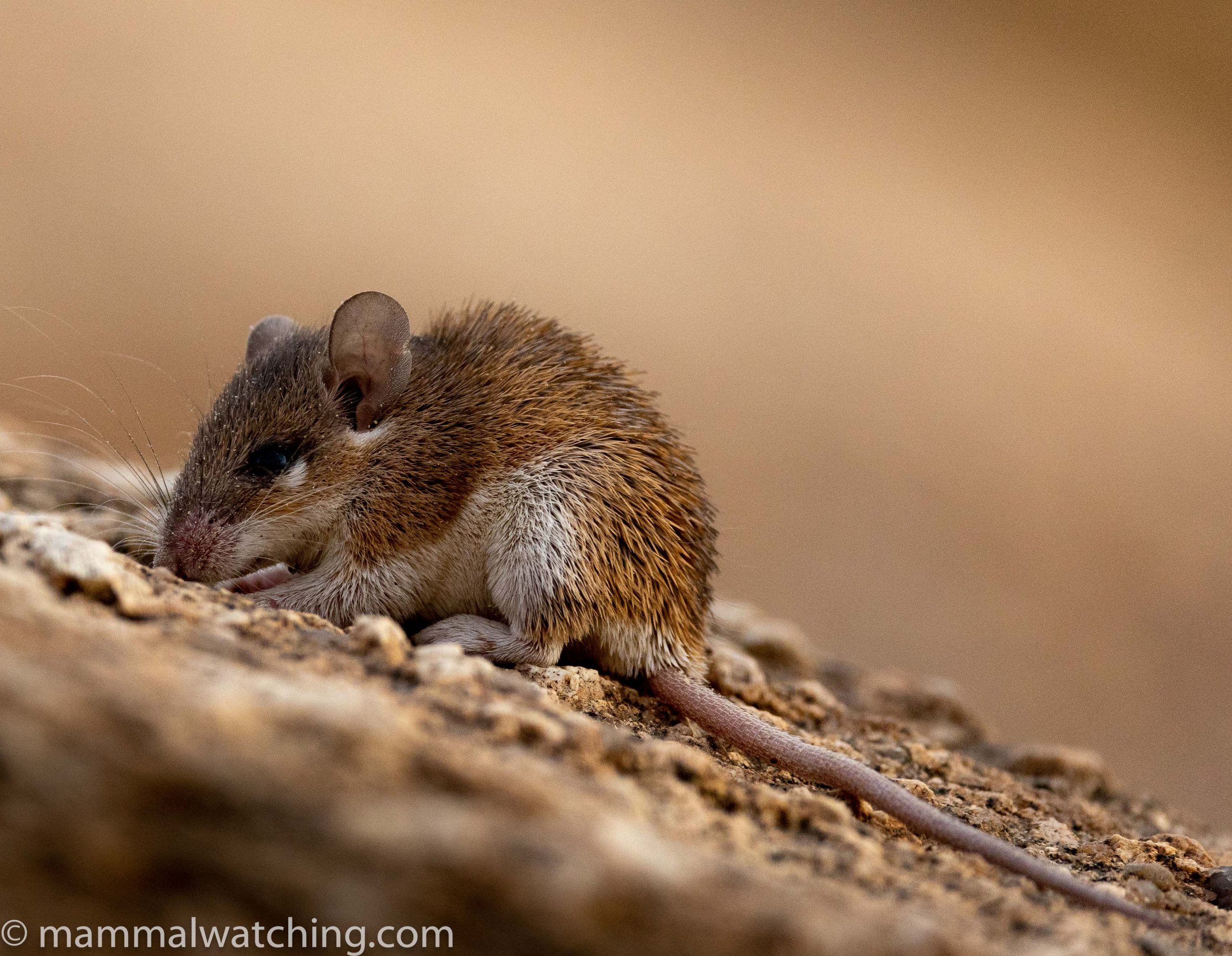
Johan’s Spiny Mouse (Acomys johannis)
And from there it was a few hours drive back to the Radisson Blu for a hot shower and a cold beer before our flights home. What a fabulous trip.
Stuff I Missed
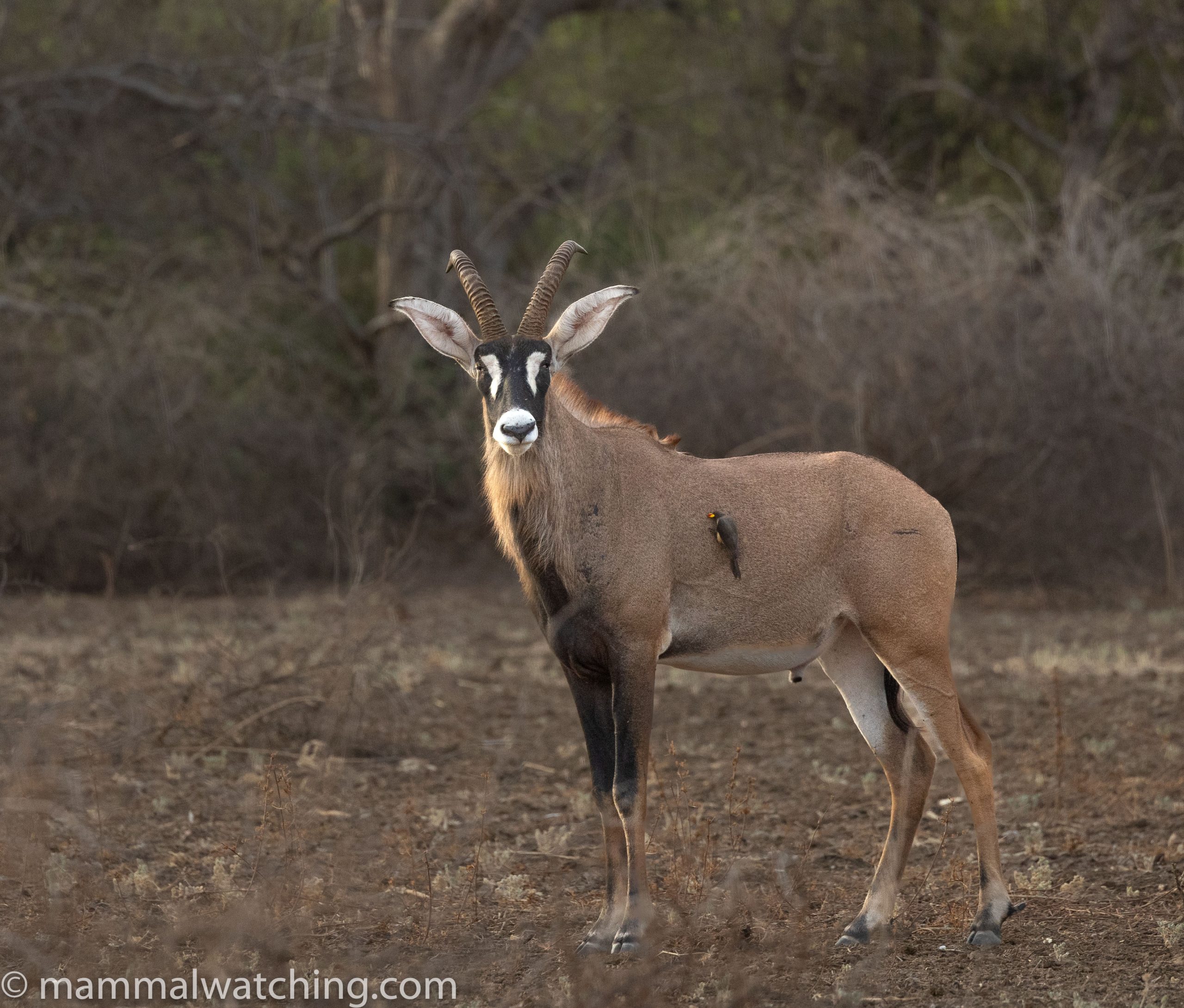
Roan Antelope (Hippotragus equinus). Zakouma
Before I arrived in Chad I had recognised that this trip would not give me a ton of new species. I hoped for 14. In the end I saw 12. However we saw far more species overall – about 70 – than I was expecting. Undoubtedly my biggest disappointment was the Libyan Striped Polecat in Ouadi Rimé. I still cannot type that animal’s name without a pang of emotion! We were just unlucky I think, and perhaps the strong winds at night reduced our chances. We also put in a lot of time looking for Red-flanked Duiker in Zakouma. They are not common there and I suspect we were largely looking into the wrong places. I tried to ask the drivers to focus on a relatively small patch of taller, riparian forest with palm trees, south of Tinga, where Martin Royle’s group had seen them. But those trips didn’t pan out as I’d hoped. We sped through the forest and then looked in other places. Martin Royle’s group saw two animals here after spending more time in this bit of forest looking for a ‘desirable’ bird (a barbet I think).
There was a very small chance of seeing an Aoudad in Ennedi but we didn’t try. They are still there, but best seen from the air, on the tops of more remote peaks. In Zakouma I was hoping we might run into an Egyptian Mongoose which are uncommonly seen there. We only saw one small mammal in Zakouma. During a cooler, wetter time of year I suspect the small mammal trapping and activity around Tinga Camp would be much more productive.
Last Words
Thank you very very much to Tom Clode at Pictus for pulling this together and running the trip so well and so carefully. Chad must be an extremely hard place to organise things in but with Tom at the helm it felt like a trip to Disneyland. Thank you to Robin Lines and Amanda Salb at African Parks for their help with arranging permission for me to trap small mammals and to Moussa Sougui from African Parks for trapping with me and being such a great guide. Thanks too to Tim Wacher and Kher at Ouadi-Rimé for being the perfect hosts and guides and a huge thank you to the rest of our team – Brendan and Dan, Ian, Jo and Nicky. The trip would not have been anywhere near as enjoyable without you! Plus an additional thank you to Dan Nugent for proof reading this so quickly and to Nicky Dunnington-Jefferson for finding even more mistakes and for making a ton of other improvements.
Chad is a very special place for both its scenery and biodiversity. The region is safe today but who knows for how long. Go while you can.
Species List
Rock Hyrax (Procavia capensis)
African Elephant (Loxodonta africana)
Aardvark (Orycteropus afer)
Cape Hare (Lepus capensis)
Savanna Hare (L.victoriae)
North African Crested Porcupine (Hystrix cristata)
Striped Ground Squirrel (Euxerus erythropus)
Gambian Sun Squirrel (Heliosciurus gambianus)
Hamada Jerbil (Jaculus deserti)
Lesser Egyptian Jerboa (Jaculus jaculus)
Johan’s Spiny Mouse (Acomys johannis)
Congo Gerbil (Taterillus congicus)
Pleasant Gerbil (Gerbillus amoenus)
Lesser Egyptian Gerbil (G.gerbillus)
Pygmy Gerbil (G.henleyi)
Nigerian Gerbil (G.nigeriae)
Tarabul’s Gerbil (G.tarabuli)
Pouched Gerbil (Desmodilliscus braueri)
Heuglin’s Lemniscomys (Lemniscomys zebra)
House Rat (Rattus rattus)
Northern Lesser Galago (Galago senegalensis)
Olive Baboon (Papio anubis)
Common Patas Monkey (Erythrocebus patas)
Tantalus Monkey (Chlorocebus tantalus)
Desert Hedgehog (Paraechinus aethiopicus)
Egyptian Mouse-tailed Bat (Rhinopoma cystops)
Yellow-winged Bat (Lavia frons)
Arabian Horseshoe Bat (Rhinolophus clivosus)
Hairy Slit-faced Bat (Nycteris hispida)
Large-eared or Egyptian Slit-faced Bat (N.macrotis. N. thebaica)
Midas Mops Bat (Mops midas)
Lion (Panthera leo)
Leopard (P.pardus)
Serval (Leptailurus serval)
Caracal (Caracal caracal)
African Wild Cat (Felis lybica)
African Civet (Civettictis civetta)
Common Genet (Genetta genetta)
Central African Large-spotted Genet (G.maculata)
Spotted Hyena (Crocuta crocuta)
Striped Hyena (Hyaena hyaena)
White-tailed Mongoose (Ichneumia albicauda)
Slender Mongoose (Herpestes sanguineus)
Marsh Mongoose (Atilax paludinosus)
Banded Mongoose (Mungos mungo)
Pale Fox (Vulpes pallida)
Rüppel’s Fox (V.rueppellii)
Fennec Fox (V.zerda)
Side-striped Jackal (Lupulella adustus)
African Golden Wolf (Canis lupaster)
Honey Badger (Mellivora capensis)
Common Warthog (Phacochoerus africanus)
Hippopotamus (Hippopotamus amphibius)
African Buffalo (Syncerus caffer)
Greater Kudu (Tragelaphus strepsiceros)
Western Bushbuck (T.scriptus)
Dama Gazelle (Nanger dama)
Dorcas Gazelle (Gazella dorcas)
Red-fronted Gazelle (Eudorcas rufifrons)
Oribi (Ourebia ourebi) – not by me
Bohor Reedbuck (Redunca redunca)
Waterbuck (Kobus ellipsiprymnus)
Kob (K.kob)
Roan Antelope (Hippotragus equinus)
Addax (Addax nasomaculatus)
Scimitar-horned Oryx (Oryx dammah)
Hartebeest (Alcelaphus buselaphus)
Topi (Damaliscus lunatus)
Common Duiker (Sylvicapra grimmia)
Giraffe (Giraffa camelopardalis)
70 species, 12 lifers in bold.
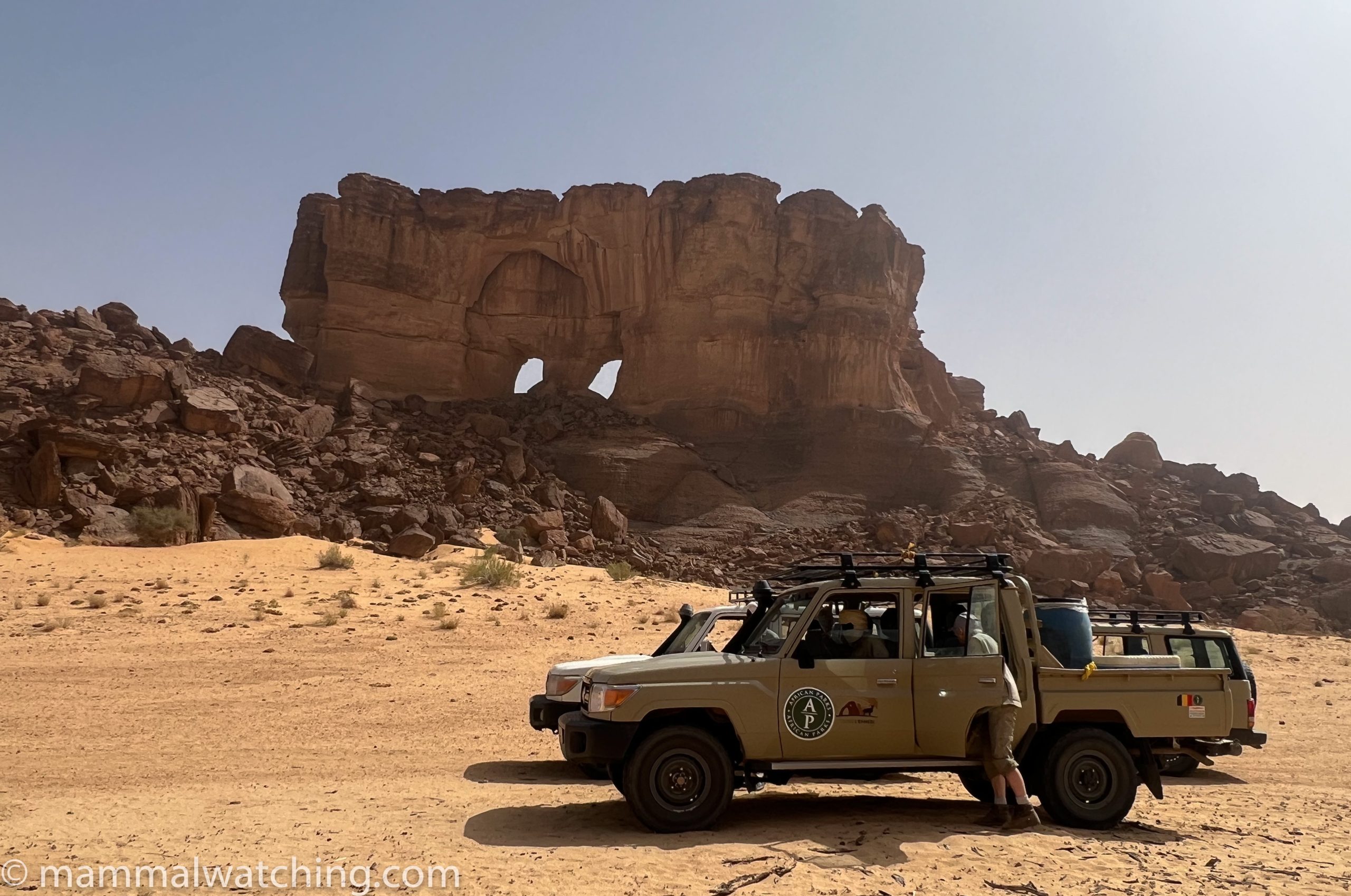
Post author
2 Comments
Leave a Reply
You must be logged in to post a comment.


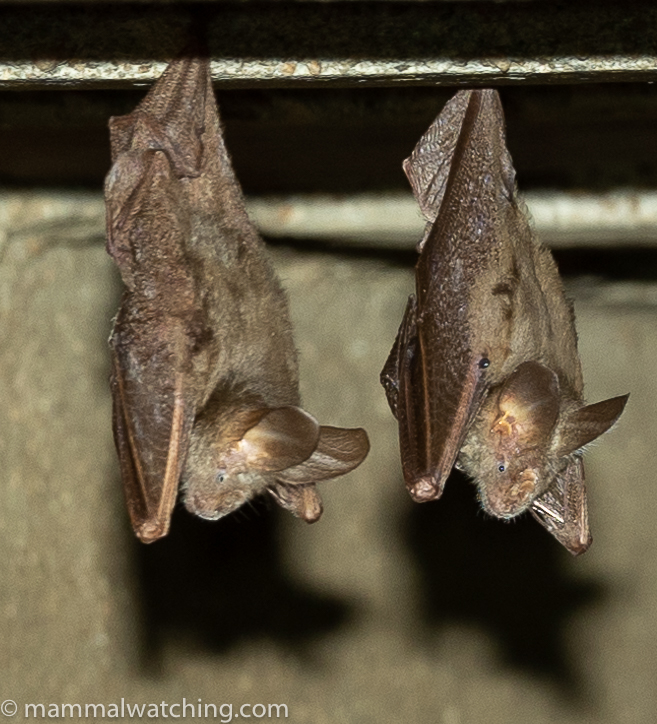
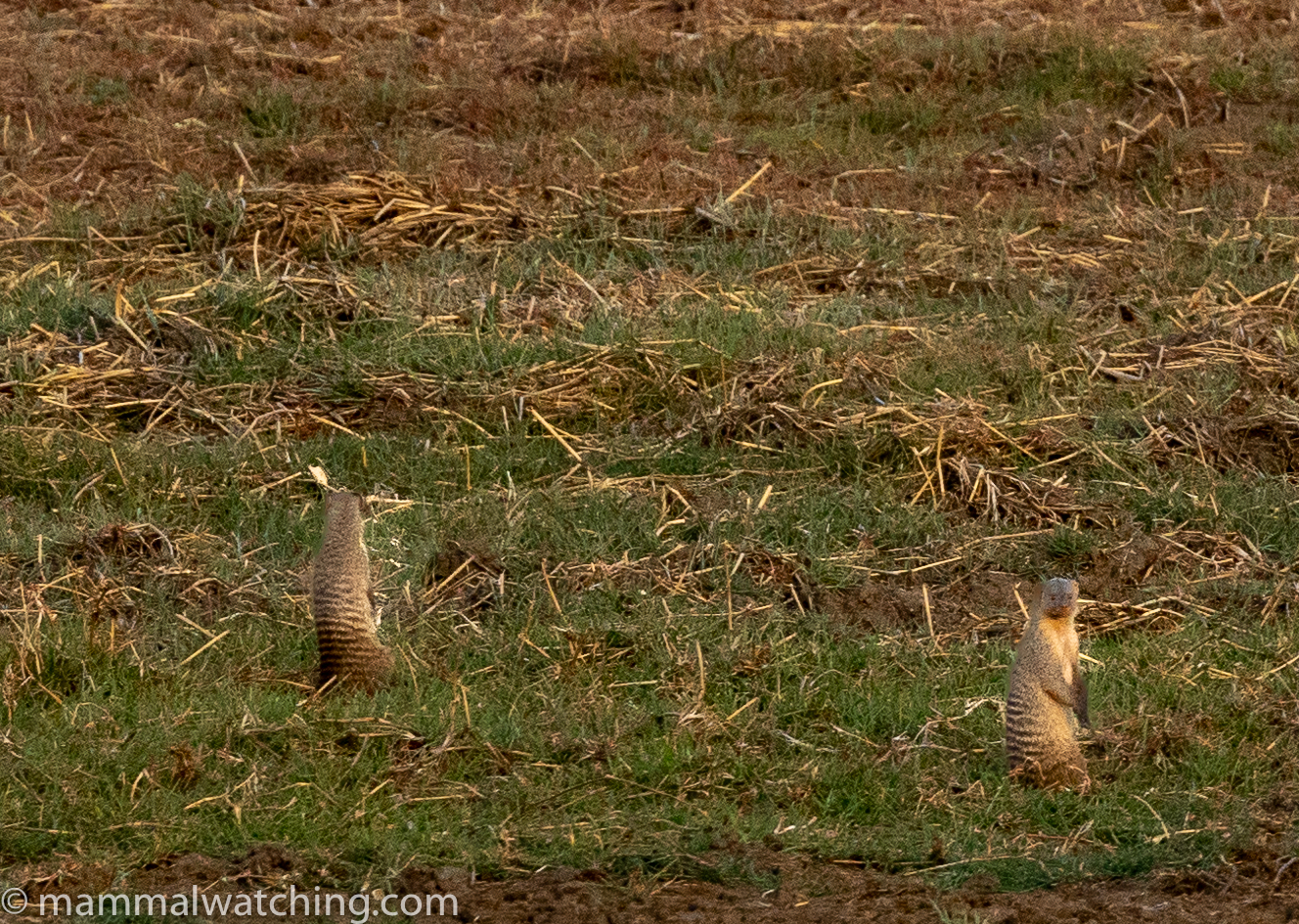
Vladimir Dinets
Do not despair, I’m planning to organize a short trip to Tunisia next year with LSW being one of the target species.
What a pretty Acomys… and the only one I’m missing 🙁
You can reliably tell apart the two jerboas based on habitat, but not the hares. Your two photos look like the same species. If forced under torture to ID them I’d probably lean towards Cape hare, but most likely all these common names are not applicable to hares from the Sahel northward, and it will take at least a few years and a huge pan-African whole-genome sequencing effort to figure out what’s going on there.